



















The reliability, resiliency and efficiency of the Electric Power Grid depend on a network of optical infrastructure and innovative substation and conductor accessories. AFL has been providing aluminum, copper and fiber optic solutions to electric utilities for more than 100 years. Let AFL help you improve the reliability of your electrical and optical infrastructure.
Visit AFL at booth # 6608 during IEEE PES T&D Conference and Exposition 2024.


One technology company offers innovative line-powered monitoring systems and shares some breathtaking images from its equipment in this gallery. Images shared here include scenes from Norway, Iceland and Turkey.... https://tdworld.com/21283270

The Biden Administration and the Department of Energy recently announced billions of dollars in funding to strengthen the resilience of the North American power grid.... https://tdworld.com/21282600
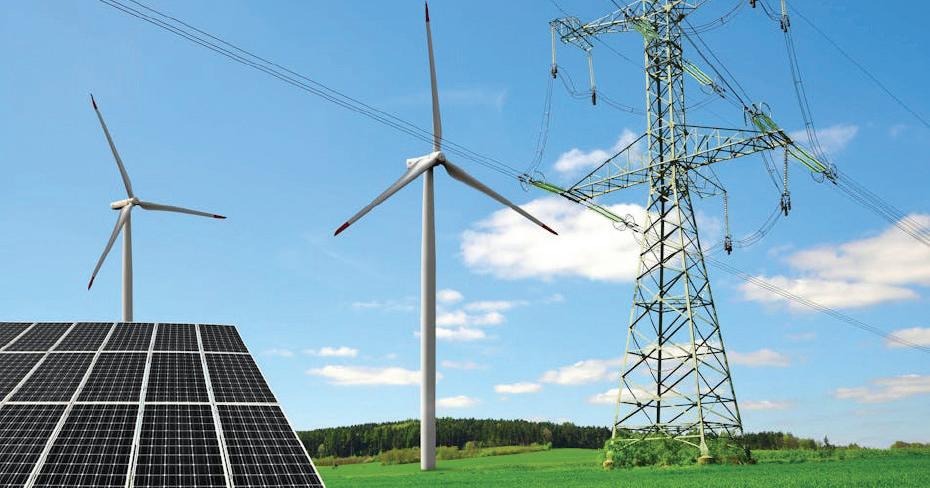
FERC’s Order No. 2023 requirements involve accelerating interconnection studies to mitigate project backlogs that have reached historic levels.... https://tdworld.com/21281962
Executive Editor Nikki Chandler nchandler@endeavorb2b.com
Senior Editor Jeff Postelwait jpostelwait@endeavorb2b.com
Associate Editor Ryan Baker rbaker@endeavorb2b.com
Art Director Susan Lakin slakin@endeavorb2b.com
Field Editor Amy Fischbach EOUeditor@endeavorb2b.com
Technical Writer Gene Wolf GW_Engr@msn.com
Community Editor Rich Maxwell tdwmediapartners@gmail.com
Senior Editor-at-Large Geert de Lombaerde gdelombaerde@endeavorb2b.com
VP, Market Leader, Energy Mark Johnson mjohnson@endeavorb2b.com
Director, Business Development Steve Lach slach@endeavorb2b.com
Director of Marketing Angie Gates agates@endeavorb2b.com
Senior Production Operations Manager Greg Araujo garaujo@endeavorb2b.com
Ad Services Manager Shirley Gamboa sgamboa@endeavorb2b.com
Classified Production Designer Terry Gann tgann@endeavorb2b.com
Audience Marketing Manager Sonja Trent strent@endeavorb2b.com
Audience Development Manager James Marinaccio jmarinaccio@endeavorb2b.com
CEO: Chris Ferrell
President: June Griffin
COO: Patrick Rains
CRO: Paul Andrews
Chief Digital Officer: Jacquie Niemiec
Chief Administrative and Legal Officer Tracy Kane
EVP Endeavor Business Intelligence: Paul Mattioli
EVP Industrial and Energy Group: Mike Christian
VP, Accounting: Angela Mitchell
VP, Digital Business Development: Paul Andrews
VP, Content: Travis Hessman
VP, Customer Marketing: Angie Gates
VP, Digital & Data Innovation: Ryan Malec
VP, Digital Finance: Jessica Klug
VP, Production Operations: Curt Pordes
VP, Sales Operations: Missy Zingsheim
VP, Technology: Glen Scheithauer
T&D World (USPS Permit 795-660, ISSN 1087-0849 print, ISSN 2771-6651 online) is published monthly by Endeavor Business Media, LLC. 201 N Main St 5th Floor, Fort Atkinson, WI 53538. Periodicals postage paid at Fort Atkinson, WI, and additional mailing offices. Canadian GST #R126431964.
POSTMASTER: Send address changes to T&D World, PO Box 3257, Northbrook, IL 60065-3257.
SUBSCRIPTIONS: Publisher reserves the right to reject non-qualified subscriptions. Subscription prices: U.S. ($137.50); Canada/Mexico ($170.00); All other countries ($210.00). All subscriptions are payable in U.S. funds.
Send subscription inquiries to T&DWorld, PO Box 3257, Northbrook, IL 60065-3257. Customer service can be reached toll-free at 877-382-9187 or at tdworld@omeda. com for magazine subscription assistance or questions.
REPRINTS: To purchase custom reprints or e-prints of articles appearing in this publication, contact Reprints@endeavorb2b.com
PHOTOCOPIES: Authorization to photocopy articles for internal corporate, personal or instructional use may be obtained from the Copyright Clearance Center (CCC) at 978-750-8400. Obtain further information at copyright.com
PRIVACY POLICY: Your privacy is a priority to us. For a detailed policy statement about privacy and information dissemination practices related to Endeavor products, please visit our website at www.endeavorbusinessmedia.com
CORPORATE OFFICE: Endeavor Business Media, LLC, 30 Burton Hills Blvd, Ste. 185., Nashville, TN 37215, U.S.; www.endeavorbusinessmedia.com.
© Copyright 2024 Endeavor Business Media, LLC. All rights reserved. Printed in the USA.
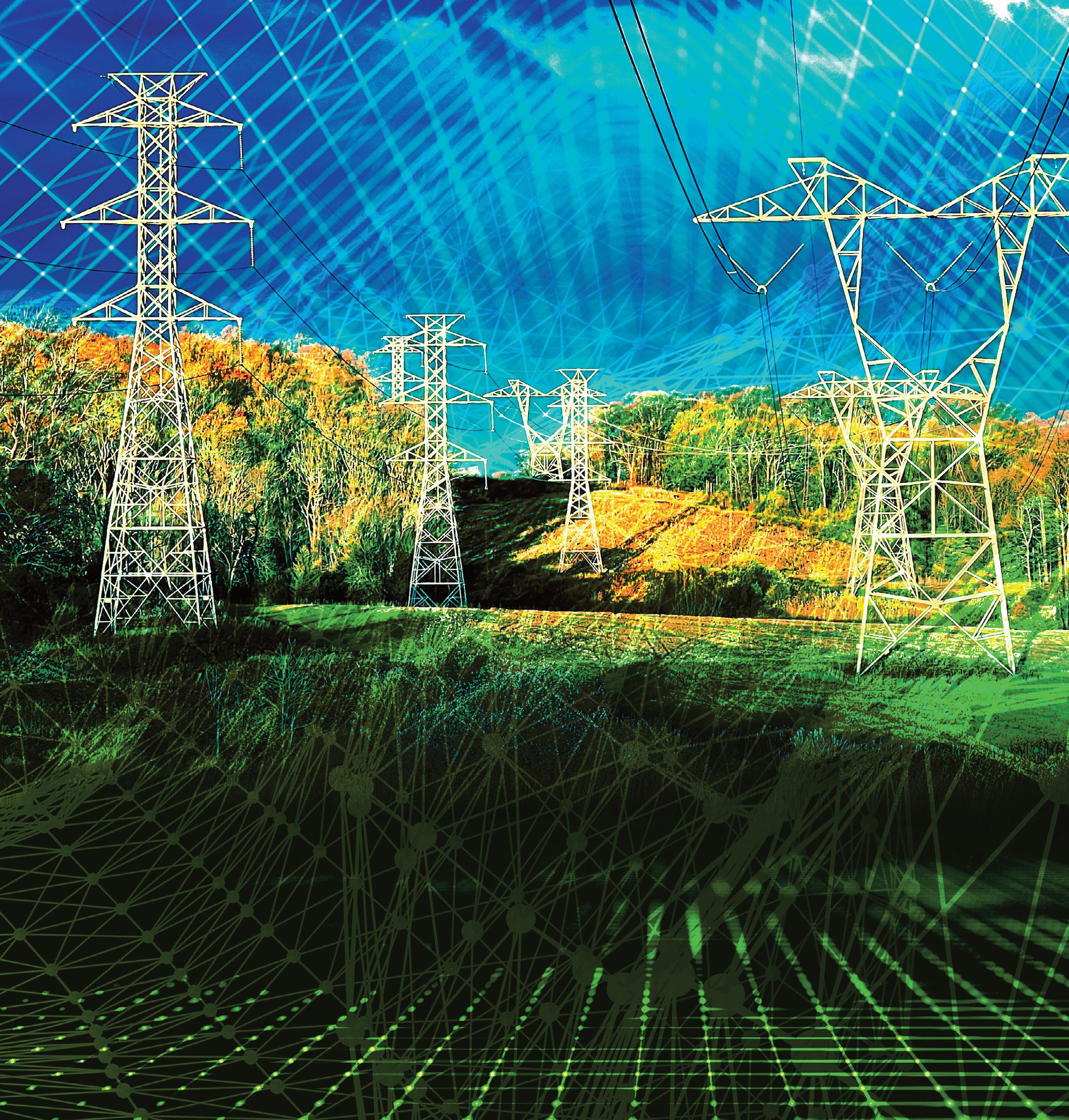


DELIVERING SMARTER AND DATA-DRIVEN DIGITAL SOLUTIONS TO CONTINUOUSLY REFINE AND OPTIMIZE YOUR VEGETATION MANAGEMENT AND INFRASTRUCTURE PROGRAMS FOR MAXIMUM IMPACT.
FROM STRATEGY TO EXECUTION LEARN MORE AT THE ALL NEW ASPLUNDH.COM

DIGITAL@ASPLUNDH.COM 1.800.248.TREE
BY NIKKI CHANDLER, EXECUTIVE EDITOR
To solve a problem — especially if it’s pervasive, painful, and ongoing — you must face it head on. You have to dive into it and feel the pain so that you can come up with the solution, get past it, and move forward in a better state. That problem for our industry is the transition to a decarbonized state. I know this “problem” stems from a problem — climate change, or in other terms, if you like: the need for good environmental stewardship — so I guess you could say in trying to solve one problem, we are creating another problem.
I wish it were simpler than that; that we could just decarbonize and be done. Our industry has been working on it for years. I always tell friends and family to not underestimate the utility industry’s motives and action in decreasing carbon emissions. Greenhouse gas emissions from electric power production have decreased by about 15% since 1990, according to the Environmental Protection Agency.
But people also shouldn’t underestimate the electric utility industry’s drive to ensure reliability, which is crucial all the time. I also like the term energy security because electricity really is a necessity now. As you know, these concepts are bumping up against one another at the moment.
Midcontinent Independent System Operator CEO John Bear, in a letter introducing the update to the MISO Reliability Imperative, did not hold back in naming and claiming the problems our industry is facing. “There are immediate and serious challenges to the reliability of our region’s electric grid,” he wrote.
He acknowledged that we could get to that decarbonized end state. In fact, studies conducted by MISO and other entities indicate it is possible to reliably operate an electric system that has far fewer conventional power plants and far more zero-carbon resources than we have today. But we aren’t there yet, and getting there is “posing material, adverse challenges to electric reliability.”
Bear isn’t the first person to raise the red flag. As more rules are proposed, industry associations speak up. When the EPA proposed to essentially eliminate carbon dioxide emissions from power plants by 2035 this past August, Edison Electric Institute and the National Rural Electric Cooperative Association sounded
the warning bell. Fellow regional transmission operators PJM Interconnection, Electric Reliability Council of Texas and the Southwest Power Pool joined MISO in filed comments responding to the draft rule. For these groups, the EPA’s intention may be altruistic, but the timing and means doesn’t necessarily work.
Bear went on to call out the prevailing investment criteria for financing new energy projects. We “will continue to need dispatchable resources for reliability” during this transition. Other challenges he identified include extreme weather events, supply chain and permitting issues, large single-site load additions (data centers, for example), incremental load growth (electrification) and neighboring grid systems becoming more interdependent. It’s enough to make you want to go home, crawl into bed and pull the covers up. But take heart, our industry has always had the most intelligent, creative, and driven people who rise to these challenges. It started with Edison and Tesla.
MISO is a great example to consider. It first published its Reliability Imperative in 2020, a framework to address the urgent and complex challenges facing the grid. “The region’s 45 million people are counting on MISO and its utility and state partners to get it right,” Bear wrote in his message.
The imperative is a living document, according to MISO, which was just updated in February. It’s a good plan, with an overview identifying challenges and key initiatives addressing those challenges. Within that, MISO is working on releasing actual playbooks to make action easier, such as the “Attributes Roadmap,” to address system adequacy, flexibility, and system stability.
Since I am a word person at heart, I noticed the action words included in MISOs’ key initiatives summary: ensure, develop, modernize, prepare, enhance, and fortify. See the MISO’s Imperative for more detail.
This past December, Jim Robb, president and CEO of the North American Electric Reliability Corp., described the “hyper-complex risk environment” the utility industry faces. The environment entails reliability, resilience and security concerns such as fuel uncertainties; loss of key essential reliability services; need for investment in infrastructure; and cyberattacks. He presented the three-legged stool for resilient utilities: access and affordability, reliability and security and environmental sustainability. That’s where we need to be; and I think we will get there. It will be fun, maybe sometimes painful, and we will come out in a much better place because of it.
●
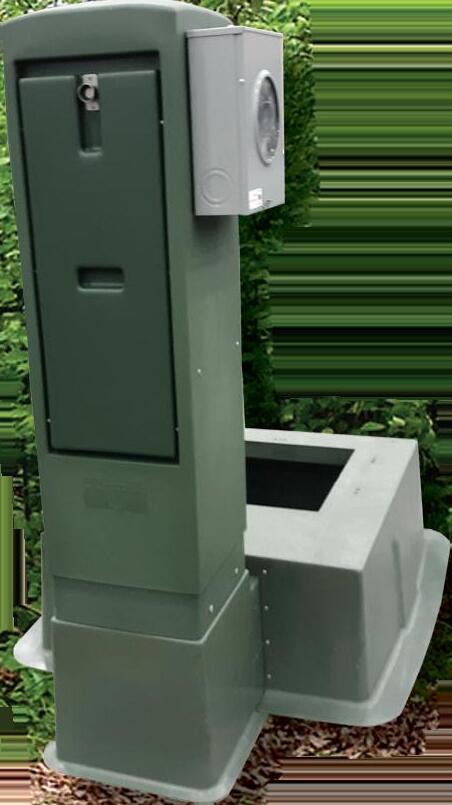

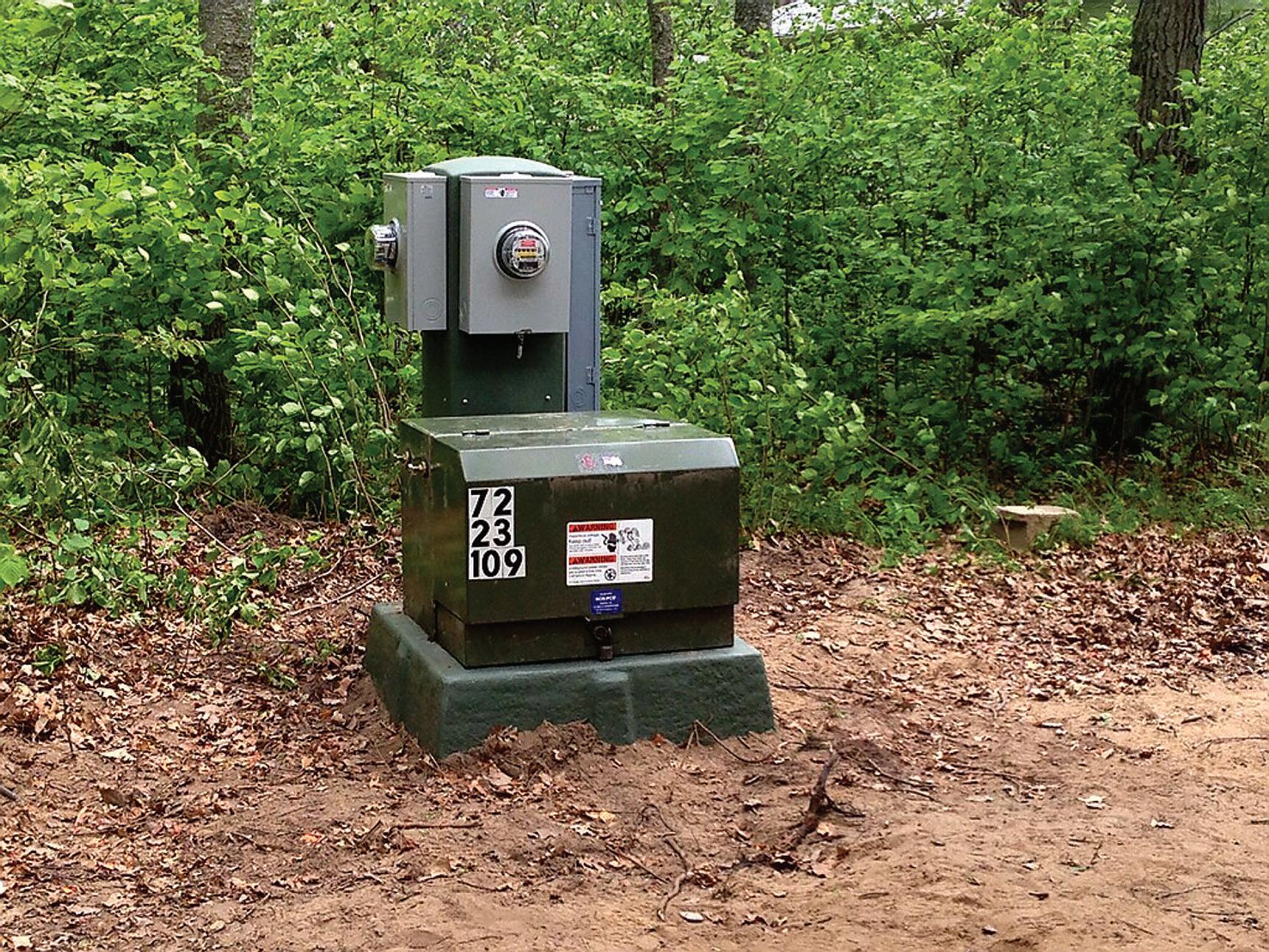


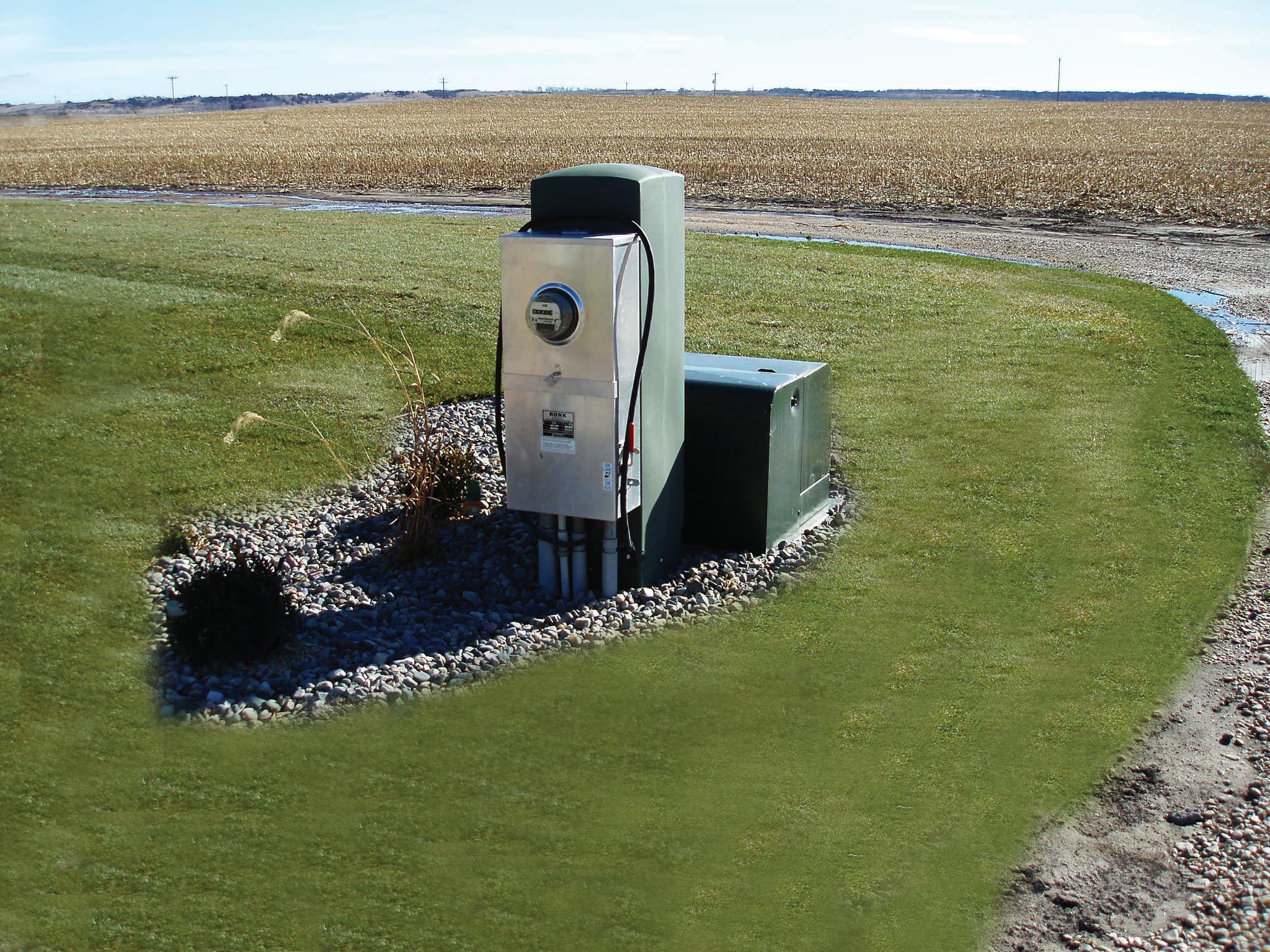


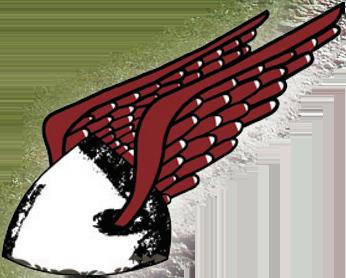


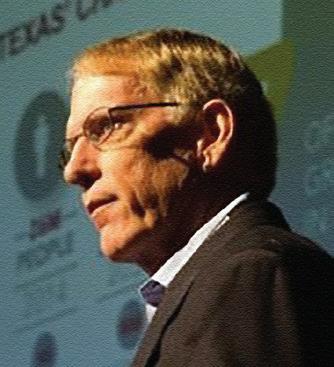
The T&D World Live expert advisory board is instrumental in selecting the topics, presentations and speakers for our program. One of our members shares his varied experiences, concerns for the utility industry and thoughts about T&D World Live here.
David Treichler is director of Strategy and Technology for Oncor Electric Delivery, responsible for strategic analysis supporting the growth of the enterprise. His focus on how technology is changing the nature of human relationships extends to his work as a futurist and widely published novelist.
Q: How did you get into the utility industry? Is this something that you always know you had wanted to do?
A: I was working for Raytheon Company in classified intelligence and battlefield simulation training systems when I became aware of an opportunity with Oncor. I was selected to lead Transmission development outside ERCOT in a joint venture with what was then Westar and Berkshire Hathaway utilities. This was when FERC 1000 was expected to open transmission development.
Q: Is there anything from your past that really pointed you to where you are now in your career?
A: I have worked in a number of different industries and organizations. That has provided an ability to look at questions and issues from a variety of perspectives. I seldom see a problem from just one side. It also permits me to see opportunities that others are not considering.
Q: Have you had a particular person or mentor that has helped you along the way and how did they do that?
A: So many have influenced my career(s) that the list is long and distinguished. Every person I talk with I learn something from. I hope I am able to share insights as well.
Q: What is one of the biggest obstacles you have faced in your life or career and how did you get past it?
A: My biggest obstacle also enabled my strength. I grew up in a small town where there were more cows than people. But there was a library, which gave my imagination wings. I started creating stories to share with others as my mind tried to comprehend the world. Ever since I read as much as possible and write three to four novels each year. The novels help me solve the problems I cannot in reality.
Q: What do you enjoy most about your job now?
A: Gathering data, drawing insights and working with others to develop effective strategies to grow the enterprise.
Q: What is one of the more exciting things that has happened to you in your career?
A: Enabling a U.S. Army squad fight in a virtual environment with a U.S. Marine squad that was physically 139 miles away in another simulation system and changing the combat terrain and environment throughout the exercise.
Q: From your corner of the industry, what are the major problems do you see that need to be addressed?
A: The biggest challenge we are working through in Texas is how to manage the rapid growth of intermittent generation resources while maintaining reliability and resilience in a rapidly growing service area.
Q: Any ideas on what can help those problems?
A: It will take an all of the above, all-hands-on-deck approach, with smart analysis, constant communications amongst all parties, and the cooperation of nature to manage the transition.
Q: What do you think has been one of the most exciting technologies or events that has happened in our industry in your lifetime?
A: Our industry is so dynamic at the moment that it is the confluence of a range of technologies, enabling tools and insight delivering systems, incredibly bright and dedicated people, along with rapid customer and load growth in our service area, that brings me to the office eager for the day.
Q: What did you enjoy about last year’s T&D World Live event?
A: T&D World Live has been an opportunity to work with colleagues from across the industry and the industries that are attempting to learn how to integrate into our grid, in presenting information and insights that will enable and accelerate that integration.
Q: What are you looking forward to this year at T&D World Live?
A: I am looking forward to having time to chat with my colleagues about what they have learned in the past year, what they are seeing as the next challenges to engage, and how they plan to approach those challenges utilizing new tools and products we may first learn about at the T&D World Conference.
Q: Besides T&D World Live, what other events do you attend or participate in?
A: This year I am keeping closer to home than in the past. I have been in Austin for conferences on the ERCOT market, thermal generation considerations, and an academic conference on the future of electrification just in the month of February.
Q: Anything else you would like to add?
A : The pandemic changed the way we learn with another webinar available nearly every day. In my experience if that is the only opportunity to learn you are limited to information. A face-to-face environment permits gleaning of insights, and a renewal of relationships essential for effective leadership. T&D World Conference is a great place for such contestations.







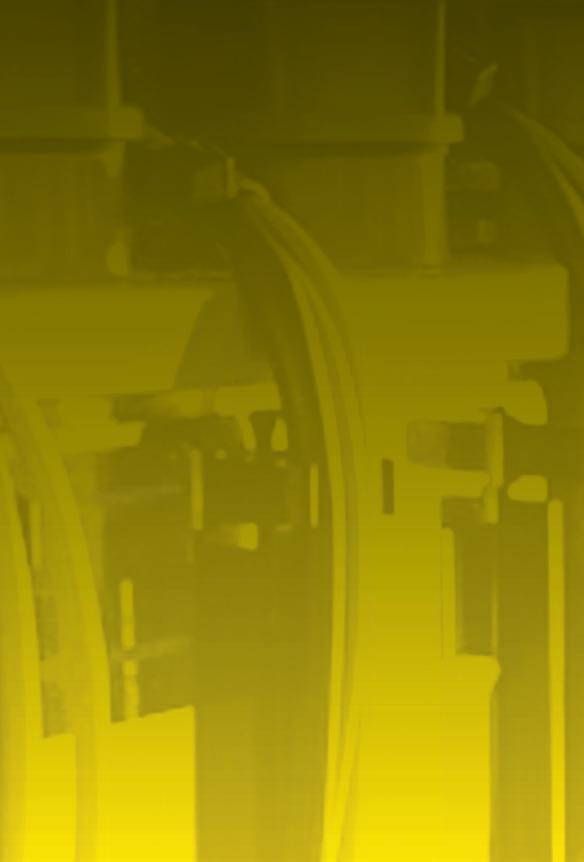



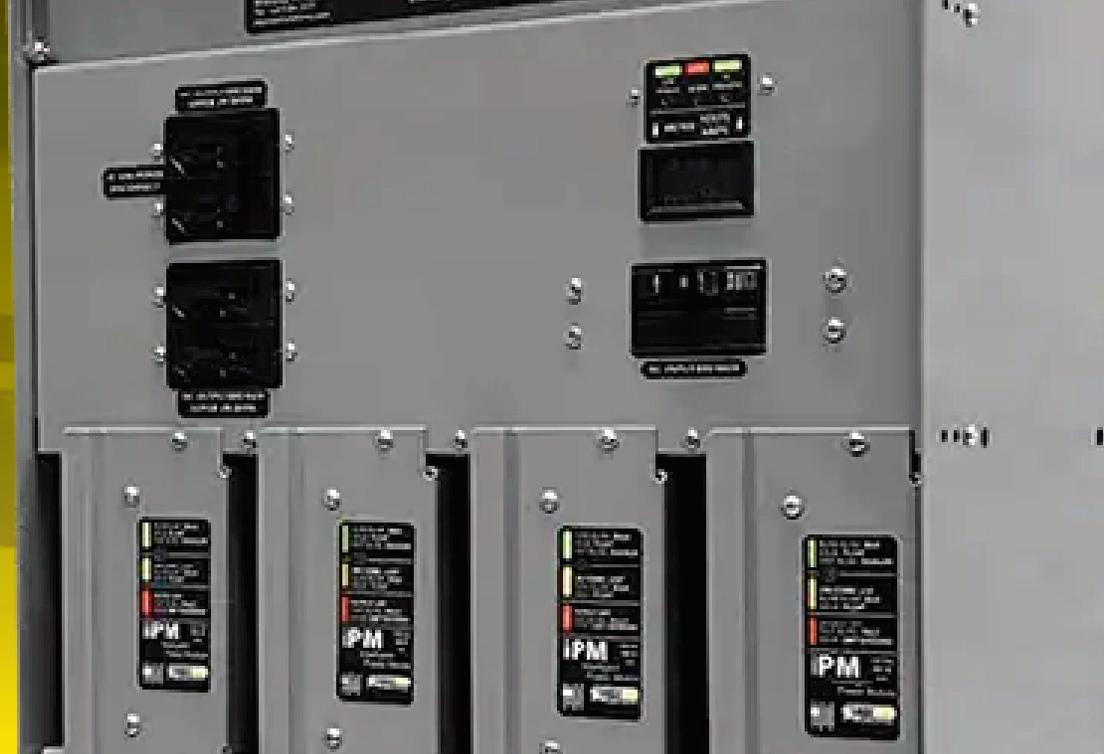




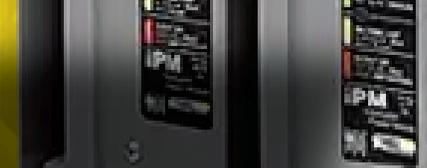

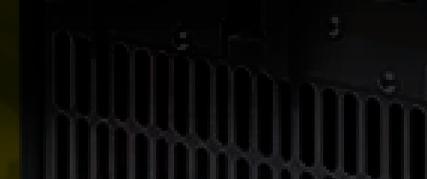



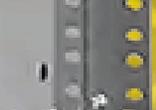


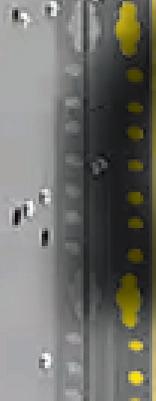
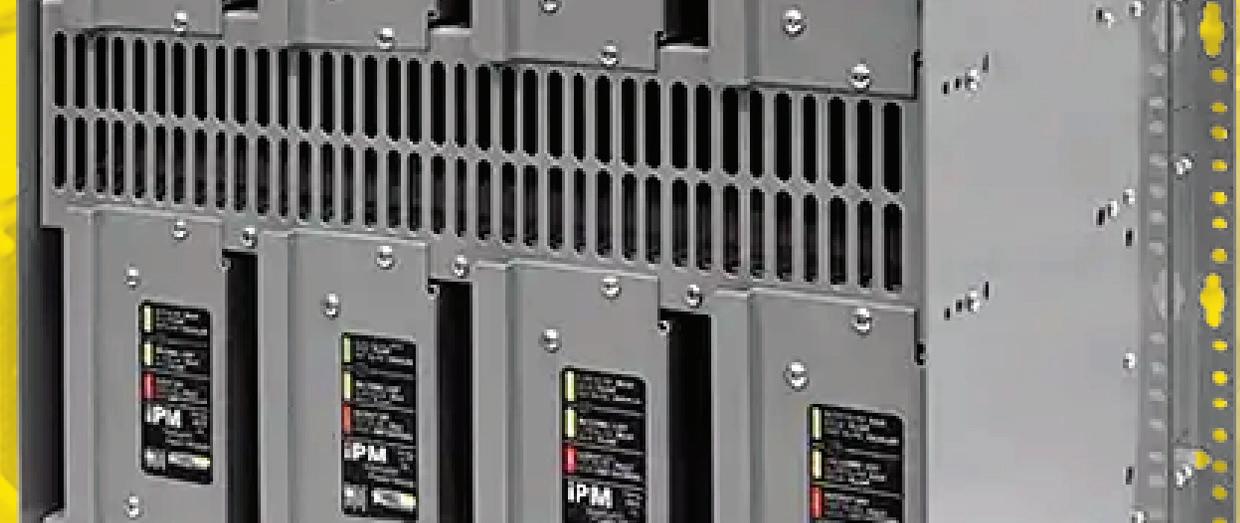












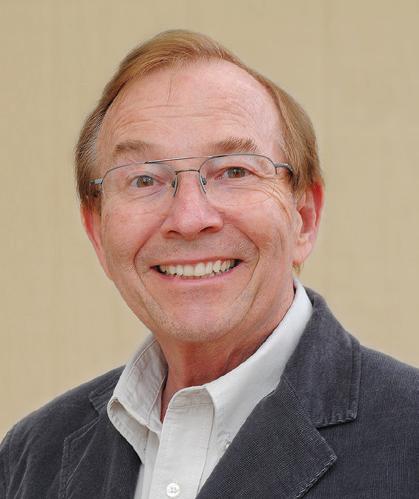
Last month’s issue of T&D World featured the upcoming May IEEE PES T&D Conference & Exposition being held at the Anaheim Convention Center. I have been to many PES T&D Expos, but it all started in Anaheim many years ago. Friends had told me about the PES Expo and I decided that if possible I’d go. Getting permission wasn’t easy. There was never enough money in the budget for training or travel. I asked for approval, but was told no. It turned out, however, there was a loophole, Corporate loved positive publicity.
profession? More importantly, it’s an opportunity to make first contact with new colleagues and open doors to lifelong friendships, which is invaluable. I know it because it happen to me many times.
Presenting that paper at that panel session introduced me to some of the world’s leading HVDC experts who were also on the panel. We first met at the author’s breakfast the morning of the session. Many of us decided we wanted to meet again for dinner to discuss HVDC technology. That introduced me to another important feature of attending the PES conference: networking. After all, the Expo is a gathering place for the industry’s top professionals.

I had been the project engineer on an HVDC (high-voltage direct current) back-to-back converter station project my company had built. I found out there was going to be a panel session discussing the latest HVDC projects and they were calling for papers to be submitted by prospective panelists. I sent in an abstract and the paper was accepted. I was an accepted panelist and the next thing I knew I was in Anaheim.
Thinking back, I must have really wanted to go. I had no experience writing technical papers, and I had never been on a stage making a presentation in front of hundreds of people. I was way out of my comfort zone, but it was worth the effort and as a learning experience, it was beyond expectations.
Funny, Disneyland was a short distance down the street, but for a utility engineer like me, the exhibits on that exposition floor surpassed anything at Disneyland. There was so much happening it was hard to decide what to explore.
If you have ever gone to a PES Expo you know what I mean. Where else can you see and interact with the latest power grid tech-toys? Where else can you have coffee with experts and pickup tips to improve your skills? Where else can you informally trade tricks to perform more efficiently in your
By the end of the conference, I had made some friends and been invited to join the HVDC subcommittee and several of its working groups. They wanted me to help write standards, guidelines, and recommended practices, but luckily I didn’t realize that at the time. These publications define the equipment of the power delivery system — talk about looking behind the curtain. When I got back to my office, once again I asked for permission to join these groups, but the answer was still no. As luck would have it our converter station developed a problem that impacted its reliability. It was a real brain-twister and had everyone’s attention, including the manufacturer. Several HVDC utility engineers I had met in Anaheim said to call them if I ever had an interesting problem. I called and true to their word, they helped, and the problem was fixed. This proved the value of being connected to the HVDC community and I received approval to join the working groups and attend general PES meetings.
From a 30-plus-year perspective, I started out my PES career as a confused working group volunteer and ended up the chairman of the T&D Committee. There were many other offices and work in between. I’d like to go into more details, but there isn’t space for that. If there was, I could tell you about the quirky guy I met at a PES general meeting in NYC. He was standing right behind me in the line for discount Broadway tickets in Times Square.
He told me he was the editor-in-chief for Transmission & Distribution, the predecessor of T&D World, and his name was Rick Bush, hmmm. It was a strange day and again I wish I had space to tell the full story. Years later he’s one of my best friends and I’m an engineer/journalist with the monthly column you’re reading. You never know where attending a PES Expo will lead you!
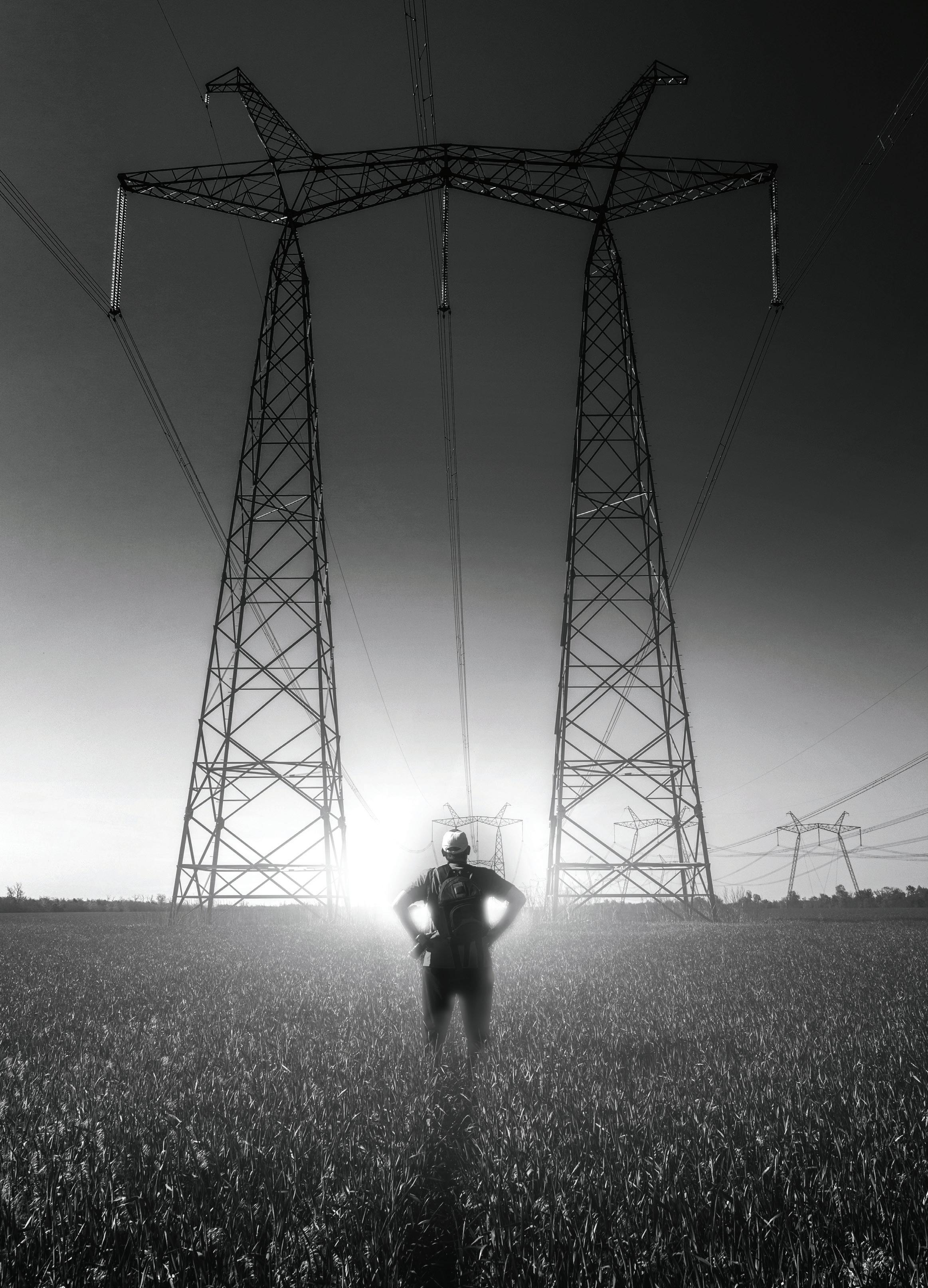
OUR TEAM HAS THE WORKFORCE AND EXPERTISE TO SOLVE ALL YOUR T&D CHALLENGES











When it comes to trending technologies it’s pretty hard to beat what is going on with digital substations. This technology is providing modernization across the board when it comes to substations. From new substation facilities to antiquated conventional substations they’re all benefiting. It helps that the technology saves money and increases the efficiency of our substations. It also improves personnel safety and increases cybersecurity along with reducing maintenance outages while keeping the equipment healthy and many other budget friendly considerations.
For years the electrical substation has been thought of as the hub or the heart of the power grid, but there has always been something missing — intelligence. It’s been a vulnerable point. There is very little feedback on what is taking place in conventional substations, except when personnel are sent to the facility. Digital substation technology has proven to be the answer. It places intelligence exactly where it’s needed — at the hub of the power interactions. By digitalizing the substation, it’s becoming the brain of the power grid, but it’s been a slow process.
Digitalization began in the control building by replacing the old-school analog control and protection systems with digital processors. Then it moved into the yard by integrating sensors, intelligent electronic devices (IEDs), and other digital technologies directly into the substation’s outdoor equipment. It wasn’t long until manufacturers developed a digitalization strategy for the entire substation, but there was a problem, those early platforms were proprietary systems.
Proprietary devices don’t work with other manufacturer’s equipment and propriety systems have always been an issue for utilities. They want open architecture with plug-andplay practicality. It took a while, but the International Electrotechnical Commission (IEC) addressed the issue with their IEC-61850 standard. It’s the communication standard
for electrical substation automation systems, which defines interoperability between products from multiple suppliers. In a short time, IEC-61850 has matured into a series of protocols addressing areas required for advancing digital substation technologies.
This series of standards includes the primary processes along with secondary and auxiliary equipment in the substation. The technology is still expanding, and we haven’t reached its full potential. The Business Research Company published its “Digital Substation Global Market Report” in early 2024. It estimated the digital substation market “will grow from US$ 7.3 billion in 2023 to US$ 8.03 billion in 2024 at a compound annual growth rate (CAGR) of 11.7%.” They attribute this growth “to grid decentralizing, electrification of transportation, standardization and interoperability, rapid urbanization and electrification.” Business Research Company also project that the digital substation technology to grow to US$ 12.51 billion in 2028 at a CAGR of 11.7%.
Part of that growing market is represented by retrofitting existing conventional substations, which is an enormous market. In North America alone, it’s estimated there are over 79,000 substations in service, with an average age of these substations of around 40 years. That means the technologies in these substations can span from antique status to state-of-the-art facilities. It also means that removal and replacement of these existing substations is economically unfeasible, but retrofitting these substations with cutting-edge digital technology is a viable option.
Manufacturers offer utilities a variety of choices when it comes to retrofitting an existing substation that starts off by replacing aging analog components with digital applications. There is also the option available that includes installing a process bus out in the substation’s yard with the equipment. This retrofit enables the monitoring and control of power flow in near real-time. It also allows for faster diagnostics that can
resolve potential issues before they become serious problems, but it’s getting complicated. So let’s talk with an expert in this area.
“Charging Ahead” connected with Thomas Werner, senior global product manager at Hitachi Energy to discuss the subject of digital substation technologies. Werner began the chat saying, “There are many factors associated with designing and building a new digital substation. Topping the list are high performance and increased flexibility. There are also cost savings linked to the reduction of copper control cable, which is typically estimated at about 60-80% compared to a conventional substation. That savings is multiplied by the reduction in labor required to install the cable from the yard equipment to the control building with its marshaling cabinets and control and protection equipment racks. This is all replaced by point-to-point fiber optic cable. There are also savings associated with less equipment installed in the station, which allows for the digital substation’s smaller footprint. There is an alternative to building a new digital substation facility for those wishing to explore the available technologies. Utilities can upgrade an existing conventional substation and achieve substantial benefits while gaining experience.”
Werner continued, “Upgrading conventional substations with digital components improves reliability, allows real-time monitoring and control of the power flow, which provides better asset management. It enables component health checks, diagnostics, and automated problem solving. We have found
that some utilities are high on the learning curve when it comes to retrofitting digital devices to their substations. They may elect to upgrade the entire facility. Other utilities may feel uncomfortable taking on that much at one time and decide to only implement one or two feeders. That is the advantage of utilizing a technology like Hitachi Energy’s SAM600 3.0 process interface unit. The utility is able to proceed at a pace that fits the user’s scope.”
Werner explained, “The SAM600 3.0 is designed to let the user configure it as a merging unit, a switchgear control unit, or a combination of both. It supports many different installation approaches. By combining the three units into a single device the pace of the retrofit is faster because design, installation, and testing are more efficient. The SAM600 3.0 interfaces directly with outdoor equipment like circuit breakers, disconnect switches, and other devices and it includes built-in conversion of analog-to-digital signals. It also gives users access to advanced automation and communications applications and can easily be expanded for future requirements.”
These conventional substations contain large amounts of digital technologies, but they’re not being used as an intelligent link. That’s where digital substation technology comes into play. It takes full advantage of informational technology and operational technology connectivity (IT/OT). It enables yard devices to share data with the control and protection schemes


The RTDS® Simulator is the world standard for real-time power system simulation and hardware-inthe-loop testing of control and protection equipment. It’s at the heart of power system innovation laboratories around the world, supporting efforts to de-risk novel technologies for a secure energy transition. Explore case studies and free webinars at our website to learn more.
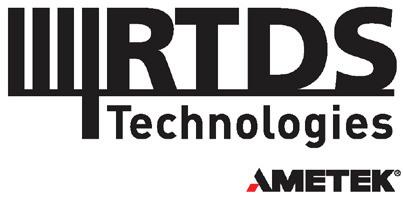

and other digital substations in real-time for faster response times. A network of digital substations using IT/OT shares and compares this data, which increases the efficient utilization of assets, not to mention faster response time to external events that can impact the power grid.
Installing new digital substations and/or retrofitting existing conventional substations with digital technologies will make IT/OT networking happen and that is exactly what is needed for the demands being placed on our power delivery system. Upgrading conventional substations is simpler and quicker than replacing them, which is much less costly. This type of interconnectivity can improve reaction times to extreme climate change weather related events fueled by global warming, which increases resiliency. Advanced asset management is moved to the next level as IT/OT enhanced digital substation networking is integrated with AI, cloud computing, and other advanced technologies. Predictive models with proscriptive analytics are only two examples of applications making digital substation technology more intelligent. It also gives digital substations a giant leap with self-monitoring, full automation, real-time data acquisition and many additional features. The total package gives a utility a dynamic view of their power system along with the tools for making faster decisions.
That is exactly what has been needed for quick reaction to our rapidly changing environment. Digital substation technologies are slowly bring accepted, but that is changing as
the technology becomes more commonplace. Last year the Nepal Electric Authority awarded GE Renewable Energy’s Grid Solutions a contract to modernize 39 of their substations. The project will retrofit existing substations with digital technologies in relay panels and electrical devices to enable real-time monitoring of power transmitted through these substations.
Recently One Energy Enterprises, an industrial power solutions company, announced they had energized a fully digital, plug-and-play digital substation. The 30 megawatt (MW) substation is expandable to 150 MW and was built using Schweitzer Engineering Laboratories’ TiDL system connecting the monitoring and controls of a Hitachi Energy circuit breaker and power transformer by fiber optic cable. A few years ago, SP Energy Network, a United Kingdom (UK) transmission and distribution network operator, and Hitachi Energy announced their project to retrofit two bays of the existing Wishaw 275 kilovolt substation in Scotland with digital substation components. The retrofit provided valuable experience upgrading a conventional substation.
It has been hard enough keeping up with the advancements and improvements of digital technologies, and now digital substation technology has complicated it more. It gives us the ability to modernize portions or entire conventional substations. It’s the equivalent of a digital fountain of youth for these facilities, but there’s a steep learning curve to harnessing this technology!
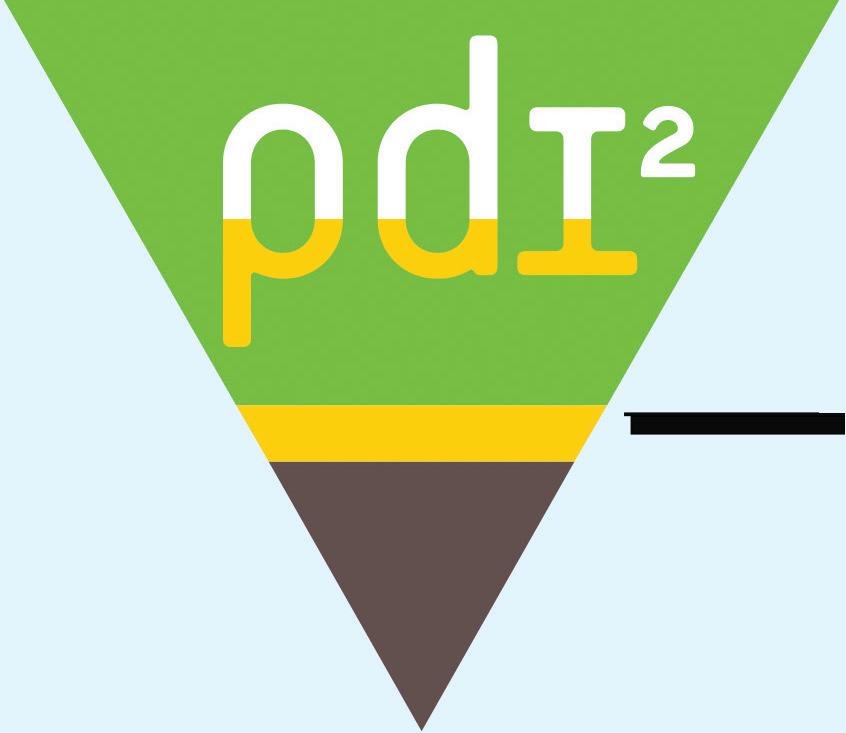

















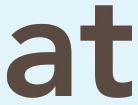


The Infrastructure Investment and Jobs Act represents a monumental leap toward the creation of an expansive network of 500,000 EV charging stations across the United States by the year 2030. This initiative is recognized as an unprecedented advancement in the realm of EV charging infrastructure, setting the stage for an EV charging experience that is universally accessible, cost-effective, dependable, and equitable.
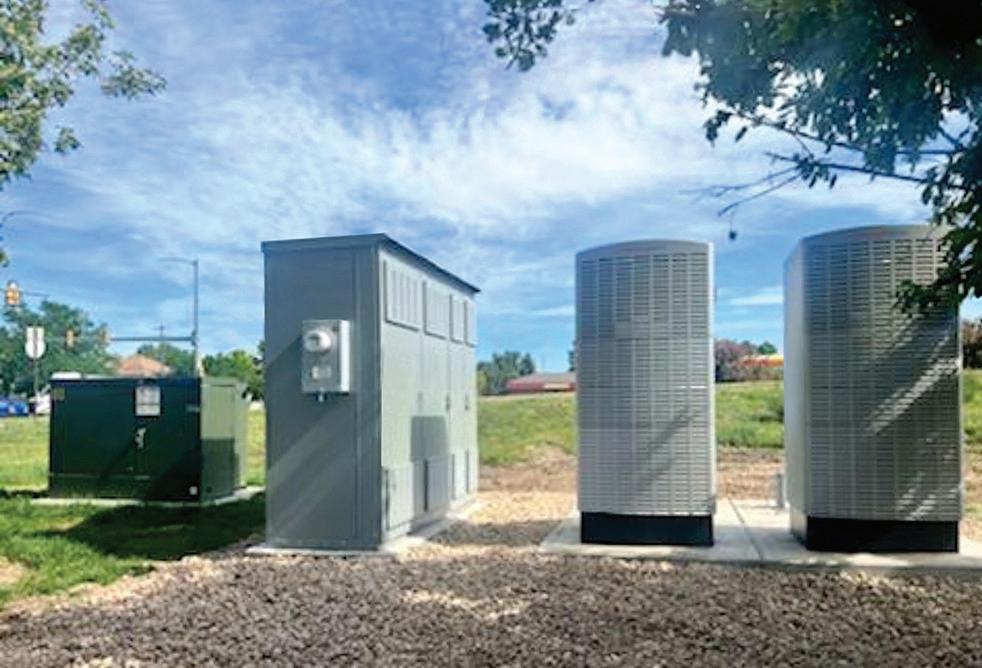
Central to this visionary endeavor is the $5 billion investment in the National Electric Vehicle Infrastructure (NEVI) Formula Program. This program is meticulously designed to aid states in the establishment and maintenance of an EV charging infrastructure that promises to redefine the American travel landscape, steering it towards more environmentally friendly and sustainable transportation modalities.
Beyond the foundational NEVI program, the push towards electrification encompasses a broader vision for the United States — a seamless and robust network that not only supports the logistical demands of electric vehicles but also enhances the overall travel experience. This includes the integration of state-of-the-art charging solutions that cater to a variety of settings, from urban centers to remote locations, ensuring that EV drivers have access to charging facilities wherever their journeys may take them.
Implementing such an extensive infrastructure comes with its set of challenges.
States are diligently working to navigate these complexities, from selecting optimal locations for charging stations that are easily accessible from major highways to ensuring the infrastructure meets the necessary power output standards. This phase is crucial in laying the groundwork for a future where electric vehicles are a mainstream mode of transportation.
With states like California leading the charge in enhancing existing EV infrastructure, and others quickly mobilizing to expand their charging capabilities, the nation is witnessing significant strides towards the realization of this grand vision. Ohio’s groundbreaking on the first NEVI project in October 2023 symbolizes a collective movement towards a sustainable and electrified future.
The shift towards electric vehicles is not confined to the NEVI program alone. Oldcastle Infrastructure is at the forefront of this transition, offering a spectrum of EV charging infrastructure solutions tailored to meet the diverse needs of the modern EV market. By laying the foundational infrastructure essential
for electric vehicle ecosystems to scale, and offering solutions designed for rapid deployment, Oldcastle Infrastructure’s innovations are crucial in facilitating the widespread embrace of electric vehicles, ensuring a smoother transition to a sustainable automotive future. n
Sources: driveelectric.gov; fhwa.dot.gov

Find out how you can partner with Oldcastle Infrastructure in your EV charging journey.
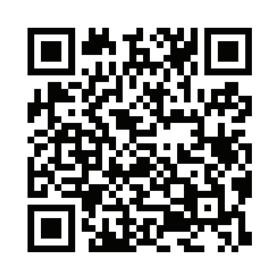
Supply chain issues, new construction and demand outpacing manufacturing capacity are several factors behind the shortage of electrical transformers, a critical power grid component.
The Department of Energy is placing a bet on more advanced transformer designs that it hopes will alleviate the long lead times for new transformers, which many in the industry say are hampering outage restoration, renewable energy projects and power grid upgrades.
Up to nine participants can draw from an $18 million funding opportunity for developing, testing and piloting new “flexible innovative transformer technologies,” according to a release from the DOE.
Last year, utilities told T&D World that the shortage has caused lead times in excess of three years in some cases. The impact is felt by utilities all over North America.
DOE’s funding is intended to boost development of new transformer designs with a wide range of transmission and distribution uses. “More flexible and adaptable grid components will increase grid resilience at lower cost and reduce supply chain challenges facing the utility sector,” said Gene Rodrigues, Assistant Secretary for Electricity.
Transformer manufacturers say labor shortages, hard-to-source materials and worldwide shipping delays are among the culprits for the supply shortage.
The funding opportunity will be co-funded by the DOE Office of Electricity as well as the Office of Cybersecurity, Energy Security,

and Emergency Response.
The two areas of interest named by the DOE are to research and develop advanced distribution transformers (flexible, modular, scalable, hybrid or solid state) as well as to demonstrate activities for advanced distribution transformers across a range of transmission-scale duties. Applicants must demonstrate a process for evaluating the prototype performance and extrapolating results to the targeted power and voltage ratings of the final design. Prototypes must also demonstrate high efficiency, variable/controllable impedance, and the ability to accommodate a range of high-side and low-side voltages.
DOE said it expects to announce the selectees in late summer.
The directors of American Electric Power Co. have removed Julie Sloat from her roles of chairman, president and CEO and elected a former Xcel Energy Inc. leader to take her place during the search for a successor.
Sloat had moved into the top spot at AEP just 14 months ago after working as the company’s CFO and senior vice president of treasury and risk as well as president and CEO of its Ohio utility. She had been with the company, which serves 5.6 million customers in 11 states, since 1999. Taking her place is Ben Fowke, who led Xcel from 2011 until the summer of 2021 and was elected to AEP’s board a few months later.

Speaking to analysts on a Feb. 27 conference call that accompanied AEP’s fourth-quarter results — net income of $336 million, down from $384 million in late 2022, on revenues of about $4.6 billion—Fowke said Sloat’s dismissal was not the result of any disagreement about operations or policies or related to any ethics or compliance issues. He added that he expects the CEO search will take at least six months but not more than a year.
“The strategy’s great,” Fowke said. “We just have to execute
and that’s what we’re focused on.”
The CEO change comes after AEP has since December had to digest adverse regulatory rulings in Texas, West Virginia and with the Federal Energy Regulatory Commission. Fowke said he intends “get very much involved” in regulatory strategy, which is being led by Executive Vice President Peggy Simmons.
Sloat’s exit also comes two weeks after AEP’s board announced it had reached an agreement with investment firm Icahn Enterprises to have the latter fill two new board seats and appoint a non-voting board observer. Veteran investor and activist Carl Icahn said then his team was looking forward to working with Sloat and AEP’s board “to optimize the value and performance” of AEP’s businesses. Those operations will continue to include several divisions that had been on or appeared to be headed to the auction block: Fowke said the board has decided to retain the Transource Energy competitive transmission subsidiary as well as investments in the Pioneer and Prairie Wind transmission joint ventures. (AEP’s leaders are close to wrapping the divestiture of the company’s AEP
Energy retail and AEP OnSite Partners distributed resources units.) Combined, AEP has invested about $550 million in Transource and the JVs and Sloat said last summer that selling those assets would let the company further narrow its focus on its regulated businesses.
“We think it’s a great asset,” Fowke said on the conference call about Transource. “Given the various changes that FERC is looking at, I think it gives us a lot of optionality.”
In looking to build further in the competitive transmission market, AEP joins NextEra Energy Inc., where leaders a month ago said they will invest nearly $2 billion in three projects over the next four years. Other utility leaders have in recent months also been talking up the need for more investment in transmission capacity to help meet growing demand from commercial and industrial customers. —Geert de Lombaerde
The Midcontinent Independent System Operator’s (MISO) Board of Directors has approved the 2023 MISO Transmission Expansion Plan (MTEP23). MTEP23 underscores MISO’s commitment to ensuring reliability for our footprint as the grid evolves.
MTEP23 is the largest in MISO’s history both by volume and investment (excluding the two years of accounted Multi-Value Projects/Long Range Transmission Planning (LRTP) portfolios). The groundbreaking $9 billion in transmission enhancements will fund 572 projects addressing aging infrastructure, new load and added generation due to retiring traditional resources. These projects total over 700 miles of new or upgraded lines.
“I am extremely proud of the commitment and quality of work my team members and others throughout the organization did to make MTEP23 possible. It took extensive stakeholder processes and significant modeling and analysis over the past year,” said Aubrey Johnson, MISO’s vice president of System Planning & Competitive Transmission.
Unlike typical MTEP cycles in which investment is spread across the region, $3.9 billion (or 43% of the total investment) is planned for projects in Louisiana and Texas. This is largely in response to an increase in generation retirements and load associated with economic development.
The changing resource mix continues to add complexity to both MTEP and LRTP planning. In response, our planning tools and processes must also evolve to sustain their role as key initiatives of the Reliability Imperative’s Transmission Evolution pillar.
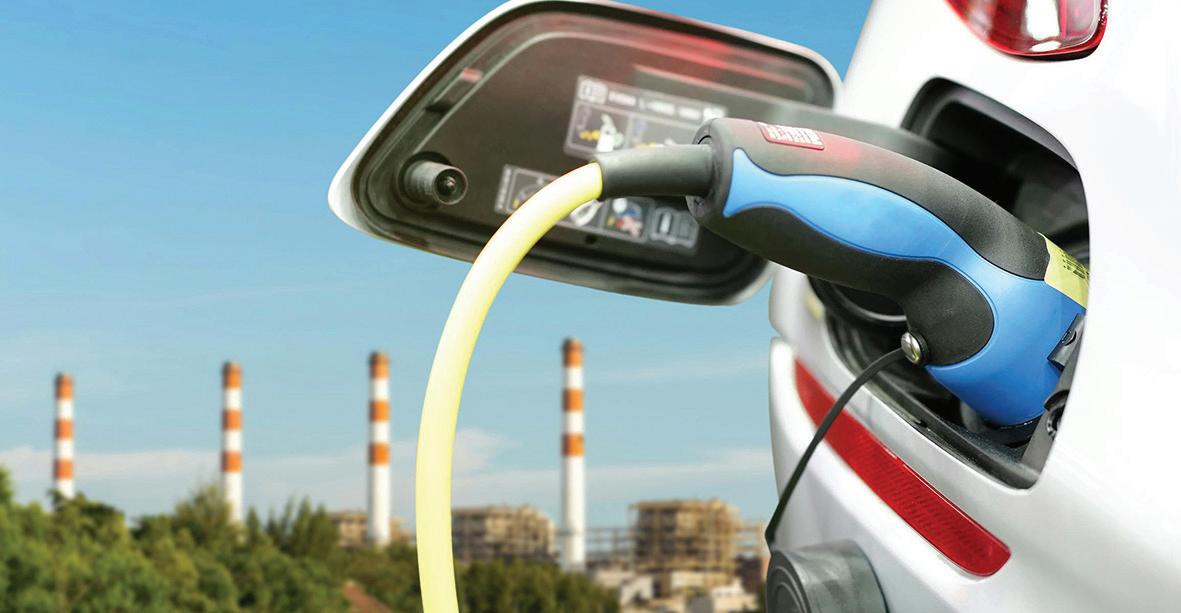
The North American Electric Reliability Corp. took a look at electric vehicle adoption and issued some suggestions on how industry and regulators can come together on making sure EVs get charged without adversely affecting the bulk power grid.
In NERC’s “Potential Bulk Power System Impact of Vehicle Chargers,” the corporation called for cross-sector work to address the existing knowledge gap between what utilities are expecting EV users to do and what they may actually do — the latter being something NERC’s white paper admits nobody is quite sure of and calls for more research.
According to NERC, there are big gaps in technical understanding, planning and modeling for EV charging readiness programs. Neither EV users as a group nor electric utilities and grid operators have reliable charging models, sufficient standardization of charging devices, or studies into the impact on the bulk power grid.
NERC also finds that there is only a single, broad electrical model for EV charging, and grid operators and planners have to build better models that can make accurate predictions on EV user behavior.
“The growing penetrations of EVs necessitate a study of the real or anticipated risks that the EVs with their charging requirements bring to the electric grid,” according to the white paper.
Also, EV charging systems need to be united under a common control and performance standard. If you charge two EVs from different automakers at the same charging station, the vehicles may not draw on the power grid in the same way, according to NERC.
“This lack of standardization makes grid planning difficult. Efforts are under way within the electric industry to address this issue,” according to the white paper.
Finally, NERC says, EVs and their charging systems’ impact on the power grid have not been sufficiently studied. To combat this, NERC performed a study based on the lone model available at the moment to examine this EV chargerpower grid interaction. The corporation found EV chargers can adversely affect the bulk power delivery system’s reliability depending on how they draw current.
EV chargers are currently designed only for user convenience and not for overall grid stability. This needs to change, according to NERC’s directions, and could conceivably come about through collaboration between manufacturers and the utility industry.
NERC recommends EV and charging manufacturers reach out to utilities and develop standards and performance guidelines to promote what NERC calls grid-friendly charging. In the absence of industry collaboration, the federal government and regulators may need to step in.
—Jeff PostelwaitThe leaders of Exelon Corp. are trimming the distribution capital spending plans at their Commonwealth Edison Co. unit — which is by far the company’s largest — by $1.25 billion over the next three years in response to a December decision by Illinois regulators to deny a multi-year grid plan.
That Exelon President and CEO Calvin Butler and his team are cutting ComEd’s capex goals isn’t a surprise. They said on the heels of the Illinois Commerce Commission decision that they’d need to re-evaluate their investment plans. But the scale of the cuts is significant: Executives’ plans had called for ComEd to spend a little more than $2 billion on distribution projects this year and then grow that number to more than $2.35 billion in 2025 and $2.45 billion in 2026. The retreat from those targets constitutes a haircut of more than 60% — although overall capex at ComEd will fall by less than that figure because of larger transmission investments.
“Our job is to align with what they are requesting,” Butler said on a conference call following Exelon’s fourth-quarter earnings report, which showed net income of $617 million on operating revenues of $5.37 billion. “We are building a plan to achieve those goals and we will continue to talk with those stakeholders. But […] we are ready to pivot if required.”
The Illinois regulators’ decision also has forced the Exelon
executive team to lower their longer-term forecasts for growth in operating earnings and dividend growth by a percentage point to a range of 5% to 7%. This year will likely see growth come in below that range with 2025 being better in that regard, they said.
The ICC’s decision wasn’t the end of this story for ComEd, however. The company has appealed the ruling and an order on revenue requirement increases from that rehearing process is due in June. ComEd officials also have filed with an appeals court seeking a new review of questions around its planned return on equity, capital structure and possible returns on its pension assets.
Despite the ComEd stumble, the capex budget for Exelon as a whole will grow slightly this year to $7.4 billion as transmission projects scale up. Through 2027, Butler and his team plan to put to work $34.5 billion, which is an increase of $3.2 billion from their previous four-year plan spanning 2023 to 2026. Exelon’s rate base is forecast to grow an average of 7.5% annually to $73.9 billion from $55.4 billion last year.
Shares of Exelon (Ticker: EXC) rose more than 4% to $36.21 on the heels of the earnings report and outlook. They are, however, still down about 10% over the past six months, trimming the company’s market capitalization to about $36 billion. —Geert de Lombaerde


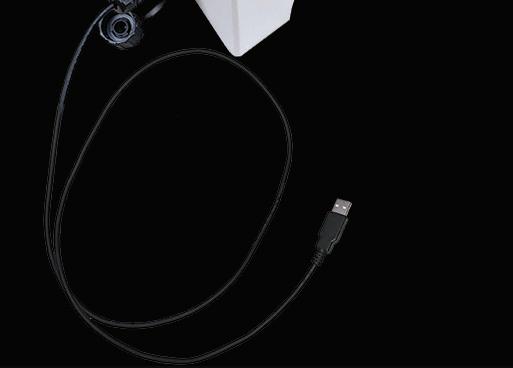



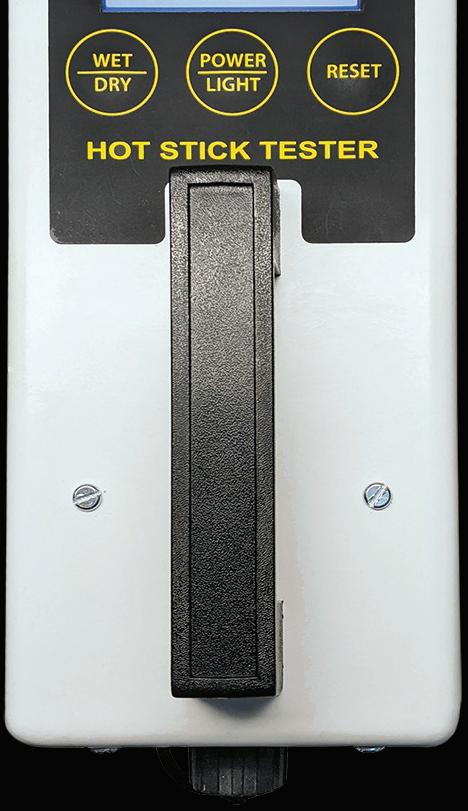
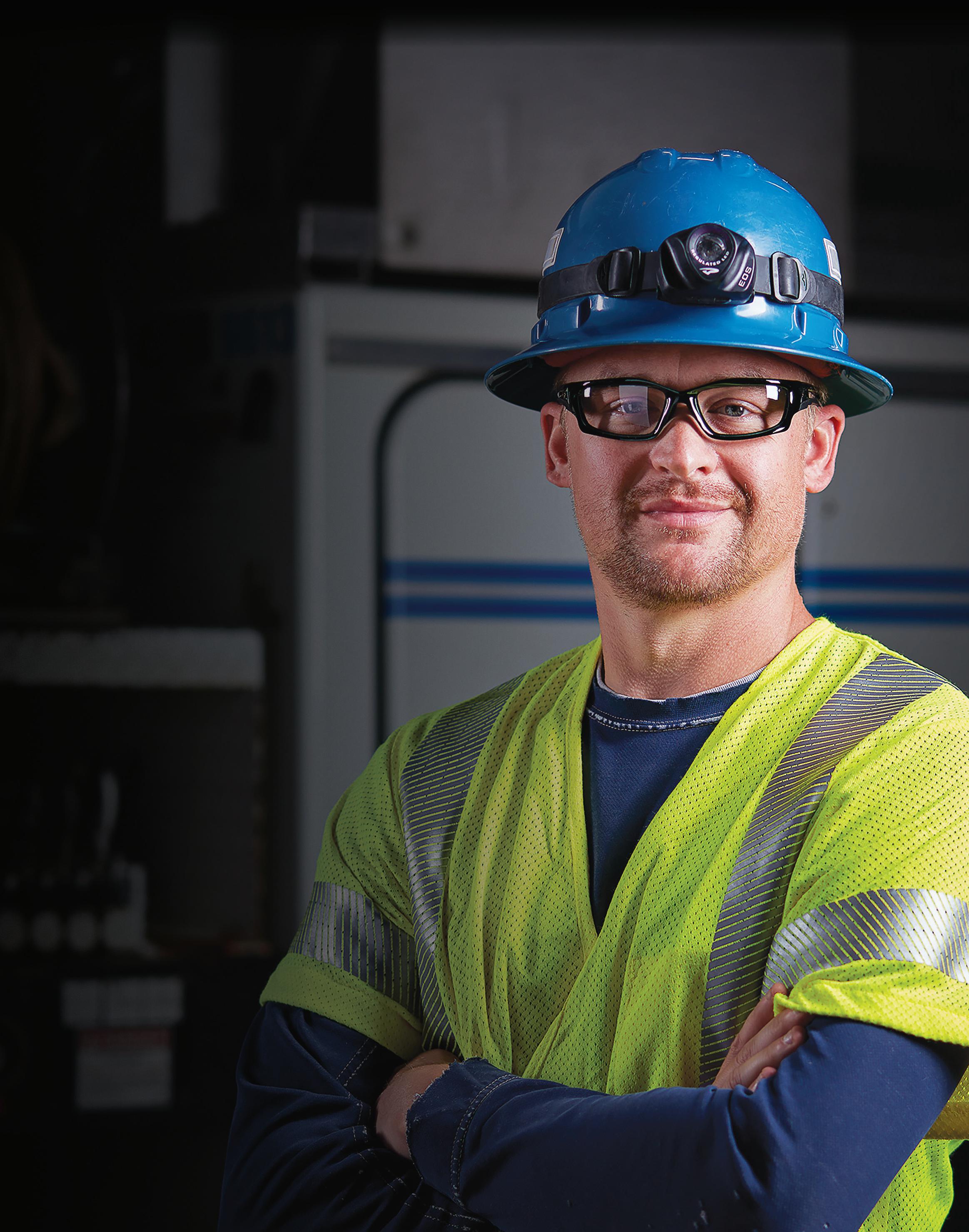





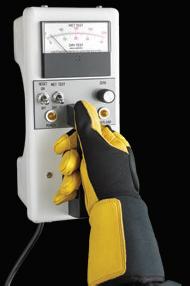



The New York State Public Service Commission approved the joint proposal of Orange and Rockland Utilities, and New York State governing bodies and regulators for undergrounding a portion of a transmission line.
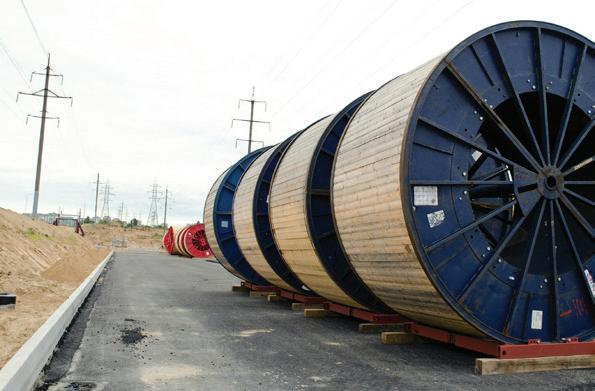
The New York State Departments of Public Service, Environmental Conservation, Transportation, Agriculture and Markets, as well as the County of Rockland and the Town of Clarkstown presented the project with the utility.
The $57.8 million electric transmission project is a new 138 kilovolt underground transmission line, primarily within the public roadway rights-of-way, for a total distance of about five-and-one-half miles between the Burns substation and the West Nyack Substation in the Town of Clarkstown, Rockland County.
“This new transmission project is good news for the region and its customers,” said Commission Chair Rory M. Christian. “It will help improve reliability and reduce the chances of power outages due to an over-stressed electric grid.”
According to the joint proposal, the new power line is needed
to relieve potential overloading of O&R’s existing 138 kV overhead Line 702 between its Burns and Oak Street substations.
Recent summer studies indicate that the power flow on the existing line will exceed its capacity if an outage occurs on another 138 kV line serving the region. Additional anticipated loads from proposed data centers in the Orangetown area will increase the potential for overloading under the same contingency.
Should such overloads occur, load transfers to adjacent substations will be needed and, if the overloading persists, load shedding will occur to prevent damage to the existing conductors. Once completed, the project will immediately alleviate loads on the existing line, improving the regional transmission network’s overall resiliency and power source reliability to southern Rockland County, while using existing ROW without visual impacts.
Two public statement hearings were held on May 25, 2022 at the Rockland County Seat, New City, to receive public comment. No party is challenging the joint proposal or the project.







With Puerto Rico’s climate zones and year-round growing season, overgrown vegetation is responsible for more than half of LUMA Energy’s outages to its 1.5 million customers on the island. The utility has cleared 3,900 miles of power lines since June 2021, and by the end of 2026, it expects to clear 16,000 miles of power lines — achieving a 35 to 45% reduction in outages.
To take a proactive approach to grid resiliency and reliability, LUMA is zoning in on vegetation clearance as part of its “Building a Better Energy Future” island-wide work plan. The federally-funded projects are mainly focusing on three key areas — vegetation clearing, automation devices and substation modernization.
“Nothing is more important for LUMA than continuing to improve reliability and the service that we provide to our customers. These combined initiatives, designed to build a better energy future, represent billions of dollars of investment into
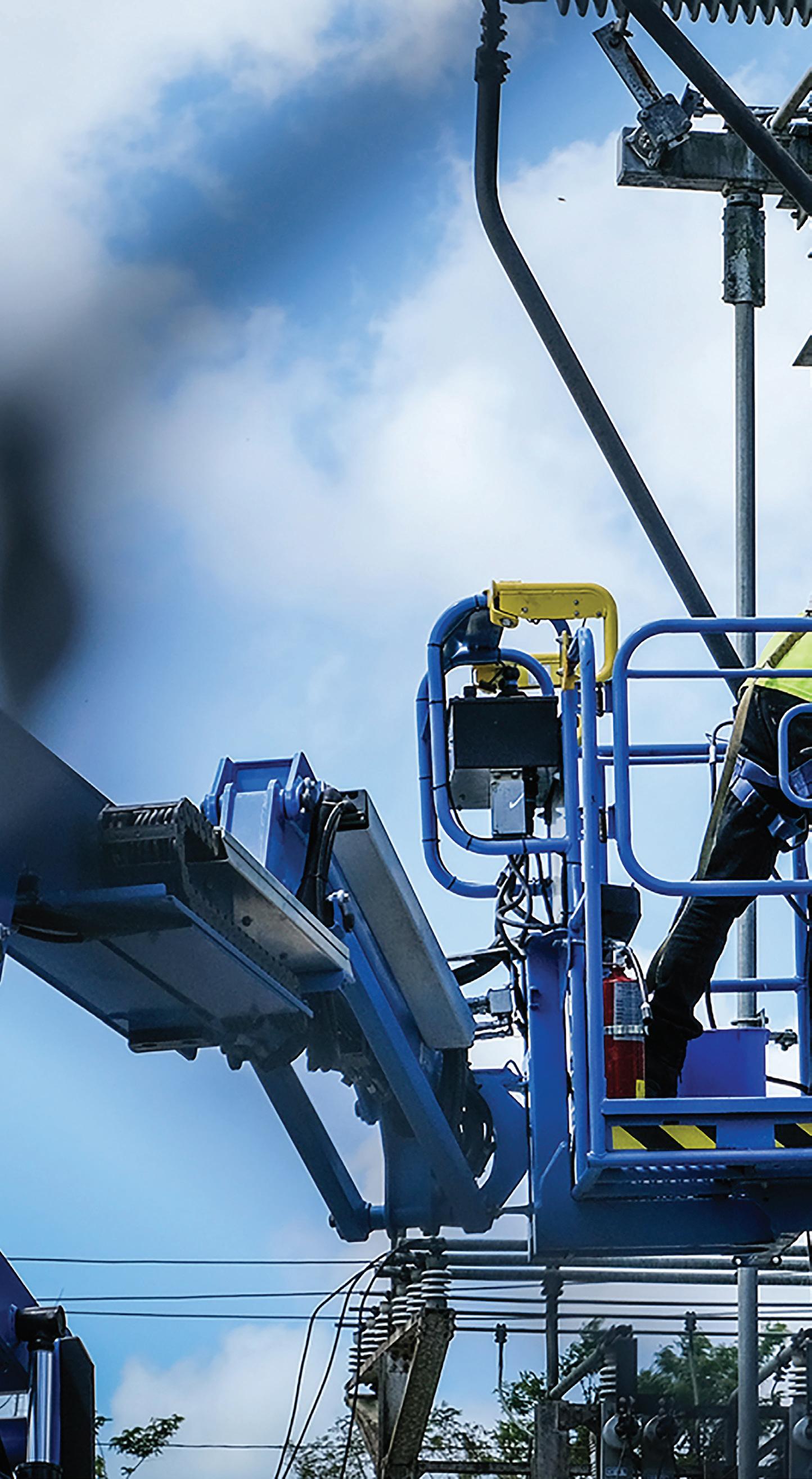

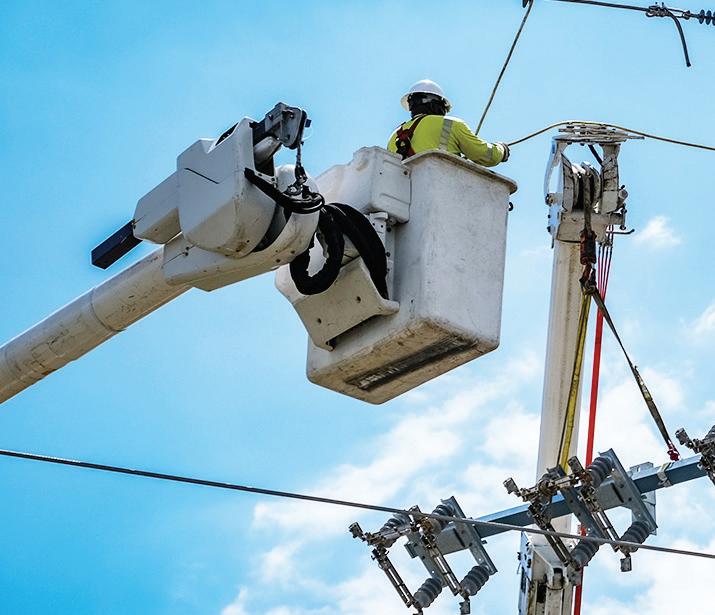
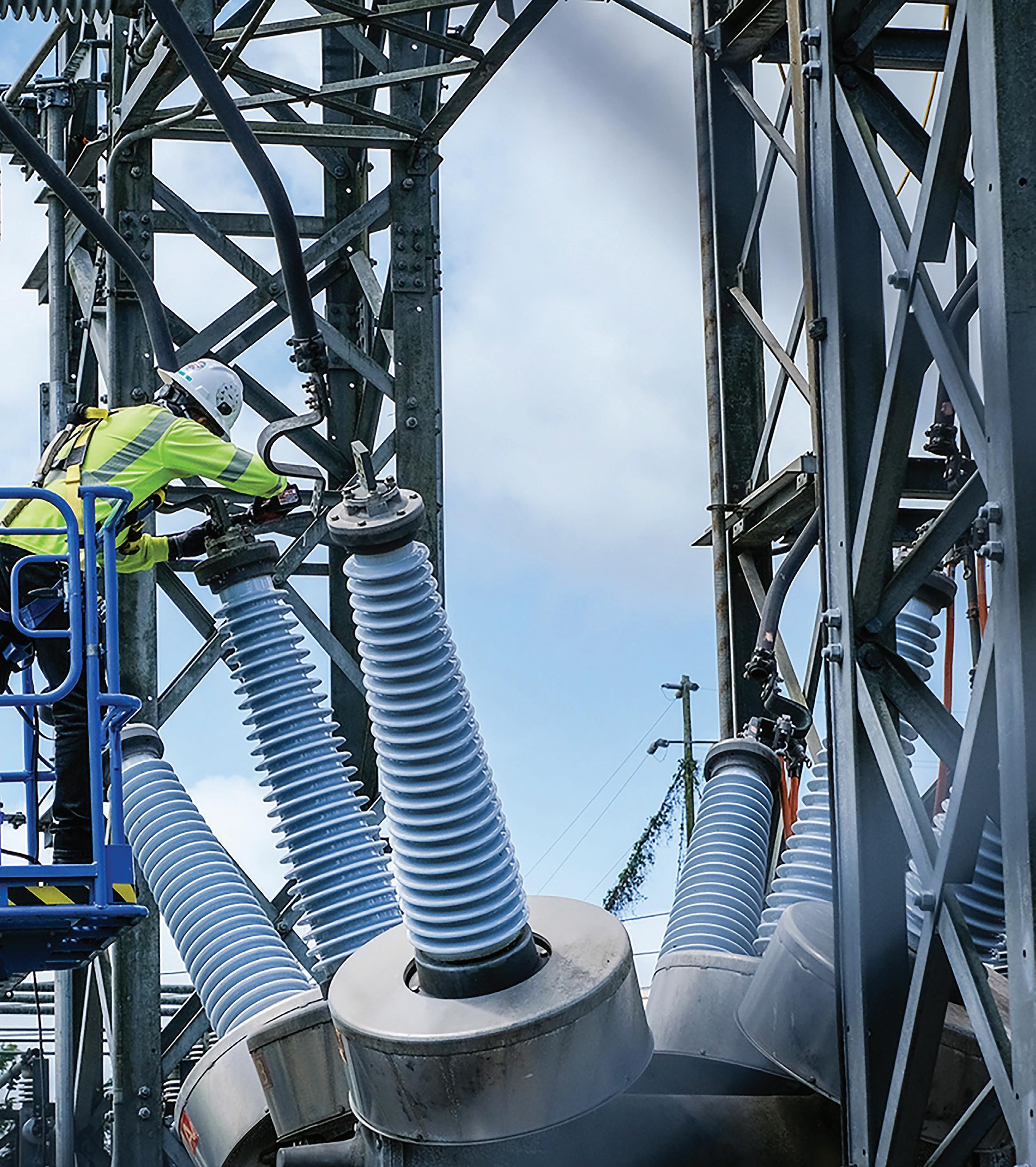

Puerto Rico’s electric system and are focused on improving overall reliability, as well as providing new ways to communicate and serve our customers in every municipality,” said Juan Saca, president and chief executive officer of LUMA.
LUMA recently launched its vegetation clearing initiative, a one-time, multi-year effort to clear overgrowth and vegetation across critical electric infrastructure. The plan will focus on a full remediation of all transmission and distribution rights of way (ROW), substations, and telecommunications sites. As part of its vegetation clearing initiative, LUMA is leveraging federal funding to clear transmission and distribution power lines and establish new ROWs on the island to improve service reliability. FEMA recognized that a vegetation reset is an eligible expense, and the work is also recognized under the Section 406 Hazard Mitigation Fund.
“Vegetation is a big part of our plan, and we are very excited we are beginning a historic project,” said Dr. Shay Bahramirad, senior vice president T&D, Strategy and Sustainability. “This one-time reset will allow us to improve the reliability significantly.”
As part of LUMA’s Island-Wide Work Plan, the utility is planning projects to improve reliability and better serve its customers.
Reliability Improvement Initiatives
• Grid Automation
• Vegetation Clearing Initiative
• Substation Modernization and Rebuilds
• Pole Repairs and Replacements
• Advanced Metering Infrastructure (AMI)
Customer Service Initiatives
• Improved Outage Communications
• Financial Support and Flexible Billing
• Energy Savings Customer Programs
• Community Streetlight Initiative
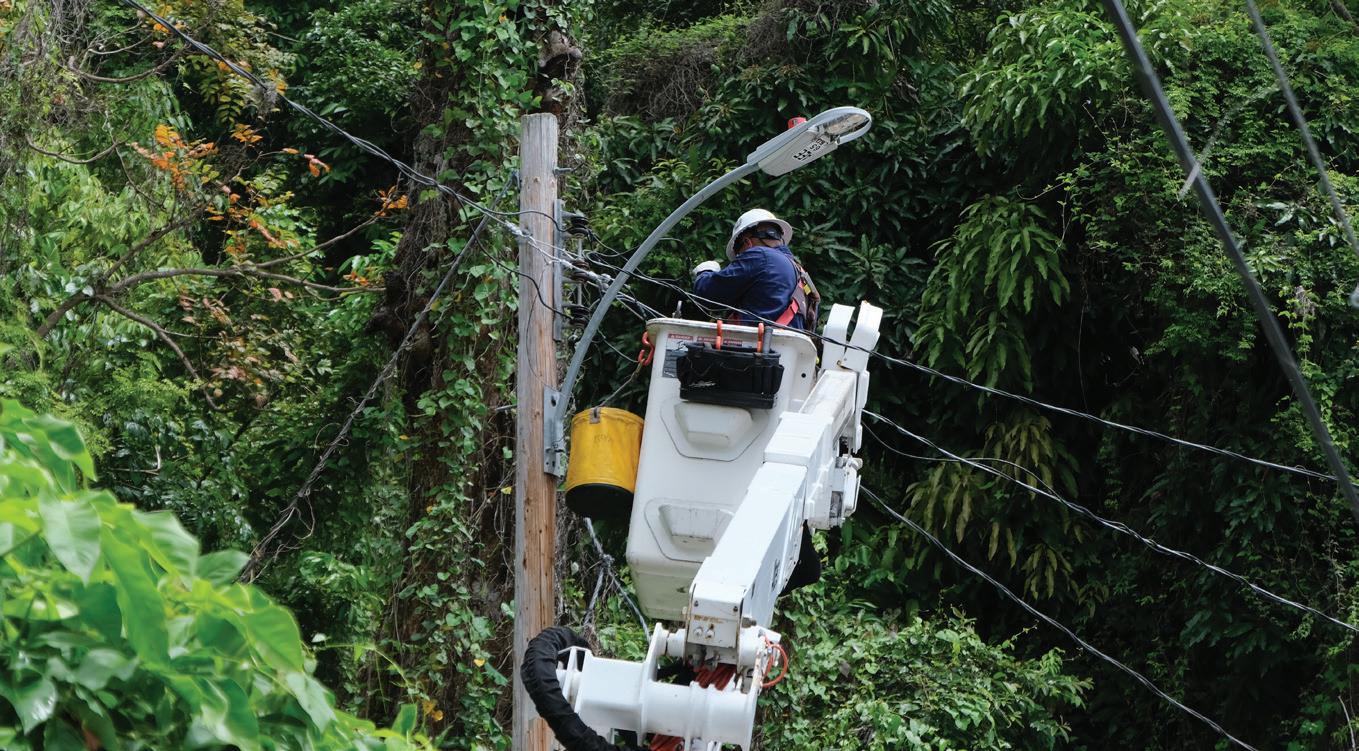
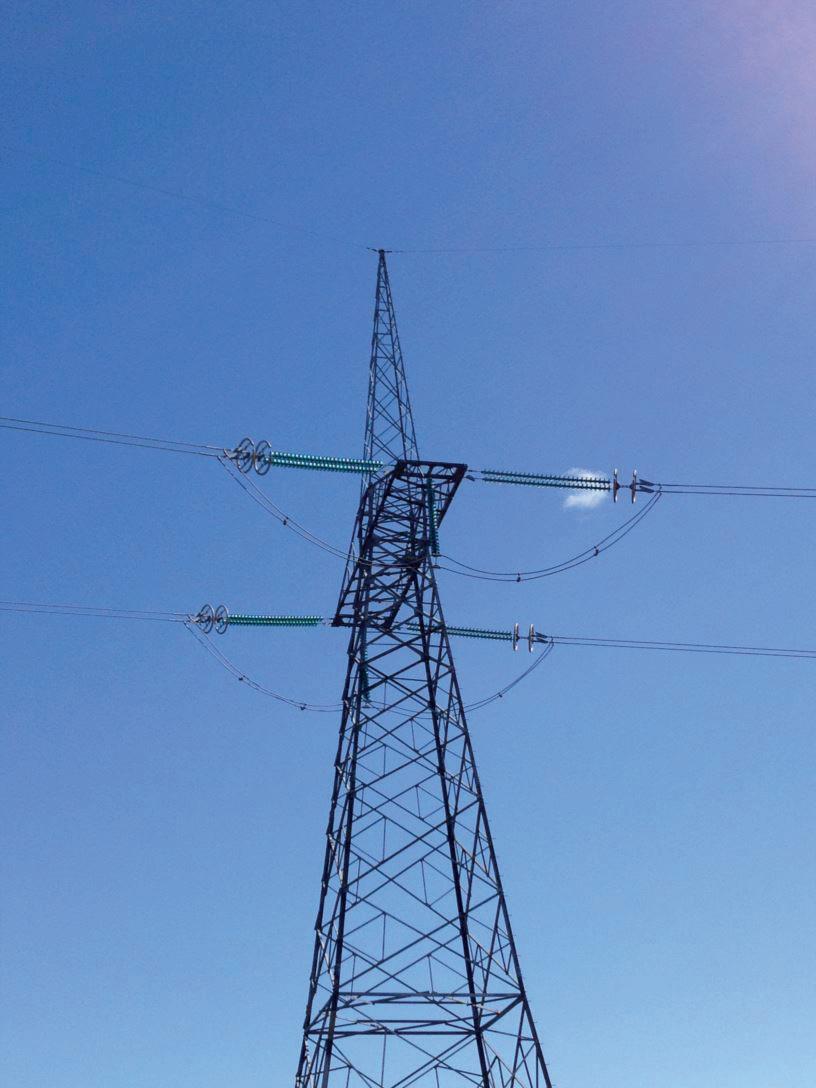
LUMA has been partnering with the Central Office of Recovery, Reconstruction and Resilience (COR3), the governor of Puerto Rico and the Energy Bureau on the initiative. Each shares a collective commitment to executing the project, and together with the federal government, is making the necessary reviews, she said.
“This is a historic opportunity for Puerto Rico to not only improve the reliability and resiliency of the system but make it possible to rebuild the whole grid to provide enhanced levels of service,” Bahramirad said. “We are incredibly thankful to our local and federal government partners for their continued support in making this possible for the communities in Puerto Rico.”
During the first year of the plan in 2024, the vegetation clearing crews will clear 5,700 miles, and the second year in 2025, they will clear 6,900 miles. The third year, they will clear the remaining lines in the system.
“After the first year of the program, we are going to reduce the frequency of outages by 15 percent,” Bahramirad said.

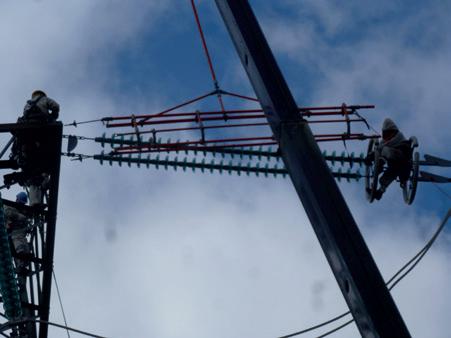


“This will have a significant impact on customer outages.”
Along with the sheer scope of the work, LUMA is also committed to comply with environmental laws and regulations related to vegetation, Bahramirad said. For example, the utility must comply with regulations set forth by the USDA, Forest Services, Puerto Rico Department of Natural and Environmental Services, U.S. Fish and Wildlife Services and others.
“Complying with environmental laws and regulation, protecting endangered species and environmental stewardship are LUMA priorities,” Bahramirad said.
In addition, many of the ROWs haven’t been touched or cleared per industry standards for many years, which creates additional obstacles for access. In addition, LUMA must take outages in certain cases to perform the work safely on the line.
“Because of the state of the grid and the extreme heat that everybody around the world is experiencing these days, it needs to be done very methodically,” she added. “These are a few of the challenges that we have to overcome, but we are committed to moving this project forward because of the significant implication to our customers.”
LUMA is focusing on creating improved access to the power lines to not only improve reliability, but also help to expedite the grid modernization projects.
“It’s going to help us to move forward with the construction and transformation of the grid faster because it takes less time to get to the structure, for instance, to change a pole on top of a mountain.”
During the vegetation clearing reset, LUMA is installing sensors and leveraging LiDAR technology to keep track of the progress, create a proper database and perform analytics moving forward. For example, LUMA’s team is taking LiDAR images of the ROWs to be able to establish the proper ROWs and understand the type and intensity of vegetation in different areas.
“We made a commitment to the federal government that we are going to ensure that moving forward after we cleared one time, we’re going to maintain it properly per industry standards,”
As part of its Building a Better Energy Future island-wide work plan, LUMA is upgrading its electrical system. At the same time, it’s changing the way its communities are illuminated by installing new streetlights featuring LED technology. Through the FEMA-funded Community Street Lighting Initiative, LUMA’s line crews are installing streetlights that consume about 65% less energy and last up to four times longer than conventional sodium and mercury lights and have an added benefit of protecting the local marine life.
“We have installed streetlights that comply with all applicable laws and contribute to the conservation of endangered species,” said Heriberto González Méndez, director of LUMA’s Community Street Lighting Initiative.
“This initiative brings significant improvements to public safety and energy efficiency in communities across Puerto Rico.”
To date, the utility has modernized hundreds of streetlights across the island, including those in sea turtle nesting areas. LUMA is coordinating with turtle conservation groups like 7 Quillas to ensure a safer environment for the reproduction and survival of the endangered species.
“Light pollution is very harmful to turtles because it confuses them and leads them away from the coast,” said Karen Schneck Malaret, education coordinator for 7 Quillas.
See the map below to see where the new streetlights have been installed on the island.
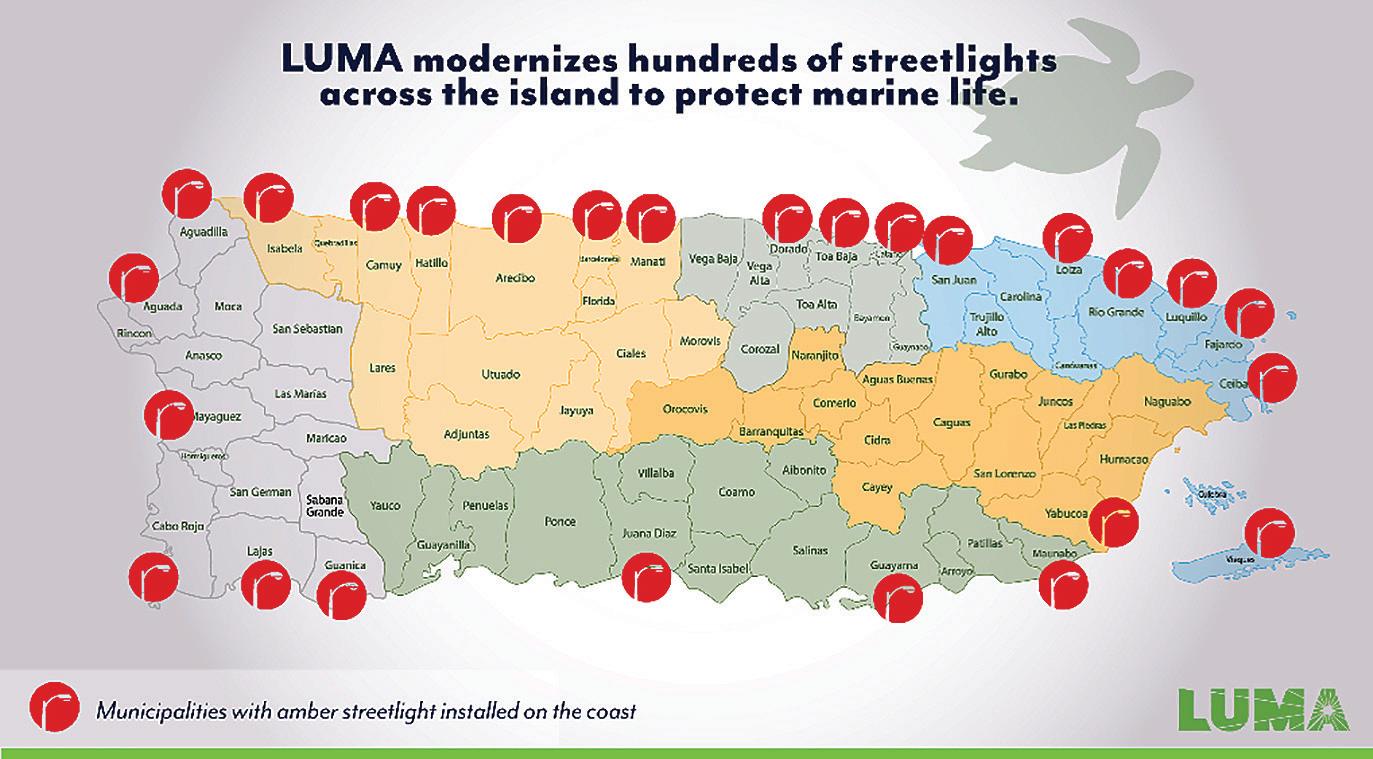
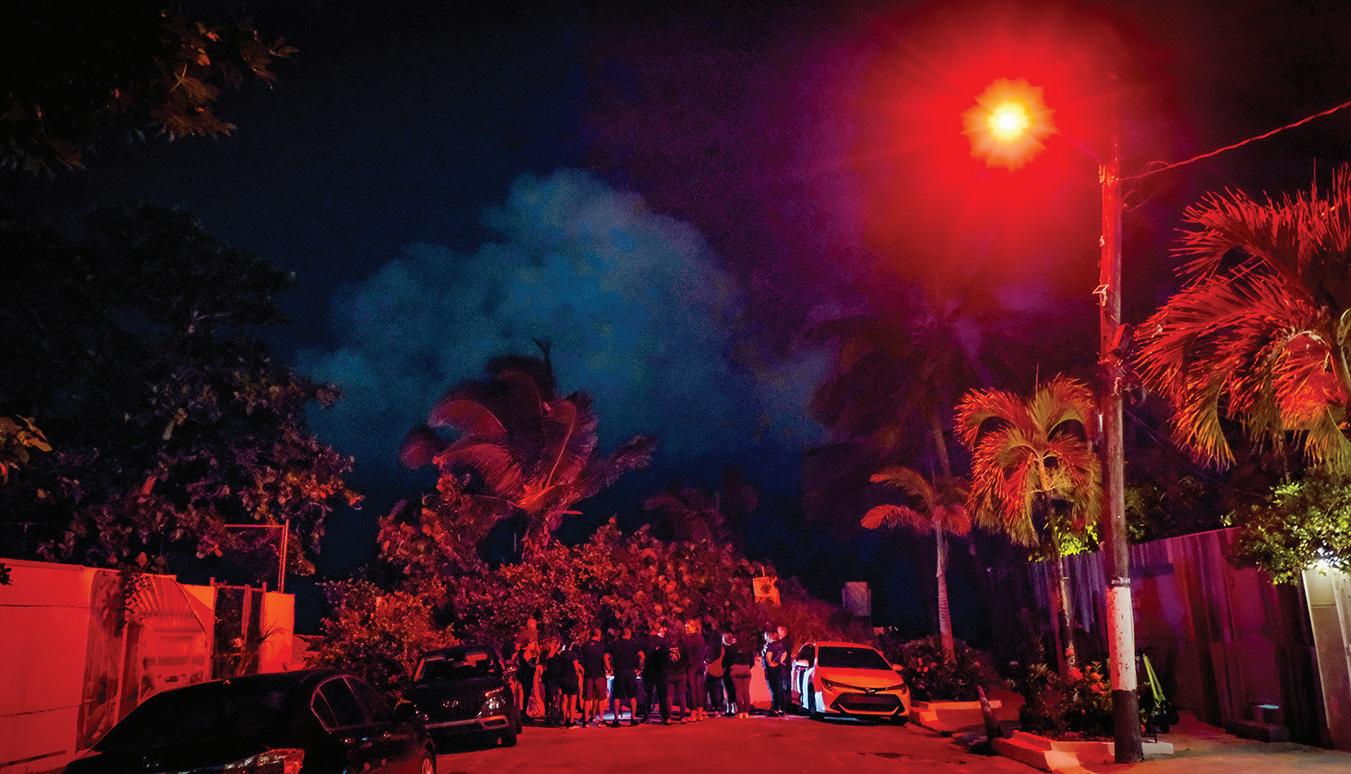

Bahramirad said. The analytics and data gathering will help us to establish a condition-based system.”
To ensure that it is using the best academic practices and talent as part






of this initiative, LUMA is in dialogue with the University of Puerto Rico and two other universities in Puerto Rico. The utility has hired 200 recent graduates from six universities in Puerto Rico.







An additional 1,300 to 1,500 new jobs will also be created to remove hazardous vegetation from across the island.
“This young, energetic talent is going to help us do vegetation clearance Steel











As an expert in the world of IEC 61850, I know how important testing the SAS and SCADA is. StationScout provides a really simple and clear overview of the communication within automation and control. Both the behavior of IEDs and all signals transmitted are visualized transparently. The dedicated powerful test set establishes a cybersafe connection to the station network. StationScout is the ideal tool during the entire lifecycle of IEC 61850 systems.
www.omicronenergy.com/StationScout

going forward, do proper analytics and make sure we keep it the way it has to be,” Bahramirad said.
Because Puerto Rico has various climate zones, it has different types of vegetation on the island, compounding the challenge of vegetation clearing. “The southern part of the island is drier compared to the middle, which has a mountainous area,” Bahramirad said. “This does create different challenges for the execution of the work as well as for the maintenance.”
By partnering with the University of Puerto Rico, LUMA is striving to understand the locality of plants and vegetation and learn how to use environmentally friendly treatment. “We are looking potentially into planting different types of vegetation under the ROWs,” she said. “For sure, it will not be a type of plan that creates an invasion, but it’s one of the scopes of collaboration with the University of Puerto Rico.”
Beyond vegetation clearing, LUMA is also installing smart meters and grid automation devices. As part of the utility’s $876 million Meter Modernization Initiative, LUMA will install more than 1.5 million smart meters over the next three years. The smart meter technology will expedite response and service restoration through improved, remote outage detection technology.
To further help increase visibility into its transmission system, LUMA has installed sensors on different structures so when a fault occurs in the system, the field workforce can quickly identify its location.
“This type of data is going to help us to do the work analytically and more intelligently,” Bahramirad said. “We are trying to tackle improving the frequency and duration of outages from many different fronts, and one of the most important components is automation devices. They will help us to isolate the fault and impact a fewer number of customers so we can replace them faster and send our crews to the right place.”
In the past two years, the utility has installed 3,500 automation devices, and it plans to install 5,000 automation devices this year and next year. In five years, the utility plans to have 35,000 automation
devices varying from three-phase reclosers to single-phase reclosers to cutouts and fault current indicators.
Another important benefit of this work is that it will help with integration of renewables and require less truck rollout, which means less carbon footprint. To determine where to install the devices, LUMA has been receiving technical assistance from six national labs and the Department of Energy.
“We look into different parameters such
as the number of customers and historical reliability data,” Bahramirad said.
To increase the resiliency of its system, LUMA is also focusing on both modernization and the rebuild of infrastructure damaged by hurricanes. In addition, the utility is upgrading obsolete equipment past its life expectancy and providing operational flexibility and station redundancy.





“A proper planning hasn’t ever been done in Puerto Rico,” Bahramirad said. “We have been doing area planning and doing studies for both the transmission and distribution to identify the locations to eliminate the single point of failure.”
LUMA has seven new greenfield substations and is also replacing several high-voltage breakers and transformers to improve the resiliency of the system and reduce the likelihood of blackouts. For example, as part of its FEMA-funded Substation Modernization Initiative, the utility completed critical upgrades and improvements to the Sabana Llana substation in early December 2023, resulting in improved reliability across the island and optimizing distribution operations for customers served by other nearby substations.
At the Sabana Llana Substation, workers replaced breakers and an outdated transformer with industry-standard modern equipment. Crews also performed thermal imaging inspections and conducted necessary repairs at the substation and cleared vegetation. LUMA’s
employees also protected crews and critical infrastructure by replacing 1200 ft of fencing and installing a secondary grounding area.
“The Sabana Llana substation is a critical part of achieving our goal to improve system reliability and help reduce the risk of future outages for our customers,” Saca said. “Work like this will help us achieve what we know the people of Puerto Rico expect and deserve — a more reliable energy service with fewer outages.”
LUMA is not only modernizing substations, but also upgrading its electrical system to improve reliability. Line workers have installed more than 10,400 poles as part of the utility’s commitment to build the overhead system to withstand 160 mph winds. LUMA plans to replace a significant number of the poles on the island in the next five years.
Due to the environmental conditions, some of the poles are constructed of concrete or fiberglass, while others will be made from steel. The line workers are also installing wider fiberglass crossarms, which aren’t as susceptible to corrosion

due to saltwater exposure. The utility is keeping track of the assets in the system so as they move forward with modernization, it can do condition-based maintenance, ensuring that the assets have a longer lifespan.
Significant progress has been made in improving reliability, improving customer service and integrating more renewables than the past decade, but Bahramirad said there’s still a long way to go.
“We empathize with our customers that they have to experience outages, and we are working very hard to make sure that we design and modernize the grid, not only for the next two or three years, but for the next three generations of Puerto Rico,” she said.
AMY FISCHBACH (amyfischbach@gmail.com) is the field editor for T&D World magazine.
Editor’s Note: The statistical data in this story are accurate as of press time. To listen to Dr. Shay Bahramirad talk about LUMA’s island-wide work plan, tune into the Line Life Podcast by going to linelife.podbean.com.


















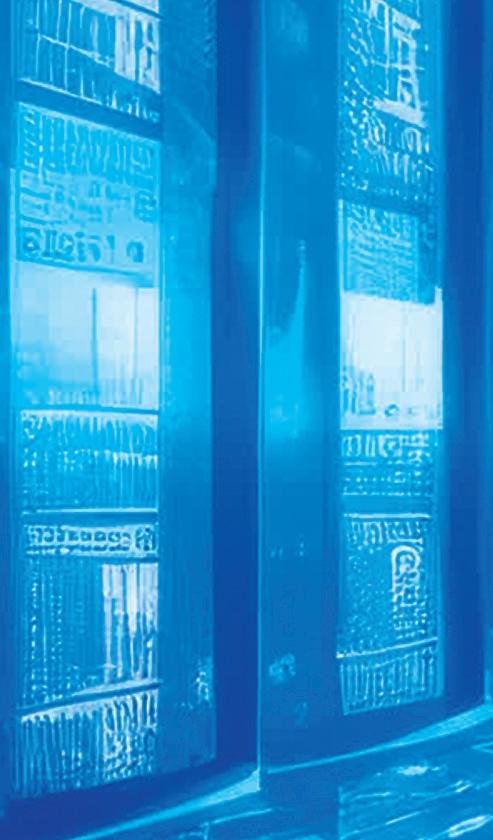



















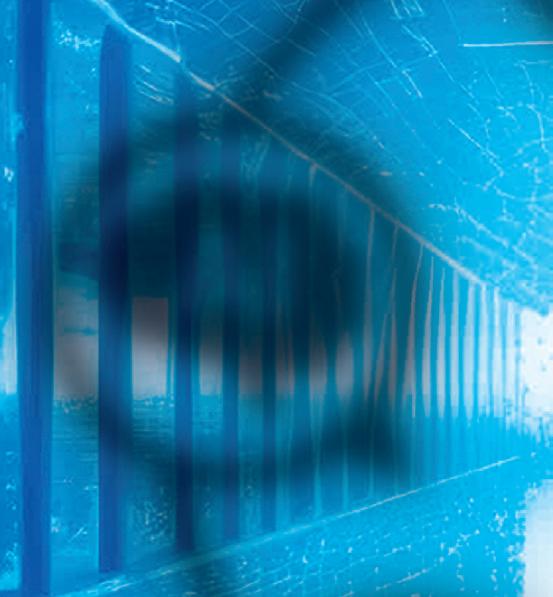





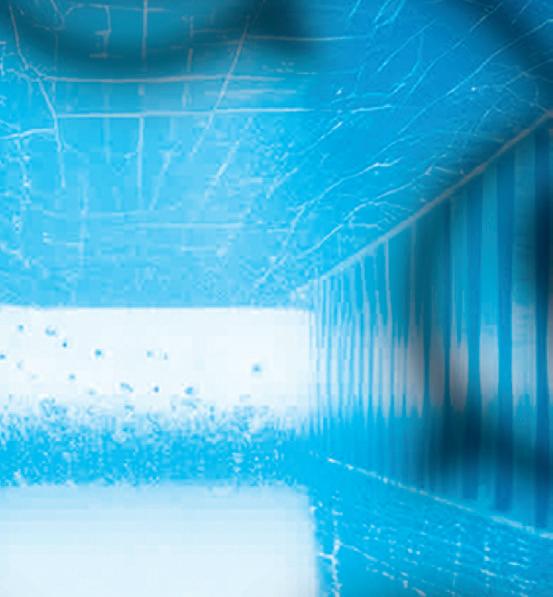













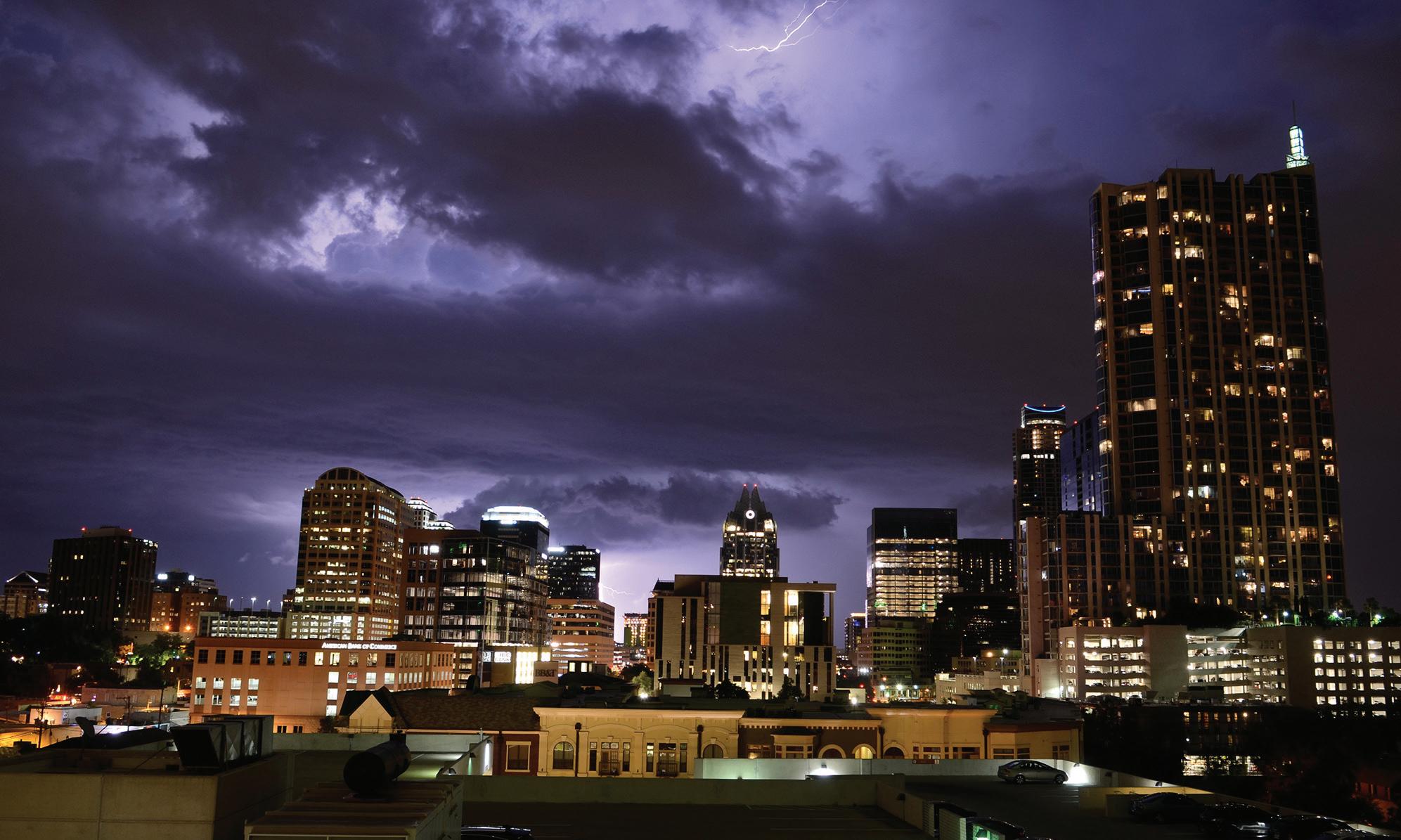
Texas has emerged from two winter storms in the three years since Uri with no major issues, but recommended reliability plans are still not fully implemented.
By RYAN BAKER, Associate EditorSince the fatal effects of Winter Storm Uri struck Texas three years ago, two other major, named storms, hit the region and neither caused the power grid to fail the way it did in 2021.
It remains an open question how much Texas’ energy sector – famously deregulated and operating in some ways as an island unto itself – will fare during future winter storms, as well as summer heat waves and severe weather.
In January, Winter Storm Heather entered the U.S. in Oregon, caking Portland in ice before hopping the Rockies and sweeping through the South. Snow blanketed the area from Tulsa to Dallas and ice choked roads in Houston and San Antonio. There were some scattered, local outages, but the bulk power delivery system stayed on its feet, despite an even higher peak power surge than during Uri (78,138 MW during Heather versus 69,812 MW for Uri).
During Christmas 2022, Winter Storm Elliott caused outages for millions of Americans in the Eastern half of the country. According to a joint study into the storm’s impact by FERC and NERC, there were 3,565 unplanned outages in the Eastern Interconnection, largely resulting in 90,500 MW worth of power
units that were offline unexpectedly. The commissions compared this impact to Uri’s impact on Texas, adding that this storm showed infrastructure east of the Mississippi is still vulnerable to extremely cold weather.
Texas was on the outside edge of Elliott’s impact, with the impact falling hardest on the South, Mid-South and Appalachian states. Both storms could be called glancing blows compared with Uri’s direct hit.
During Elliot, north of 80% of outages were the fault of temperatures being outside of historical data – whether the cause was a power plant shutting down, a natural gas wellhead freezing or some other temperature-related cause.
FERC Chairman Willie Phillips said the cause of wide-spanning, long-lasting outages, severe weather, is not going to go away.
“It shouldn’t take five winter storms in 11 years to show us the gravity of the situation we find ourselves in,” Phillips said in September 2023, adding that some recommendations from his commission’s 2021 Uri report are still not implemented.
We are now three years removed from at least 240 and perhaps as many as 700 lives lost and 10 million plus people losing
power and there are still doubts on whether Texas can stand up to another large-scale event.
The main issue is being able to implement regulations and practices for events that are statistically low to happen – at least historically.
When the Electric Reliability Coun-cil of Texas, the operator for most of Texas’ power grid, instructed utilities to minimize power demand or risk more damage to the grid during the winter storm in February 2021, transmission companies were forced to cut off power to portions of the natural gas delivery system. Freezing wellheads and offline processing facilities made natural gas producers unable to supply adequate fuel to power plants, exacerbating the problem in a state where natural gas is the No. 1 source of electricity at more than 41%.
The new leadership at regulatory bodies is quick to point out that positive change has taken place. New weatherization regulations for energy facilities were adopted in May 2021. The Texas Public Utility Commission was tasked with creating and enforcing criteria for power plants, while the powerful Railroad Commission of Texas, which regulates oil and gas extraction, gas utilities, coal mining and other aspects of fuel and power production, set new requirements for natural gas facilities.
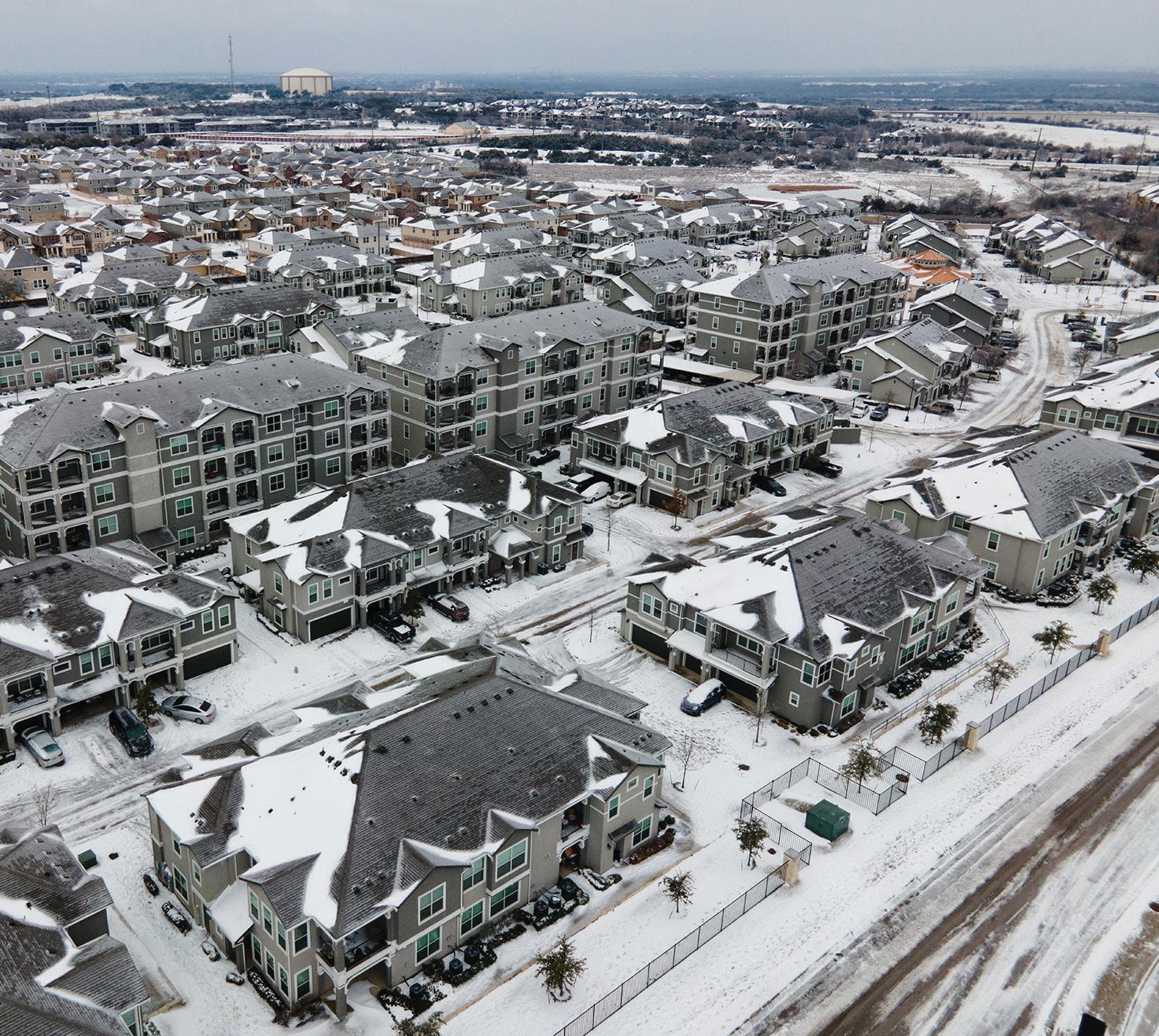
A raft of new state laws required officials and industry players to create a plan to ensure that important natural gas facilities continue to get power even if rolling blackouts were ordered. Other laws mandate winterization for power plants – a big

item in FERC and NERC’s recommendations for Texas that went unheeded for years – and stiff fines for noncompliance from regulators.
ERCOT also implemented several management and grid operation modifications. They included requiring extra thermal
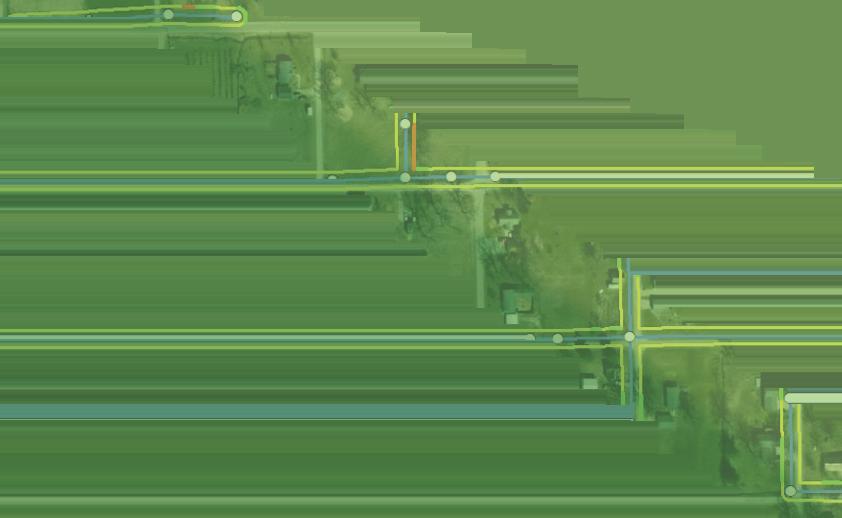





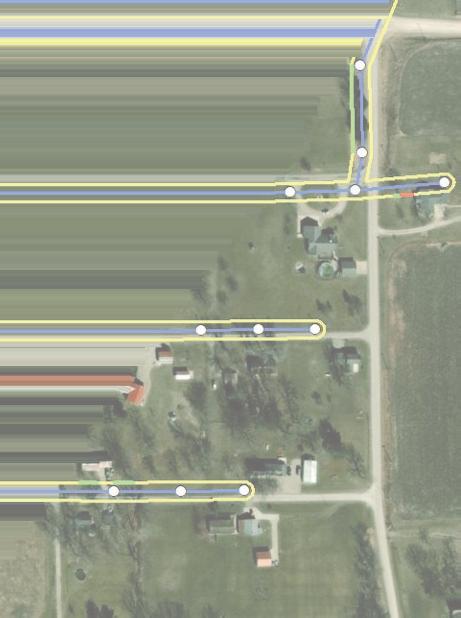








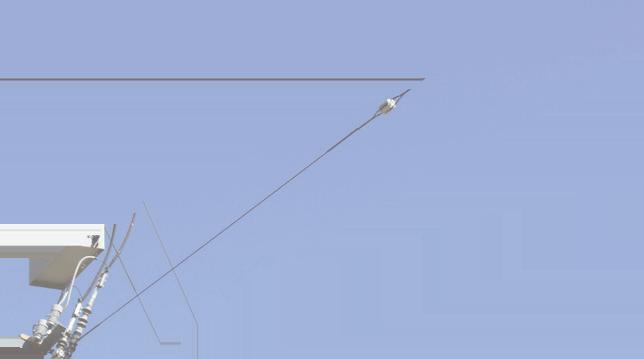



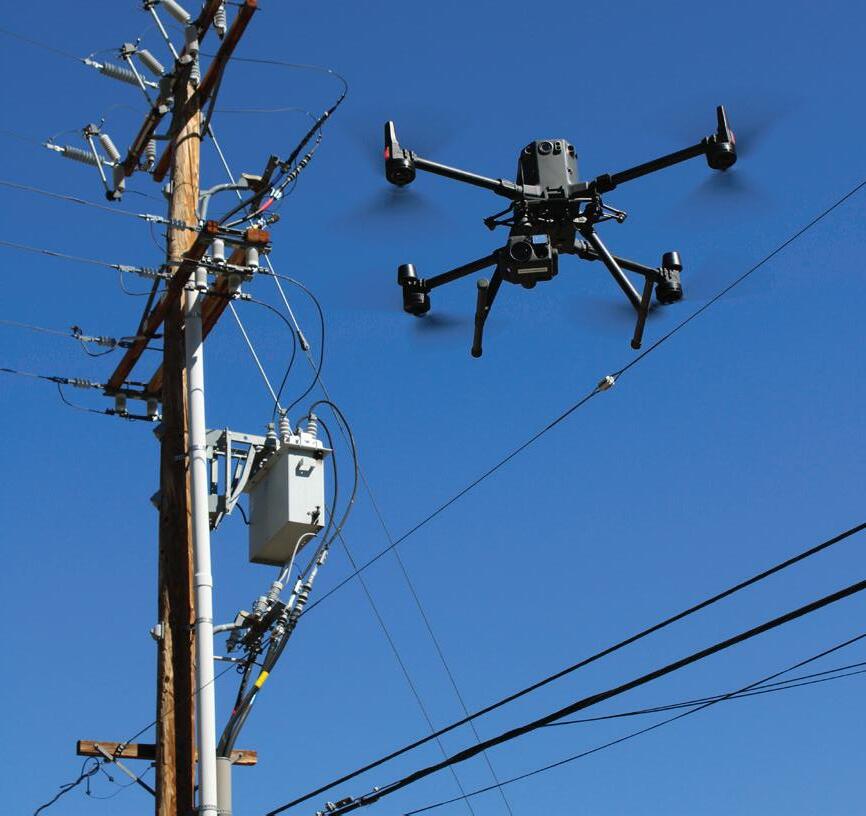




Building on over 130 years of experience, GE Vernova is now an independent, publicly traded company on the NYSE. Together, with our customers, we continue our mission to electrify and decarbonize the world.

gevernova.com


power generation to be retained in reserve if power facilities went offline unexpectedly, or demand exceeded predictions.
Since the detriment to the grid in Feb. of 2021, there have been multiple cases of energy companies either issuing warnings for cold temperatures or requests to minimize the use of power in households.
During Elliot, Texas saw temperatures drop down to the low teens. Electricity demand skyrocketed, reaching levels close to that of the storm in 2021.
Despite these challenges, ERCOT did not have to reduce load during the cold snap since electricity generation and reserves were sufficient. Rolling blackouts were used by several other significant regional grids around the country due to a higher frequency of thermal plant failures brought on by cooler temperatures and precipitation.
A few other recently anticipated cold fronts forced ERCOT, the PUCT, and utilities like Austin Energy to release weather watches and to recommend lower electricity usage.
• Jan. 15, 2024 from PUCT
• Jan. 10, 2024 from ERCOT
• Dec. 4, 2023 from Austin Energy
• Aug. 24-30, 2023 from ERCOT
• June 20, 2023 from PUCT and ERCOT
Texas’ power grid is still vulnerable to extreme cold and heat as well as severe weather from thunderstorms to hurricanes. It’s safe to say alerts such as these, as well as the weather preparations that accompany them will be necessary in the future.
Investigations and controversies launched quickly after Uri, and many energy leaders changed roles in Texas. There continues to be turnaround in lead roles.
Texas S.B. 2154, signed by Abbot in 2021, increased the size of the PUCT board of commissioners from three to five after Uri, but as of press time only four commissioners are appointed, and none of the current commissioners have been on the job since before
April 2021 (the three in charge during Uri were compelled to step down).
The new law also did away with the requirement that every PUCT commissioner must “be well informed and qualified in the field of public utilities and utility regulation,” but added requirements that they be Texas residents. Some of Texas’ energy regulators were criticized after Uri for living outside the state.
Commissioners Will McAdams and Peter Lake, appointed in April 2021, both stepped down in 2023 before their terms were up. PUCT commissioners serve six-year, staggered terms.
Around the time he resigned, Lake said the Texas power grid had been in crisis when he took over but was now more reliable than ever thanks to the PUCT and ERCOT’s reforms. Lake favored a plan of economic incentives to keep power plants in service and build new ones, but the state legislature preferred laws to pay direct bonuses for bringing new gas plants online and encouraging new plants through loans.
For his part, McAdams said he needed to spend more time with his family, adding the PUCT had a lot of new hires that should keep making progress on shoring up the power grid. In February 2024, he announced he’d be taking a lobbying position.
Thomas Gleeson was appointed chair of PUCT in January 2024. Gov. Greg Abbott, who picked Gleeson, pointed to his long record with the commission.
“Thomas Gleeson’s longtime service at PUCT and wealth of knowledge make him the ideal choice for Chair of the Commission,” Abbott said. “As a seasoned leader with over 15 years of experience at the agency, including serving as executive director and chief operating officer, Thomas will help ensure Texans and Texas communities have the utility services they need.”
Changes have also been in store at ERCOT. Jayapal Parakkuth was named the senior vice president and chief information officer. Venkat Tirupati was promoted to vice president, DevOps and Grid Transformation. Taylor taking on the role of senior vice president, chief financial officer and chief risk officer. Finally, Adam Martinez was given the role of vice president of Enterprise Risk and Strategy.


Anyone in a new job will need time to adjust to the learning curve, however the ERCOT leadership remains upbeat.
“Our responsibility to all Texans is to ensure we continue to maintain a reliable and resilient grid now and in the future. These organizational changes will support ERCOT’s continued mission to implement solutions for the challenges our industry faces and position us to meet this responsibility,” said ERCOT President Pablo Vegas, who took over in 2022.
Vegas’ predecessor, Brad Jones, died in November 2023 after serving as interim president and CEO at ERCOT from May 2021 to November 2022.
Vegas told a press conference before Winter Storm Heather that ERCOT performed hundreds of winterization checks through 2023. After the storm’s impact, the Texas power plant fleet saw roughly half the unit outages as during Uri. Also during the storm, Texas’ solar power sources provided nearly a fifth of generation at the peak of Heather’s impact, setting a record. The state’s powerful wind energy assets contributed up to 30% of power generation during Heather.
ERCOT is looking into another potential source of emergency power: the Pattern Energy Southern Spirit Transmission line, which has been under development for some 10 years – not an unusual span of time for these sorts of projects. In this proposal, Texas would be linked to an extra 3000 MW of power via about 320 miles of new transmission. The line will not be energized until at least 2029, and the states providing that power, Louisiana and Mississippi, have yet to approve the
project. However, Southern Spirit would more than double the capacity of Texas’ present interconnections, according to project developers.
The ERCOT grid currently gets about 820 MW via the Southwest Power Pool and about 400 MW from a pair of lines linking it with the grid managed by Mexico’s Comisión Federal de Electricidad. The Texas Interconnection, managed by ERCOT, continues to operate separately from the Eastern and Western interconnections as a way of sidestepping oversight from federal organizations such as FERC.
The Texas grid has gotten by the cold spells of the past, but they have yet to face anything close to the cold temperatures and outages seen back in 2021.
What’s most concerning is, even though temperatures were about 10 degrees warmer, power demand during the most recent incident almost surpassed levels from Uri. The day before the cold front came, ERCOT’s own demand estimate was off by 12,000 MW due to changing factors such as home heating electrification and population growth.
Grid reliability is becoming more and more dependent on an aging fleet of coal and gas facilities as energy demand rises. In periods of extreme heat or cold, these facilities are less effective at counteracting projected dips in intermittent power sources like wind or solar. Building new power plants is such an expensive prospect for companies that it is difficult to


imagine a few incentives passed by the state legislature moving the needle much.
Regulators are assessing potential improvements to the electricity market. However, in the interim, until additional capacity is brought online under a better market structure, ERCOT will face difficulties in maintaining balances between supply and demand throughout extreme weather events due to the increasing discrepancy between the increasing renewable capacity and completely transportable resources.


Texas sits roughly in the middle of the class on energy efficiency – tied for 29th place in the American Council for an Energy Efficient Economy (ACEEE) rankings, which consider state laws, energy codes and utility programs, among other things.
The Lone Star State requires its utilities to cut down peak demand by 0.4%, a regulation unchanged since 2011, according to ACEEE. The state also lacks a demand response program that could compensate ratepayers for using less electricity at peak, which could help.
Local utilities and retail companies are doing what they can on a piecemeal basis with their own programs, but overall, it seems easier to save electricity than it would be to build a fleet of new power plants.
Troublingly, Texas has also become a haven for cryptocurrency miners, attracted by lax regulations and cheaper energy. Bitcoin miners eat up some 2100 MW in Texas, according to the Texas Blockchain Council, a trade group. The legislature reacted by putting tax breaks for miners on the chopping block.
ERCOT has said crypto miners applied to them to use as much as 20 GW, which is a staggering figure to consider when 7.5 GW is what ERCOT found itself needing to shed three years ago to prevent the complete collapse of the Texas grid.


Crypto traders point out that ERCOT can strike deals to pay miners to switch off their energy-hungry rigs when power supplies are tight, but the cost of that gets passed on to ordinary ratepayers. Texas consumers still remember getting stuck with record-high utility bills during Uri thanks to regulations intended to encourage energy production during times of high demand. Texas courts are still weighing the question of whether this should have been done at a time when millions of people were in a blackout. Wood Mackenzie and the New York Times estimated the demand from crypto mines have led to utility bills rising about $1.8 billion.
Texas remains an oddity in the power sector. Its mostly deregulated status combined with its vast capacity to produce its own energy and its pride in both has led to a several energy panics, including during Uri. We are mostly concerned with power grid stability here, and that is only achieved with long-term reliability. Three years is not long enough to determine whether we are there yet.
Some of Texas’ new regulations have teeth enough to be an improvement, but continued changes will be needed as temperature extremes continue to be the rule rather than the exception.
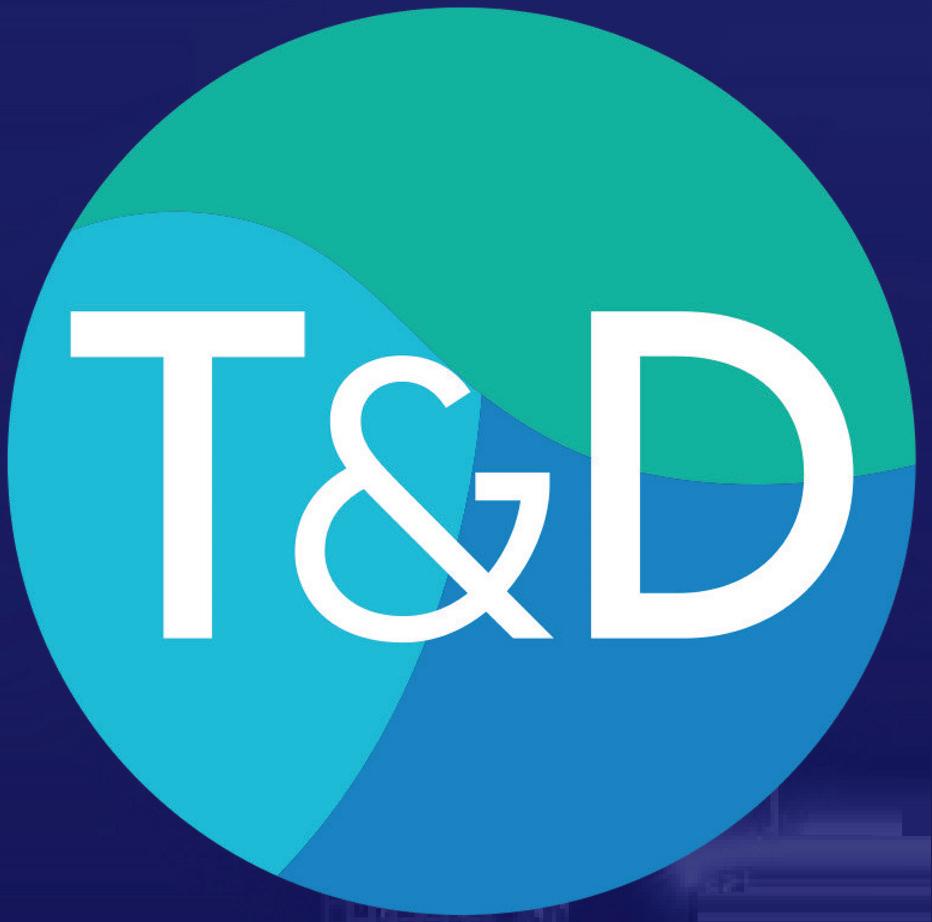


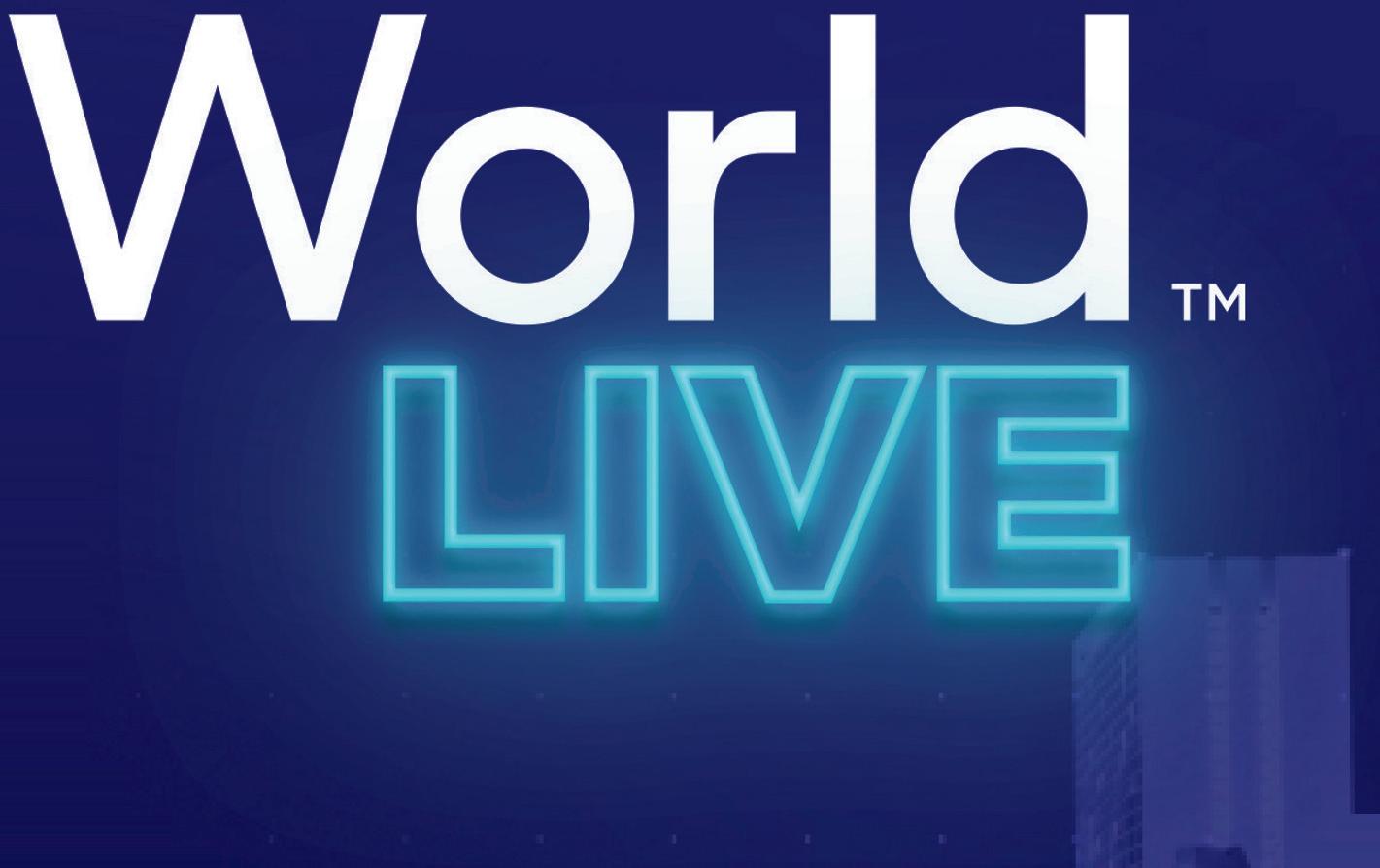

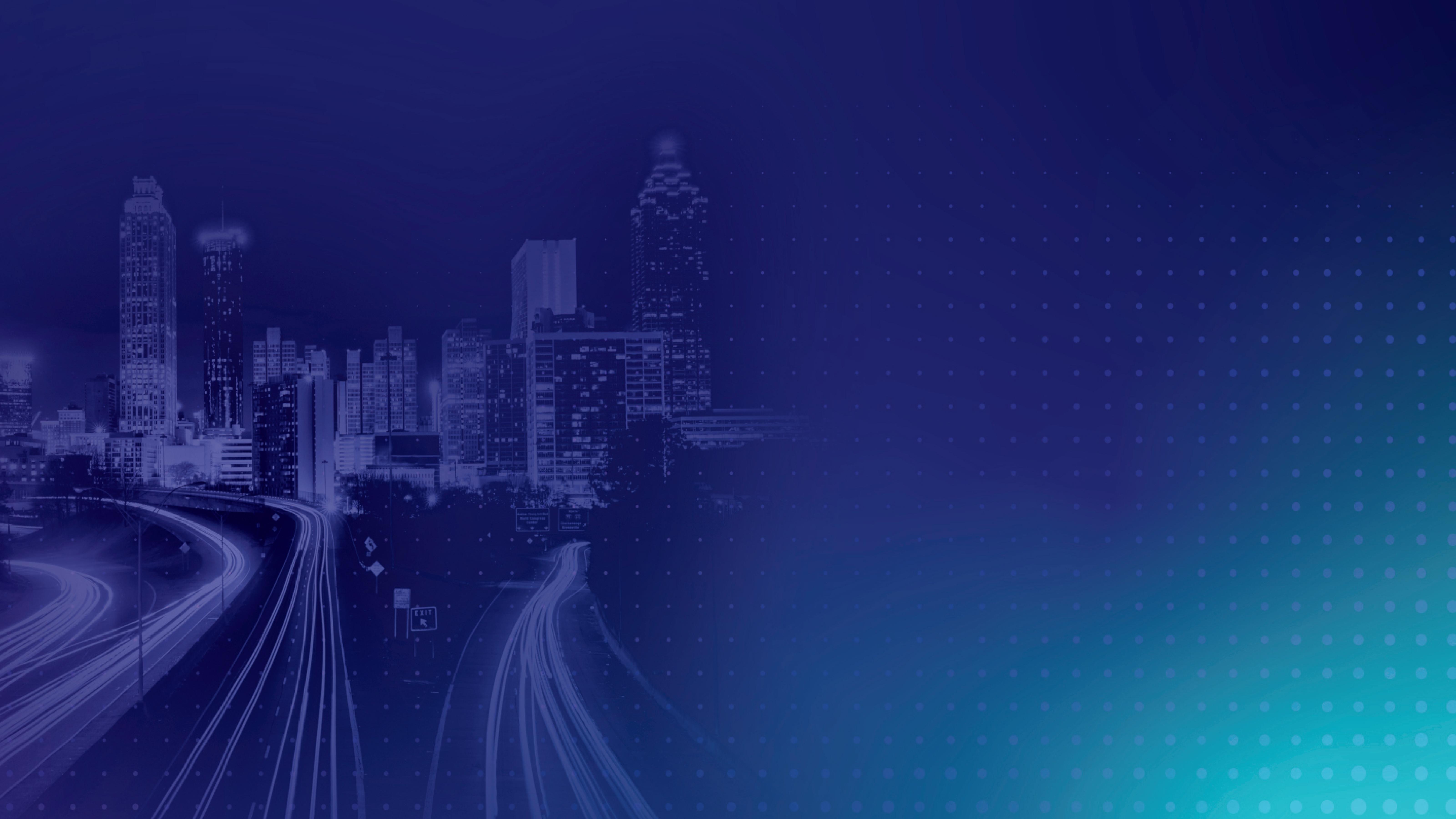
Despite a bumpy start, EnergyUnited overcomes substation inspection hurdles to transform its processes, maximize talent and improve efficiency.
By KARLA RUST, EnergyUnitedTechnology is often hailed as the great arbiter for working smarter instead of harder. But for EnergyUnited’s technical services team, the paperless system that used to be in place delivered the opposite effect — creating more work, not less. The technology was not bad, per se, but ultimately — having been adapted from another solution — it did not deliver as expected or needed. The result was a laborious, inefficient process.
So, when the cooperative decided to abandon the previously implemented technology used for substation inspections in favor of its old paper-driven processes, it became clear help was needed.
Its return to paper processes was not a case of the coop being technologically averse. With roots back to the late 1930s, EnergyUnited differs from the coop it used to be. Formed in 1998 following the merger of Crescent Electric Membership Corp. and Davidson Electric Membership Corp., EnergyUnited’s footprint in North Carolina now stretches across the state, serving 19 counties.
While still primarily rural, the coop has experienced increased suburban growth and is the largest of the 26 electric coops in North Carolina, with over 12,000 miles (19,312 km) of distribution overhead and underground lines, 199 miles (320 km) of transmission lines, 71 substations and 11 12.5-kV delivery points.
The challenges EnergyUnited faced with its original paperless system had little to do with using technology and everything to do with having the right technology. An initial paperless process that should have streamlined substation inspection reporting instead created organizational challenges that, in the words of author Aldous Huxley, felt like this: “Technological progress has merely provided…a more efficient means for going backward.”
EnergyUnited’s technical services team oversees the construction, maintenance and repair of substations and downline

equipment as well as maintains inspection sheets and equipment information generated from substation inspections. Unfortunately, problems with extracting and reporting data emerged shortly after initial attempts to incorporate paperless substation inspection forms began. The primary issues were threefold:
• Platform failures led to inspection data loss. Inspection data, completed offline on tablets and then uploaded once technicians returned to the office, often was lost to upload failures. Once uploads began, the paperless platform automatically deleted data sheets from the system, regardless of whether an upload was successful. Upload failures resulted in data loss and, because the information was unrecoverable, a technician could lose an entire day’s work.
• Completion date variances required manual overrides. Extracted inspection data is based on the date of completion within a month. Utilities run at month end to transfer inspection data into a spreadsheet, which is then used for monthly reporting. However, the system being used did not allow for timing variances. For example, if technicians got an early start on scheduled monthly inspections (before the 1st of the month), the utility would not pick them up, meaning that month’s data would be skewed. There was no way to easily incorporate completion variances. Every month required time with IT to figure out how to tweak the utility and extract all the inspection data.
• The application was inflexible. The system offered no internal flexibility to modify inspection sheets to keep
up with substation changes. Therefore, software modifications were difficult and expensive, each time requiring quotes from the vendor and internal approvals to spend money on updates.
These issues created an organizational ripple effect that made reporting difficult at best and inaccurate at worst. To prevent continued data loss and regain flexibility, EnergyUnited abandoned its paperless process and returned to capturing inspection data using paper.
EnergyUnited’s return to paper was out of necessity — but temporary. The manual process enabled the utility to make changes, but it was highly inefficient and labor intensive. Inspecting technicians printed over 100 inspection sheets each month, hanging on to each one until all inspections were complete, and changes to substations or downline reclosers required manual updates.
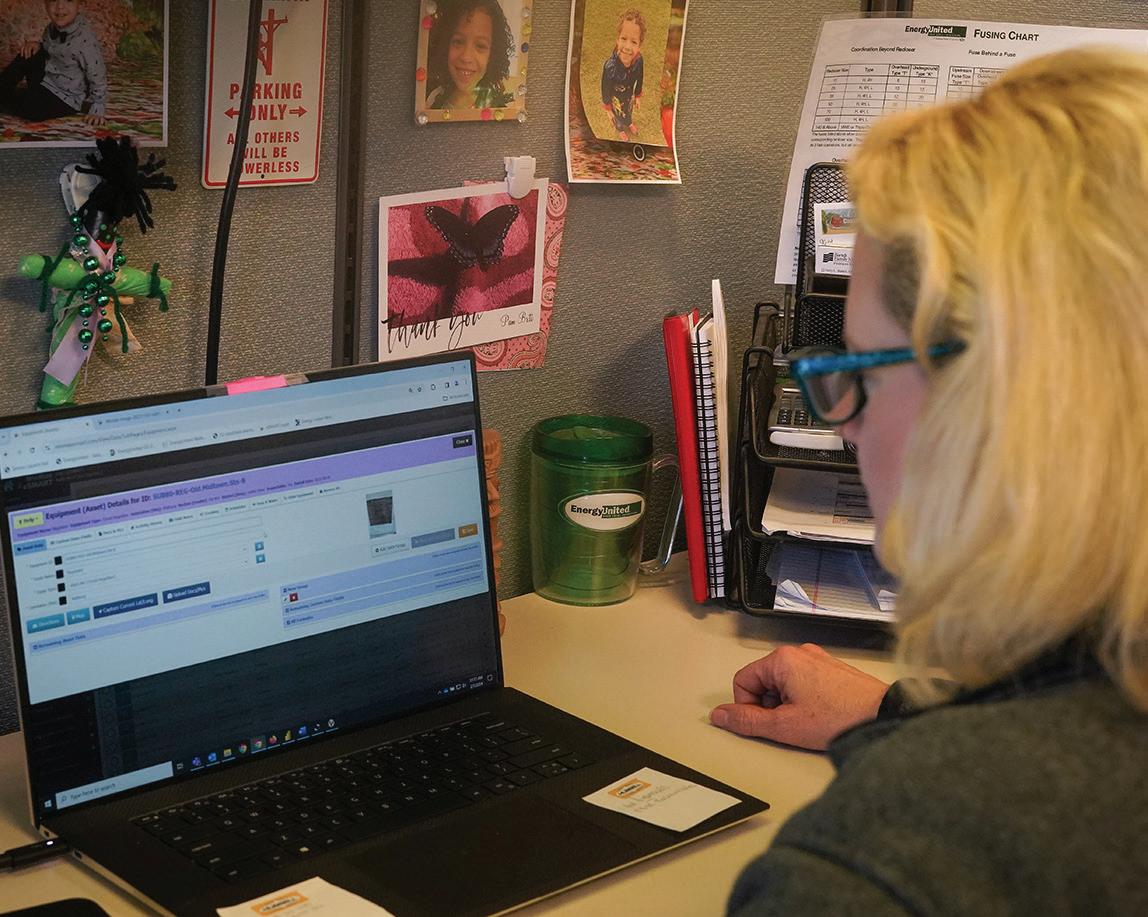
Engineering manually entered inspection data into the monthly substation report spreadsheet; inspection sheets were scanned and kept for one year.
In addition to monthly substation reports, EnergyUnited relied on spreadsheets to maintain equipment lists and information like trip settings and meter multipliers. Because each of these was kept on separate spreadsheets (and in various places), sometimes it was challenging for coop staff to locate relevant data.
The return to paper inspections was a stopgap, but a more viable solution was needed. Realizing change was necessary, EnergyUnited began searching for a new solution.
Ultimately, old-fashioned networking provided a lead on potential software. A neighboring utility was successfully
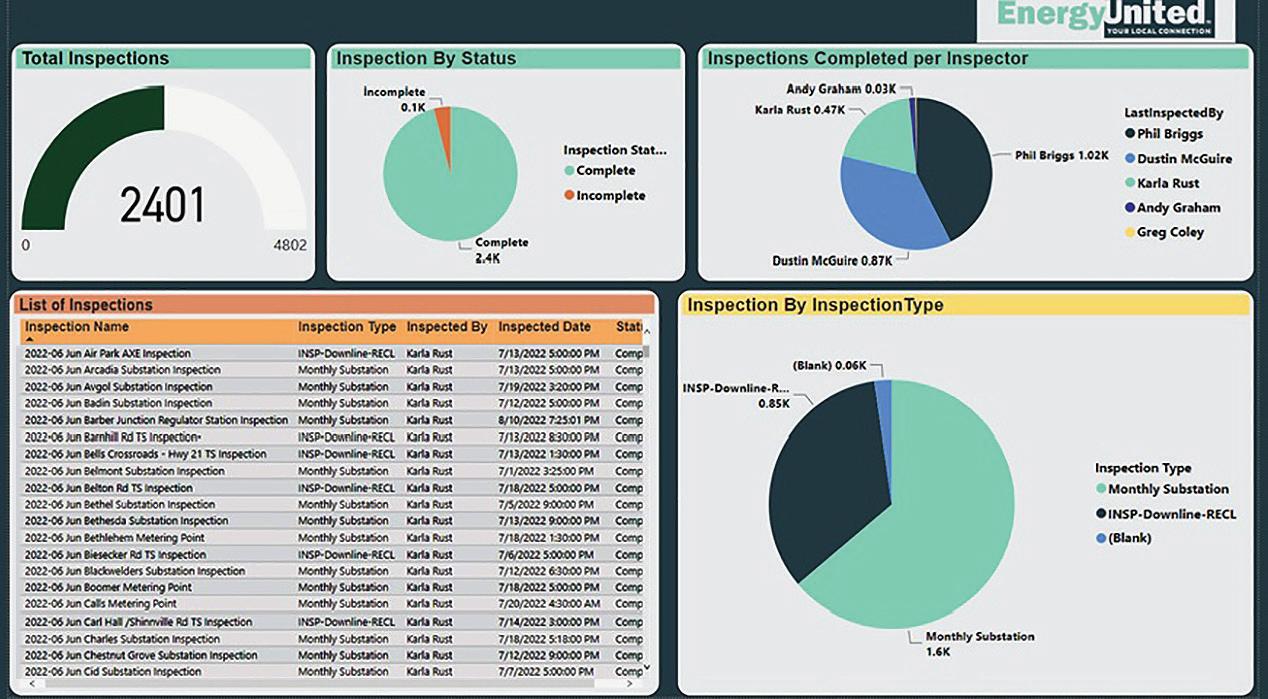
using a cloud-based platform for substation inspections, and EnergyUnited reached out to the vendor, MinMax Technologies, for a demonstration.
By this time, coop leaders felt they were on the cusp of progress with a solution in sight that would bring flexibility, accuracy and efficiency to the inspection process.
After vetting three companies, MinMax Technologies’ eSMART system was selected for three main reasons:
1. The platform is designed specifically for equipment tracking and substation inspections with flexibility that would enable the utility to make internal updates.
2. Installation and integration would not require extensive IT expertise yet offered ample capability.
3. The solution would allow for customization, with inspection questions and custom data fields to store information not already contained elsewhere, and equipment selection would be at the utility’s discretion.
The MinMax technology allows EnergyUnited to keep its focus on the key pillars of its business model: reliability, resilience and safety. By automating these critical processes, coop employees gained back time for writing inspection questions and adding equipment data with technicians.
As EnergyUnited began implementing the new platform, opportunities for efficiency emerged. The software enabled the utility to track equipment (before, this was done solely by spreadsheets) and have a more efficient process for managing warranties, installations, testing, removals and maintenance. Data remains centrally housed, but secure access is available, whether in the field or at the office.
As EnergyUnited embarked on implementation, the utility had three primary objectives:
1. Roll out a paperless substation inspection process that did not lose data
2. Allow updates to be made internally
3. Use the software’s asset management and work order generation capabilities.
Data loss was a primary concern, given the utility’s previous history with paperless inspections. However, this concern was quickly assuaged because the MinMax solution does not delete inspection sheets during uploads.
For EnergyUnited, the hardest part of the implementation process was planning and gathering information, which included documenting equipment at each substation and deciding on naming conventions. However, once those tasks were complete, bulk imports of substation and equipment data simplified the remaining steps.

Two things helped to smooth the process:
1. Robust training database — A training database includes a practice environment where users can try different formulas and inspections before making changes to the production database. Taking full advantage of that feature helped to ensure everything was set prior to production.
2. Knowledgeable staff and support — The MinMax staff was responsive, knowledgeable, easily accessible and available to help with issues and training.
For two years now, EnergyUnited’s engineering and technical services departments have been using the eSMART asset management system, specifically the online subscription service. With it, these teams have reduced paperwork and streamlined asset management.
After implementing the system, the coop has become more efficient in its substation
inspection process. Gone are the days of printing paper inspection sheets, manually entering inspection data and scanning sheets for long-term storage. Now, everything is digital and manual recordkeeping is, once again, a thing of the past. As a result, substation technicians now can quickly generate inspection sheets, and the data they collect — such as meters, amps and indicator readings — automatically goes into substation reports.
Substation equipment and downline reclosers are tracked easily. Technicians can attach photos to inspections and equipment, and the team leader no longer has to manually process and scan more than 125 inspections each month. Not to mention, this digital process also has reduced frustrations caused by hard-to-read handwriting and general human error.
When issues are found during inspections, technicians take photos of the abnormality to include and access in the report. Additionally, relevant equipment documentation, schematics, photos of nameplates and other testing data are attached to inspections and equipment.
Moving to a comprehensive, cloud-based platform has saved EnergyUnited time and money, maximizing human capital while better stewarding available resources.
Field personnel have benefited in the following ways:
• Substation technicians can easily see previous readings — voltage, amps and demand — and how many operations each piece of equipment had, giving them a more comprehensive view of the system and equipment.
• Trends and abnormal conditions are more easily spotted.
• With equipment locations uploaded, the system automatically captures temperature data for the date and time an inspection was completed.
Leadership also has benefitted in several ways:
• It is now easy to spot trends and create graphs for monthly reporting.
• It integrates well with Power BI for additional customization.
• MinMax staff provides ongoing progress updates and is responsive to issues that arise.
• Linking inspections and other records to the equipment life cycle enables more proactive decision-making.
Using a robust cloud-based system has returned hours of productivity to staff, providing a nimbler process for keeping their tracking data current. With the new system fully implemented, EnergyUnited has confidence in its data and improved visibility into its operations.
An unexpected bonus of the system: The utility has been able to use it in other areas of the business, including for fire extinguisher inspections and monthly transmission data collection.
Eliminating paper inspection sheets was EnergyUnited’s first step toward automating substation reporting and modernizing equipment tracking, and it was a crucial shift as the utility prepared to implement a new supervisory control and data acquisition (SCADA) system.
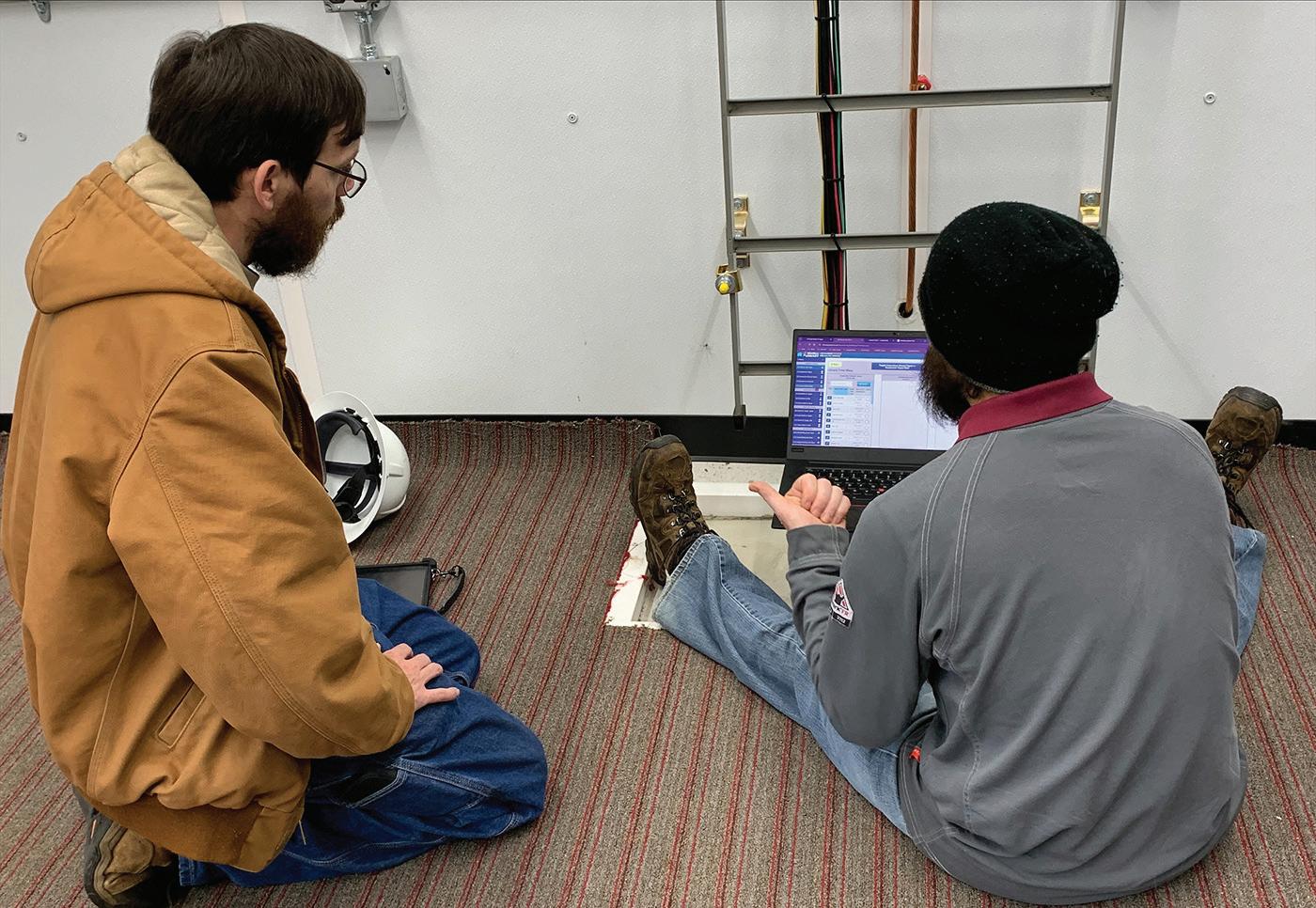
Because the new asset management system and SCADA system are compatible, the coop can pull from existing databases, eliminating human error and time-intensive data collection. More importantly, it frees up technicians for the critical work of system maintenance.
EnergyUnited also plans to add MinMax Technologies’ Power BI server service, which allows users to create more customizable reports and dashboards as well as share read-only data — without needing more software and logins to do so. Additionally, direct queries can be created, so reports run automatically.
While EnergyUnited had a bumpy start in pursuing paperless substation inspections, its persistence paid off. Once the coop found the right technology to meet its needs, improved efficiency and a streamlined inspection process followed. The results speak for themselves. With the new asset management system, EnergyUnited has eliminated manual data entry, reduced paperwork and improved asset management. The system has saved time, increased productivity and maximized the coop’s resources.
The story of EnergyUnited’s substation inspections is one of resilience and adaptation. It is a testament to the power of technology, not just as a tool for efficiency but as a catalyst for organizational transformation.
Was there an investment in time and money? Yes. Was it worth it? Also, yes. Modernizing the asset management and inspection report process has poised EnergyUnited to serve its members better, continuing its journey toward a more efficient, reliable and safer future.
KARLA RUST (karla.rust@energyunited.com) has been an electrical engineer with EnergyUnited for over seven years. Her duties include CEMI and power quality analysis, sectionalizing and long-range system studies, substation reports, equipment specifications and recommendations, and project management. She holds a BSEE degree with a chemistry minor from The Citadel.
For More Information
EnergyUnited | www.energyunited.com
MinMax Technologies | www.minmaxtech.com
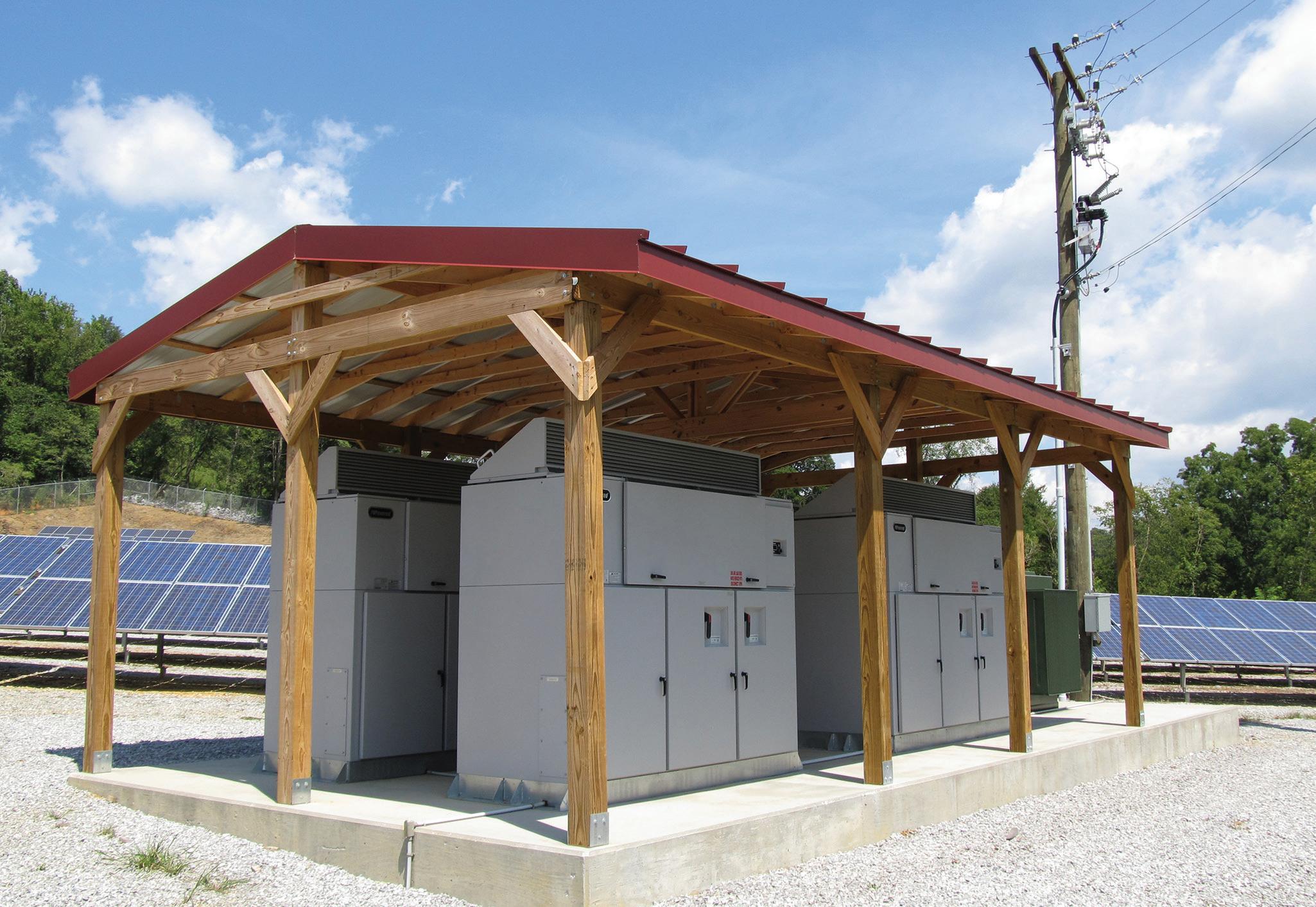
EPRI and seven electric utilities collaborated on a study to identify the optimal settings to integrate DERs at a faster pace.
By STEPHEN KERR and DEVIN VAN ZANDT, EPRIThe power grid has seen substantial growth in smallerscale renewables, such as household, community, and commercial solar and battery systems. The high volume of interconnected distributed energy resources (DERs) has prompted the energy industry to adopt control capabilities and standards to improve grid operations with smart inverters.
Many electric utilities are still working to understand the most beneficial operating settings to use on their respective distribution grids to address common high-voltage and fluctuation concerns created by the growing volume and density of DERs.
Over the past decade, hundreds of thousands of solar power plants have been connected to the U.S. power grid at an annual
growth rate of 24%, according to the Solar Energy Industries Association. The majority of generating capacity added to the grid each of the past four years is attributed to solar energy. Its share of total U.S. electrical generation grew from just 0.1% in 2010 to nearly 5% in 2024. The solar industry is expected to nearly triple in cumulative deployment by 2028, as the Inflation Reduction Act provides tax incentives that could spark nationwide demand. Despite the proliferation of solar energy in recent years, steady growth is still needed to underpin the clean energy transition and achieve the pace required for a net-zero energy sector.
The magnitude of solar power systems tied to the grid now and in the future presents a challenge. Because smaller-scale solar is typically not owned or managed by grid operators, these
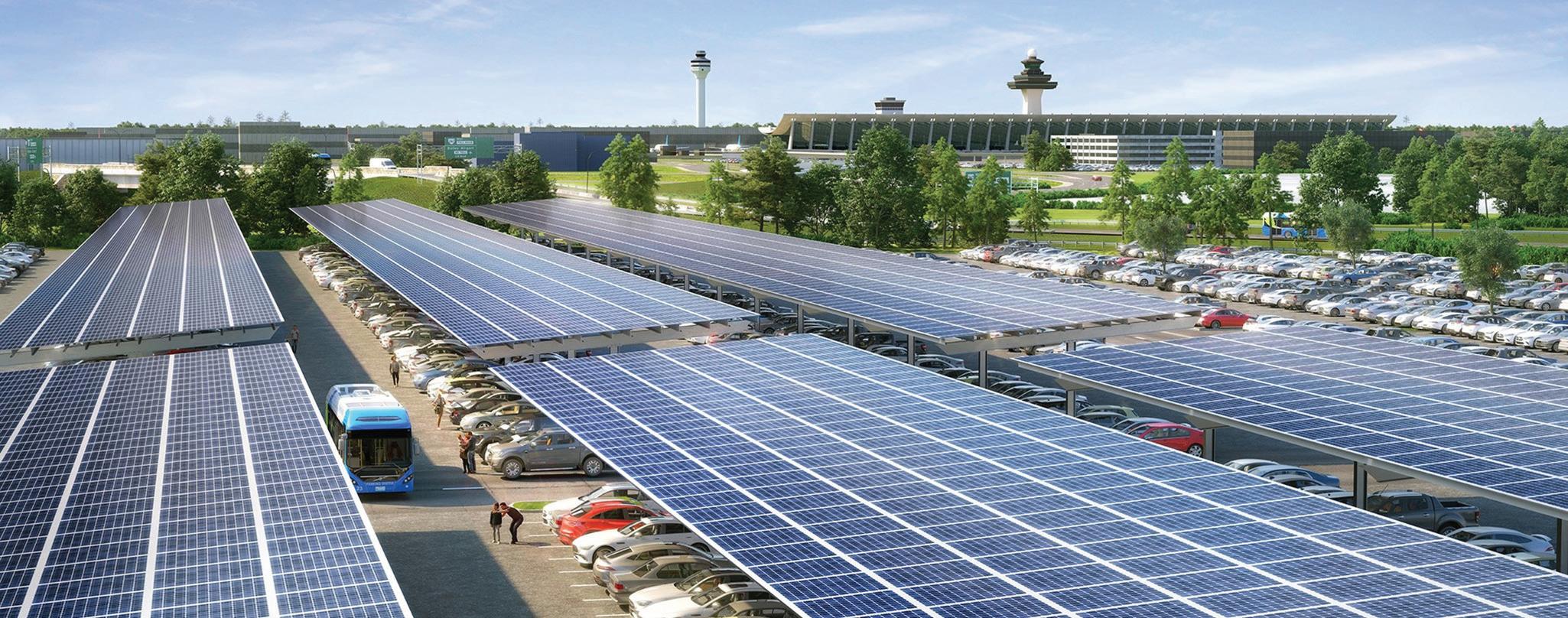
installations can make it difficult to control operating conditions on the distribution grid, which leads to system instability.
Grid operators are responsible for ensuring their T&D systems operate reliably for the benefit of all energy consumers. For most of the past 100 years, large-scale energy generation — such as plants powered by coal, natural gas and nuclear fission — were located far from consumers. Electricity flowed only one way through T&D systems, from the centralized generation source to the end user. Today, the high penetration of DER installations on distribution networks affects power and voltage stability, making operations far more complex. DERs require the grid to handle two-way electricity flow, as these systems inject the excess power they generate back into the grid.
The electric system is designed to operate within certain voltage and power factor ranges. With increased availability of smart inverters to control the power conversion of DERs injected into the grid, the settings available can help to stabilize grid operations, compared to DERs simply operating at unity power factor. In response to a change in either system voltage or DER power magnitudes, smart inverters are configured to change their power output to support and maintain quality system operating ranges.
DER settings have the capability to improve grid operations, especially when distribution feeders have a high penetration of DERs. Anticipating the need to make DER devices fully compliant with modern grid support standards, EPRI and seven electric utilities collaborated on a study to identify which DER settings would benefit the distribution system in specific operational scenarios.
“For most circuits in the electrical distribution grid, a common set of DER settings is sufficient to ensure a safe and reliable grid,” said Ernest
Palomino Sr., distribution planning engineer, Salt River Project. “As the amount of DERs increase on a particular circuit, the ability to provide power safely and reliably may diminish. Modifying DER settings could provide another solution to maintain grid integrity that currently is limited to infrastructure upgrades.”
To be representative of broad distribution conditions in multiple service territories, each participating utility provided 40 feeder circuits to be analyzed for potential DER additions and hosting capacity. Hosting capacity is the amount of DERs that can be accommodated without adversely impacting power quality and reliability on any given electric system. EPRI designed the project so results could be evaluated from feeders in operation, not just synthetic feeders in an academic study.
Broadly applying a relevant DER setting can be a good starting point before DER penetration becomes unmanageable. The goal of this EPRI project was to investigate which settings were most likely to improve overall grid behaviors when applied universally. This understanding can then serve as a springboard to customize DER settings for locations that need a different operational approach. Starting with a good default setting can reduce the need for in-depth engineering to adjust feeder operations or delay the need for capital investment to increase capacity.
Performing the analysis for so many feeders helped engineers to identify which settings can help the grid the most often for the most locations. It simplified the choice of which settings would be of maximum value, providing a significant statistical result rather than relying on findings from a few sample feeders

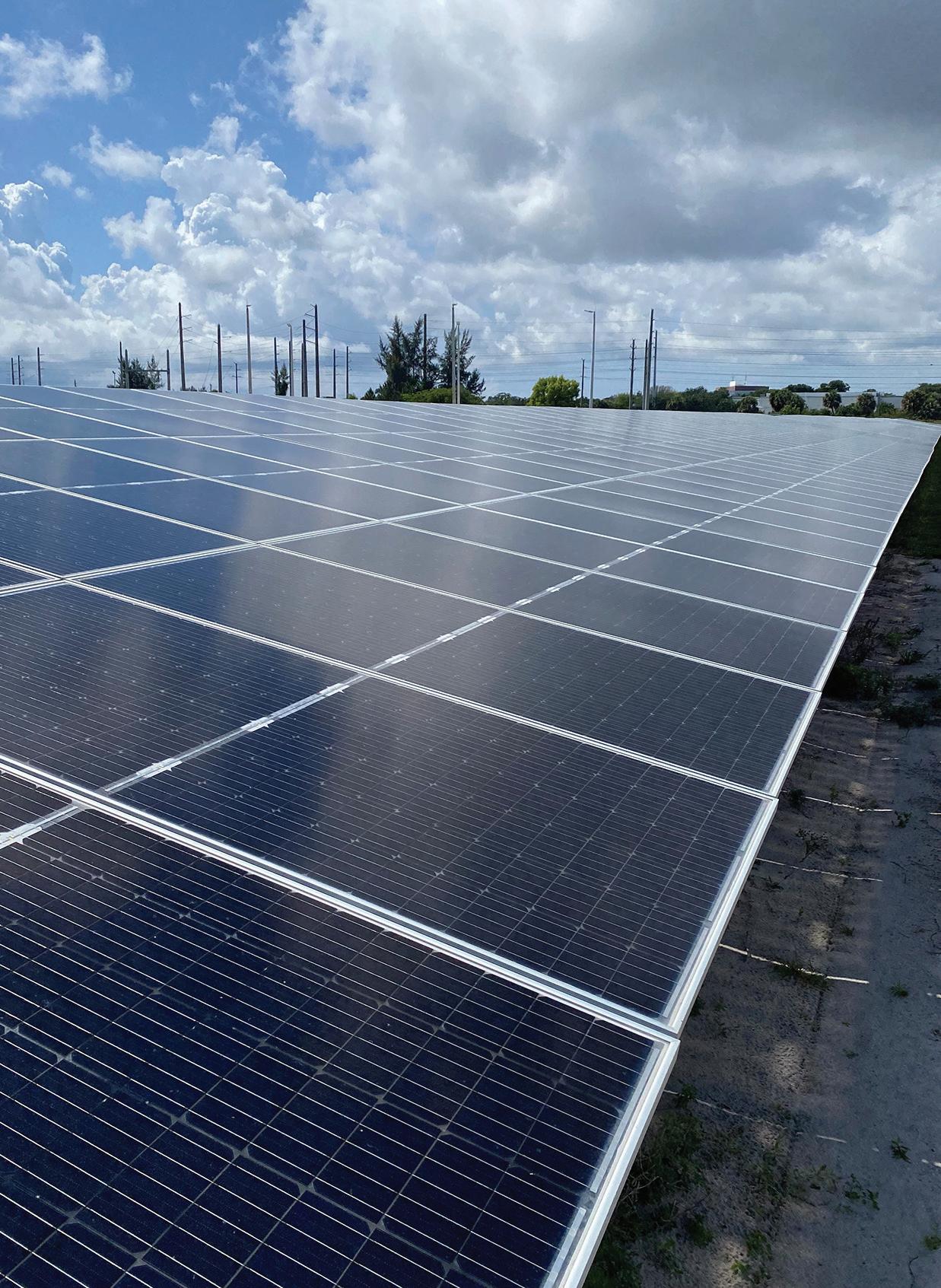
whose performance may be too narrow to comprehensively represent the grid.
“Utilities throughout the U.S. are experiencing different levels of DER penetration. Participating in a study with a diverse set of circuit load types, circuit length, and DER penetration allowed the utility to understand the optimal DER settings for a variety of future scenarios,” Palomino noted.
The DER functions simulated in the project incorporated a series of settings that were applied to the solar photovoltaic inverter, including volt-VAR, watt-VAR, volt-watt, volt-VAR combined with volt-watt, and constant power factor. In electric power T&D, reactive volt-ampere (VAR) is a unit of measure for reactive power, which is the energy circulating back and forth between the source and the load.
For individual feeder studies, displaying a feeder circuit as a heat map illustrates that various locations may benefit more or less from different DER settings. Considering the reactive power magnitude and behavior of each setting, the hosting capacity for many locations can improved most by using a constant, absorbing power factor setting. Results are dependent on the size and location of customer demand, any existing DERs, conductor sizes, and feeder devices like capacitors and voltage regulators. At a given location, compared to the best settings option, the hosting capacity performance of all settings can range from very similar behavior to dramatically reduced benefits.
To avoid the challenge of selecting location-dependent DER
settings, researchers performed this individual feeder study on the entire set of feeder models and compiled the results. Data analysis on thousands of locations across 200 feeders enabled researchers to compare performance between DER settings, determine the best performing setting on average, and filter results by power flow or feeder characteristics. Key findings of the study were as follows:
• Smart inverter settings improved hosting capacity on average over unity power factor.
• Numeric scores provide context to balance hosting capacity with reactive power and curtailment.
• Volt-VAR offers the best combination of hosting capacity improvement while minimizing curtailment and reactive energy.
• Power factor offers most hosting capacity improvement at cost of always-on reactive power.
• Final scores are extremely dependent on chosen weights.
Electric utilities are already using these study results to determine default settings to apply to upcoming DER interconnections, as well as coordinating the chosen setting with local utility commissions. The research indicates leaving DERs to operate in the old unity power factor default is not going to create the necessary grid benefits. The volt-VAR setting strikes a balance between excessive reactive power magnitude and the appropriate timing to use that reactive power. There are some locations where a targeted use of other settings is best, and this EPRI study shows how that can be applied on a case-by-case basis. This approach simplifies the effort needed to manage settings for all interconnected DERs.
Providing guidance to engineers tasked with applying smart inverter functions, this two-year project is the largest of its kind to date. Using EPRI’s smart inverter settings screening methodology, the project extracted key findings and final analytical results from more than 200 feeders across multiple utilities. The study provides data-backed recommendations for default settings utilities can take to their regulators, so that DERs can be integrated at a faster pace. Improving overall DER performance can drive stakeholder satisfaction, support operational performance and advance compliance with national clean energy goals.
STEPHEN KERR (skerr@epri.com), senior technical leader, DER grid impacts analysis at EPRI, has nearly 15 years of combined experience in utility engineering assignments and research activity. He was involved in electric customer construction, distribution planning, substation design, system protection and DER integration in previous roles at Arizona Public Service. Kerr currently performs and guides EPRI distribution feeder research analysis to understand the technical implications of autonomous and managed DERs, including smart inverter settings on feeder hosting capacity and coordination of smart inverter settings with grid-voltage regulation devices.
DEVIN VAN ZANDT (DVanZandt@epri.com), senior program manager, integration of distributed energy resources at EPRI, has more than 30 years of industry experience and is involved in distributed energy resource integration. His current focus is on improving the steady-state and dynamic modeling and simulation aspects of DER integration and understanding how autonomous and managed DER capabilities impact distribution systems.



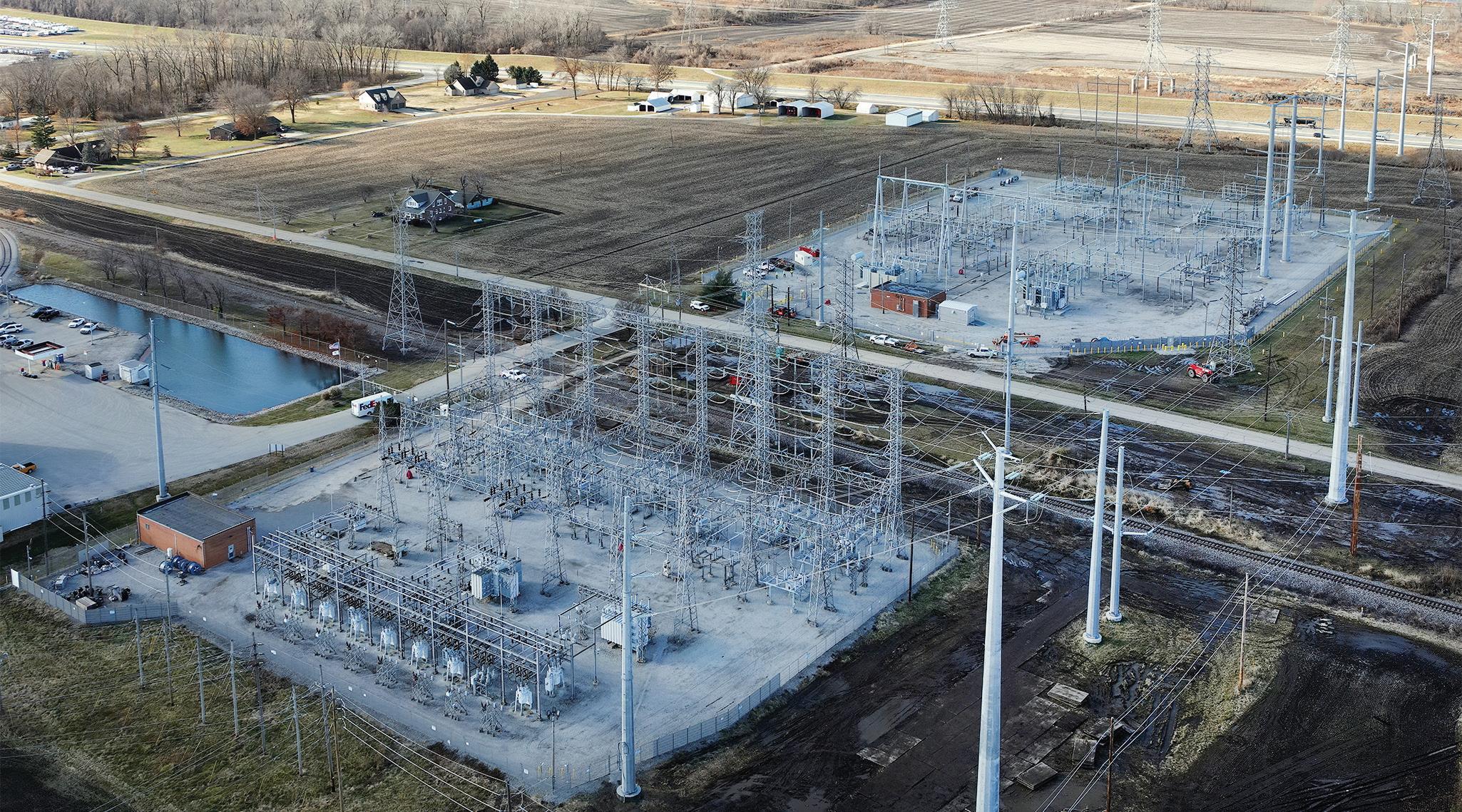
Ameren Transmission works with partner to replace a transmission tower and upgrade a substation, with a positive impact on the Diverse Supplier Program along the way.
By CHRIS YOUNT, LUZCO and EMILY RAU, AmerenSignificant infrastructure changes and substation upgrades are improving reliability for thousands of Ameren Illinois customers in the River Bend region of western Illinois.
The US$6.8 million substation and line project included rerouting several transmission circuits and several equipment upgrades, ranging from breakers and switches to conductors and relays.
The project required rerouting three of five 138-kV circuits supported by a single structure. Working closely with diverse supplier LUZCO Technologies LLC, Ameren found new routing solutions to avoid conflicts with railroad lines, gas pipelines and water pipelines in the area.
John Waterhouse, senior director of transmission operations and maintenance for Ameren, said the previous tower supported five transmission lines.
“Energy reliability for our customers is a top priority for Ameren,” Waterhouse said. “A failure on the previous
structure would have resulted in a significant loss of load at a nearby refinery. Our project team was able to identify new routes for each circuit in a heavily congested area, secure the real estate and permits necessary to reroute the lines and successfully install each of the new structures.”
Prior to the project, a single lattice tower supported five 138-kV circuits. To improve reliability, the project team routed three of the five circuits from the lattice structure. Because of the congestion in the area, distribution circuits also were moved to maintain appropriate clearances from the transmission lines. In addition to line work, substation upgrades included new breakers, disconnect switches and relays in a neighboring substation.
Nearby transportation infrastructure further complicated the already complex design process. The lattice tower was approximately 20 ft (6 m) from an active railroad.
“Various circuits were not the only cause of congestion at the original substation. Railroad lines and underground utilities created additional complexities for the project team,” noted
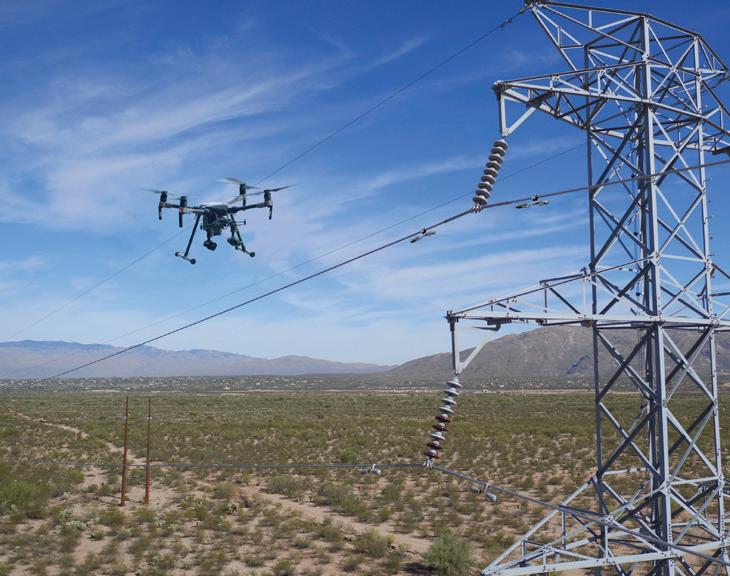
Jason Rogers, vice president, LUZCO. “The railroad is an active route and, because safety is always our top priority, we took extra precautions throughout construction. The team was able to complete the project without any safety incidents by implementing the appropriate controls and clearances.”
Buried utilities also impacted the design and construction methodologies used in this project.
“We worked with the natural gas and water utilities to create and construct complicated designs to maintain the appropriate distances,” Rogers explained. “The engineering team was able to do this by implementing unique designs for steel monopoles and designs for connections in the substation. In addition, the design team had to complete several distribution line reroutes using composite and laminated poles.
“The engineering team and construction contractors really came together to lay the groundwork and guide the project to successful completion,” Rogers added.
Serving as project manager for Ameren’s new substation, LUZCO’s team was responsible for overall execution from project initiation through closeout. This included leading project team members in the development of an execution plan, executing the project schedule, identifying risks and mitigation plans, completing contracts and procurements, permitting and construction.

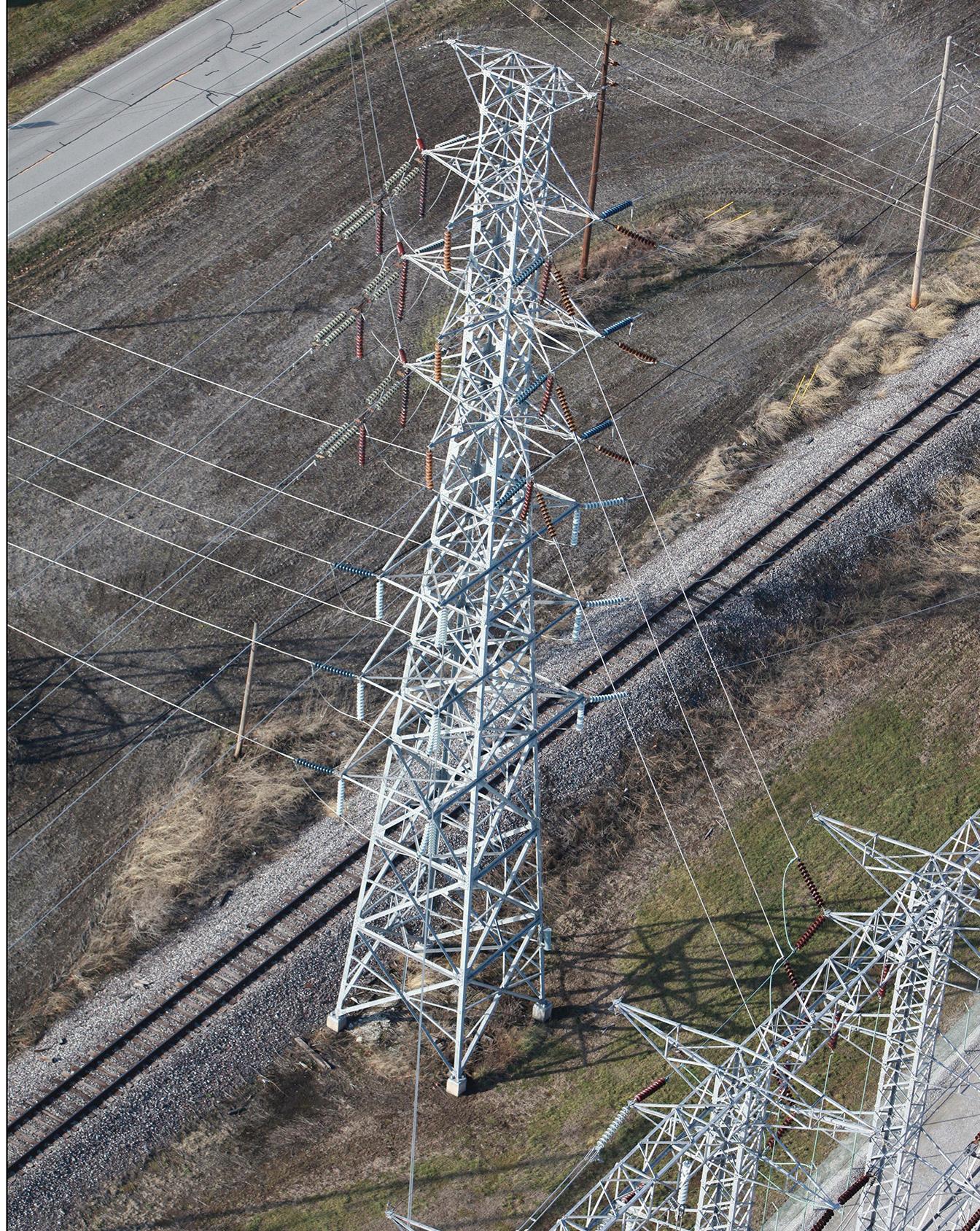
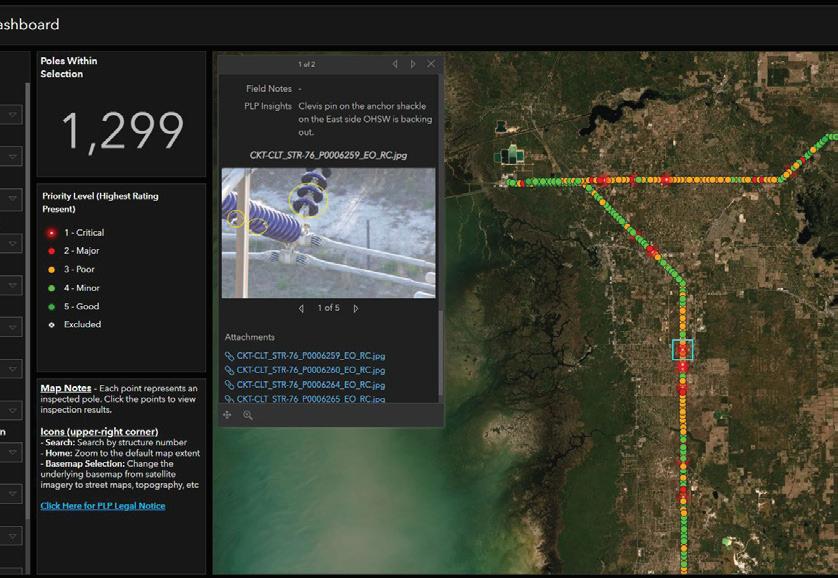
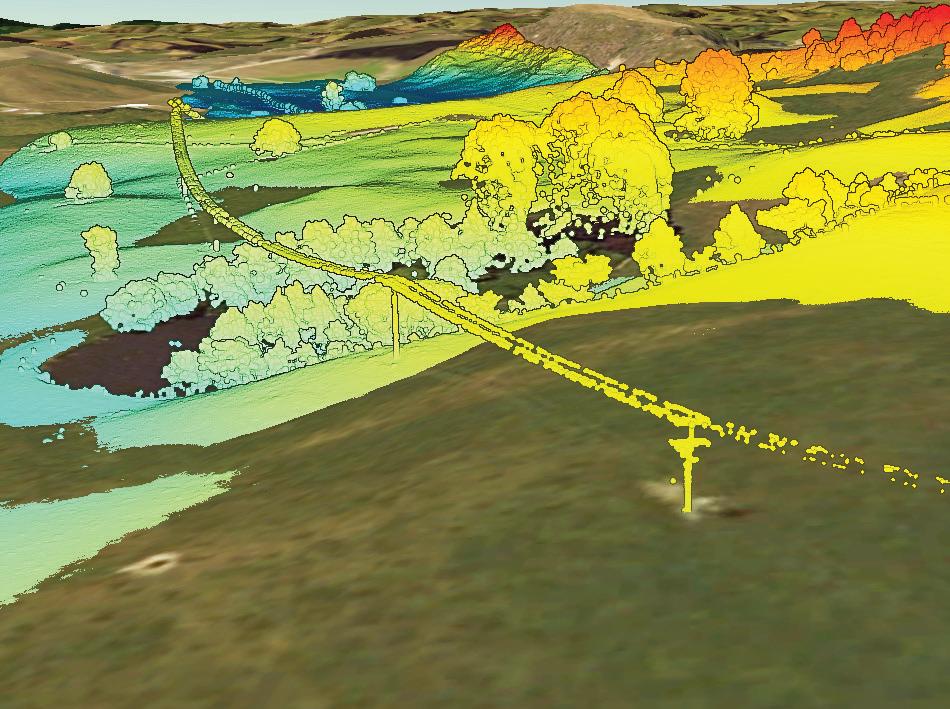



Ameren worked with the LUZCO team to complete the project on time and under budget.
“I’m so proud of our team for completing another project safely,” said Lus Haberberger, founder and CEO of LUZCO. “We are so grateful to partner with Ameren and other strategic contractors on this project that is improving reliability for residents and businesses.”
Haberberger founded the engineering firm in 2017. A Venezuelan-American engineer living in the U.S. and navigating the challenges faced by women in the demanding working culture, she envisioned a workplace that embraced a family-oriented environment and delivered exceptional
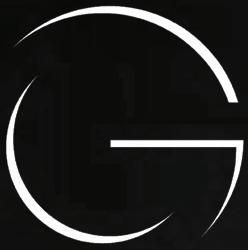
results. Fueled by this vision, she founded LUZCO, embarking on a transformative journey.
At that time, Ameren was searching for qualified diverse contractors. This marked the genesis of a successful partnership, with LUZCO joining Ameren’s diverse supplier program. The synergy created from this partnership — coupled with mentorship in comprehensive business management and exposure to the diverse Ameren business segments — laid a robust foundation for exponential growth.
“Ameren’s support has been a cornerstone in LUZCO’s success,” Haberberger said. “The leaders at Ameren have demonstrated genuine interest in sustainability, growth and community impact.”
- Allows for independent control of 2 units with 1 remote
- Multiple users can operate lights in close proximity
- Quick and simple pairing without dipswitches
- On-Command return to 0° home
- Simultaneous Pan + Tilt
- Fluorescent Remote Buttons

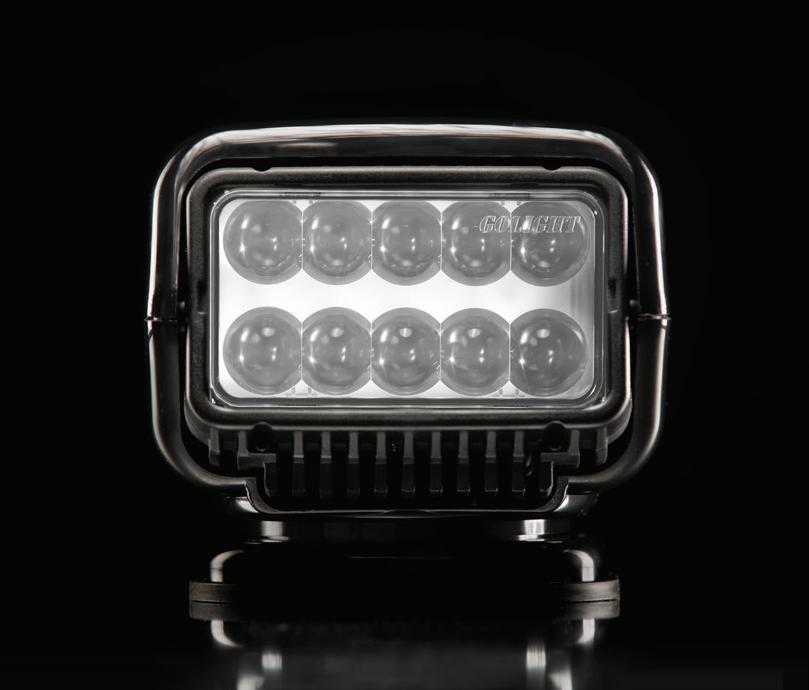
This collaboration propelled LUZCO to sustainable growth, earning acclaim as an award-winning, certified woman-owned and minority-owned boutique engineering firm. The company now proudly operates from offices in Missouri, Kansas and New York, growing from one to 111 employees.
Over the span of six years, LUZCO has achieved a collection of prestigious awards, including recognition from the St. Louis Hispanic Chamber of Commerce, SBA-St. Louis, Small Business Monthly, Missouri Chamber of Commerce, St. Louis Council of Construction Consumers and the Edison Electric Institute. Notably, by 2023, based on revenue, LUZCO had secured the 22nd spot in the list of largest minority-owned businesses in St. Louis.


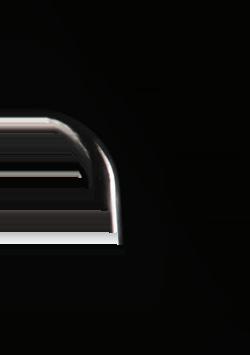







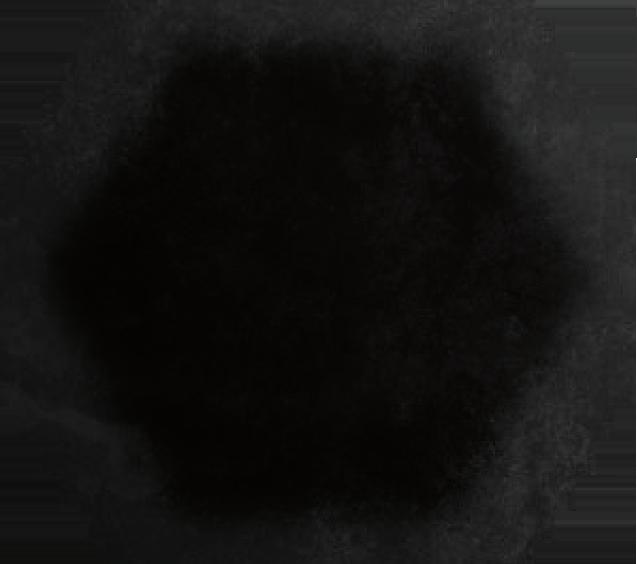


LUZCO aims to perpetuate the value acquired through Ameren’s Diverse Supplier Program and envisions a role beyond its own success — by nurturing new leaders and mentoring smaller businesses to foster growth within the dynamic landscape of the engineering industry. LUZCO is not just a success story; it is a testament to the power of diversity and resilience in shaping the future of business.
CHRIS YOUNT (cyount@luzco.com) is a seasoned professional with expertise in relationship building and stewardship. Yount came to LUZCO with 16 years of business development experience. She quickly advanced her knowledge of the utility industry, while serving as a project management analyst on several large projects. She was later promoted to operations manager and now leads LUZCO’s business development and marketing efforts as the director of Business Development & Marketing.
EMILY RAU ( Erau@ameren.com) is a communications specialist at Ameren Corp.
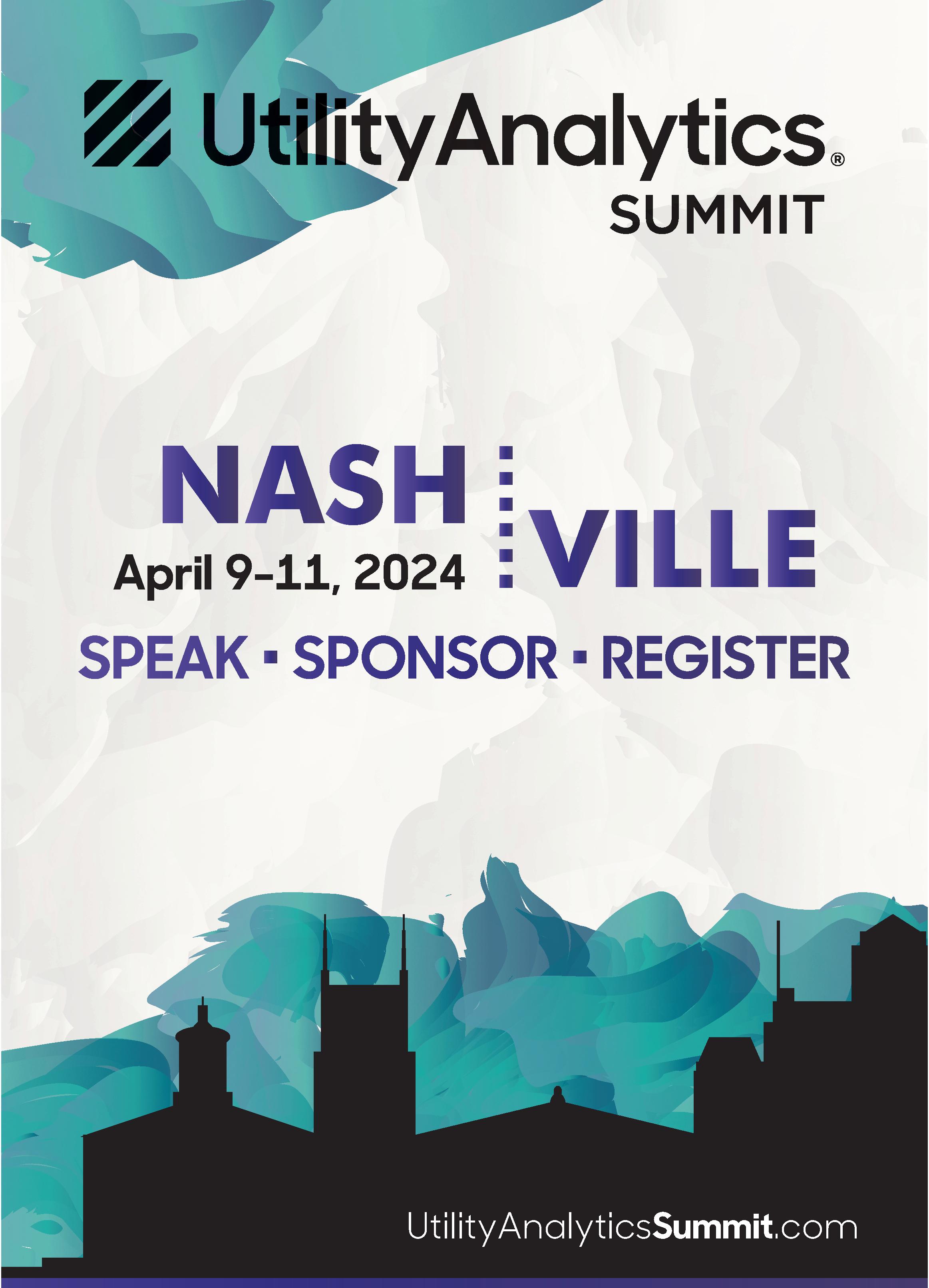
 SMITH AND VICOTR ATKINS
SMITH AND VICOTR ATKINS
Create a holistic and coordinated approach to security by proactively preparing for both physical and cyber threats.

Today’s mass shootings and outbreaks of war and conflict across the globe represent a near-constant reminder of the need for reliable security. Physical security — whether that is residents locking their doors before bed or a corporate office employing security guards to roam the halls after hours — is crucial to protect against harm. However, implementing stringent cybersecurity measures is often the missing puzzle piece to an integrated and fully developed security plan.
No one well prepared for dangerous threats would lock the front door but purposely leave the back door and windows wide open. Often, this is the mindset some organizations unintentionally take when it comes to cybersecurity.
Just because a cybersecurity threat is unseen, does not mean it does not exist. Organizations that fail to take action and prepare for cyberthreats could face significant disruption. The integration of both physical and cybersecurity helps an organization create a holistic and coordinated approach to security.
The events of Sept. 11, 2001, ushered in a new age of security in the U.S. and across the globe. The horrors of that day resulted in a much more rigorous airport check-in process, complete with people trudging through security lines barefoot, rapidly moving through metal detectors and canine dogs sniffing at luggage rolling past. The additional physical security made flying much safer, a welcome relief after experiencing such a devastating event.
The post-9/11 environment led to many organizations reevaluating physical security. These evaluations have been further reinforced with the recent rise in mass shootings. According to the Gun Violence Archive, 647 mass shootings occurred across the U.S. in 2022. The wide variety of locations in which these shootings occurred have organizations of all kinds taking a look at physical security measures — from churches to music festival venues to elementary schools. Physical security is inherently a core pillar to keep communities and organizations safe from those who wish others harm.
The 21st century saw a rise in physical security concerns, but that change was not the only mark of a new century. The increase in internet connectivity has led to cyberthreats becoming an unfortunate reality. As organizations
continue to turn to virtual connectivity and operations are streamlined increasingly through automated services, cyber solutions are growing more prominent.
In particular, critical infrastructure stands to be especially vulnerable to cyber threats. Hackers could cause major disruption to the water supply by tampering with treatment solutions or wreak havoc on the electric grid by producing massive power outages. According to POLITICO, 60 incidents classified as threats or attacks on major grid infrastructure were reported in the first three months of 2023. Additionally, the U.S. is on track to meet or exceed 2022’s record of 164 major cyber and physical attacks in 2023. Such significant attacks could negatively impact communities and threaten the stability of day-to-day living.

Ransomware attacks also have been on the rise in recent years, as hackers strive to achieve financial gain by holding organizations’ confidential data at a price. According to the NCC Group, September 2023 saw a record 514 victims of ransomware attacks, up 153% from 2022. In 2021, a ransomware attack on Colonial Pipeline infamously led to Americans rushing to gas stations to fill their tanks. The Joint Ransomware Task Force was created as a result to create a central place for the U.S. government to respond
to ransomware attacks. These incidents have highlighted not only vulnerabilities to the U.S. supply chain but also the need for strong cybersecurity measures for critical infrastructure.
Global conflict and uncertainty also have created the perfect storm for heightened cybersecurity risk. Rather than fighting on a physical battlefield, foreign adversaries often turn to cyber methods to steal sensitive information and cause disruption
- Knurled 3/4” step bolts for added safety
- Fully gusseted safety clips
- Working and climbing versions
- Quality fabrication to the highest codes and standards in our U.S. facility
Fastener supply Fastener supply – including both custom-manufactured and globally sourced fasteners:
- All standard fasteners
- 394 tower & step bolts
- Anchor bolts to 4” diameter
- U-bolts, J-bolts, and V-bolts
- 18-J rebar anchor steel & cages
- J-clamps and V-clamps
- Turnbuckles
- ANCO®-PN-LOC® nuts
- A325-A354-A449-A490 bolts
- Per-print machined parts
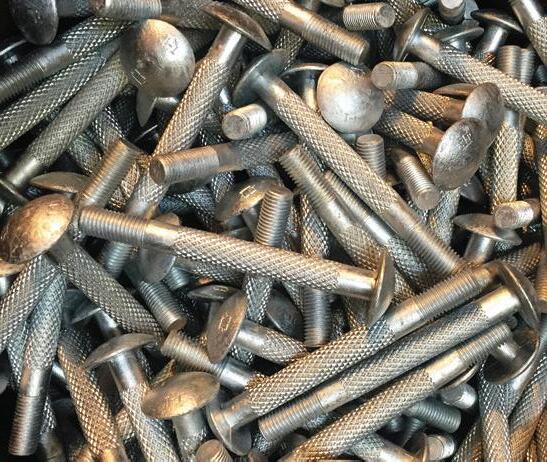


to communities. Additionally, domestic extremists pose a real challenge to critical infrastructure and other organizations. These types of incidents often are not simple data losses or what some might consider a minor inconvenience, but instead can realistically sway the geopolitical state of the world.
For many organizations, cybersecurity starts and ends with compliance. Organizational decision-makers might believe they have kept their data and operations secure by simply meeting the regulations established by the U.S. government. For example, Executive Order 14028: Improving the Nation’s Cybersecurity, requires service providers to report incidents and threats that impact government networks among other mandates. In 2023, the Biden administration announced a national cybersecurity strategy with the goal of defending critical infrastructure and disrupting threats. However, this commitment and these mandates are just a starting point. Organizations still need to take action to prevent a major cybersecurity incident.
To create a more resilient cybersecurity plan, risk first needs to be assessed. Any system automation or network has the potential to be vulnerable. Critical functions dependent on cyber connectivity should be evaluated to understand and eliminate risks, as appropriate for each organization.
In the age of digitalization, network and system project teams discuss numerous aspects upfront during the planning phase. From efficacy to reliability to resiliency, organizations want

systems that are ready for any challenge. Cybersecurity should be as much a part of early discussions as any other factor that goes into the planning phase. Before a threat ever arises, taking proactive action can help an organization to identify risks and vulnerabilities, prevent an attack and put a plan in action in the event of a cybersecurity breach.
Often, an engineering firm thoughtfully prepares for a project’s budget and schedule, but offloads cybersecurity concerns to a third party. Or, it can be an expectation the organization provides its own cybersecurity services post-design and implementation of a solution. Bringing in a reliable in-house cybersecurity team that is already integrated into the engineering side of a project can help to seamlessly create more secure systems and networks.
Specifications and designs should be strategically planned to account for cybersecurity concerns. By assessing cyber vulnerabilities and risks, organizations can move forward confidently with informed decision-making that protects crucial processes.
Organizations can take several steps to improve cybersecurity. By incorporating secure remote access to critical infrastructure, these highly vulnerable entry points are protected. This is particularly beneficial if physically accessing a site is rendered difficult due to a natural disaster, pandemic or other significant event. Cybersecurity teams can deploy a single solution that gives organizations complete control and vendor oversight.
The


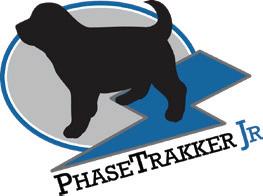










Deploying continuous monitoring and detection strategies of operational technology network and communications is also beneficial for organizations. Having 24/7 monitoring and detection strategies in place increases visibility and awareness into operational technology networks to enable a swift response in the event a cyberattack occurs. Additionally, managed threat services help with ongoing security concerns, focusing on both information technology and operational technology operations.
An end-to-end risk analysis of current operating systems also should be used as part of solution development to protect assets and prepare for cyberthreats. This analysis takes a look at every asset an organization contains to provide maximum security. Increasing security orchestration, automation and response provides greater cybersecurity. By increasing the automation of security-related tasks, cybersecurity teams can be efficient and focused, knowing routine tasks are being deployed. This also enables cybersecurity teams to increase their scope and coverage for more secure operations.
Having an impenetrable identity and access management system in place is crucial for critical infrastructure teams. Owners, operators and managers should deploy a zero-trust security platform to prevent cyberthreats that could occur through a plethora of vendors.
Cyber-threats will continue to escalate in volume and sophistication, and implementing a zero-trust security platform helps to prevent hackers from accessing the most vulnerable data.
Integrating physical and cybersecurity is critical to provide a holistic and coordinated approach to keeping operations safe and reliable. Examining systemwide architecture helps to identify security gaps and begins the process of implementing a plan to shore up an organization’s security. Gaps in physical and cybersecurity are often hard to spot — that is, until threats highlight the vulnerabilities.
Critical industries — including electric utilities — can benefit from assessing and maximizing security infrastructure. By planning ahead, threats can be eliminated, data remains confidential and operations stay reliable.
WILLIAM SMITH (william.smith@1898andco.com) is a director of security and risk consulting at 1898 & Co., part of Burns & McDonnell. In his role, he is passionate about and committed to safeguarding critical infrastructure through strategic engineering, regulatory compliance and common sense. He is a 22-year veteran of the Naval Nuclear Propulsion Program and holds a bachelor’s degree in nuclear engineering from the University of Michigan, MBA degree from Oklahoma City University and master’s degree in cybersecurity from the University of Maryland Global Campus.
VICTOR ATKINS (victor.atkins@1898andco.com) is a director of security and risk consulting at 1898 & Co., part of Burns & McDonnell. In his role, he develops and delivers industrial cybersecurity solutions and services to the critical infrastructure industry. He specializes in helping clients reduce risk in the critical infrastructure sectors. He is a nonresident senior fellow at the Atlantic Council, focusing on cybersecurity, hyperintelligence and nuclear security.


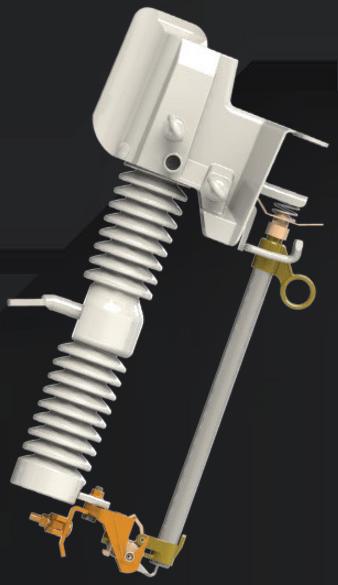
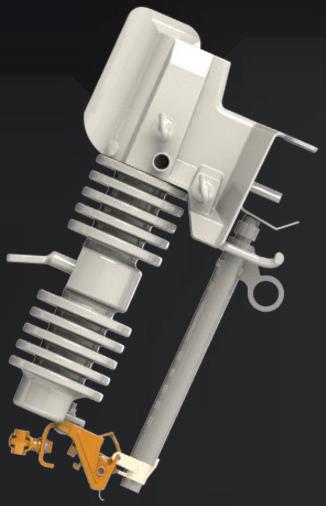
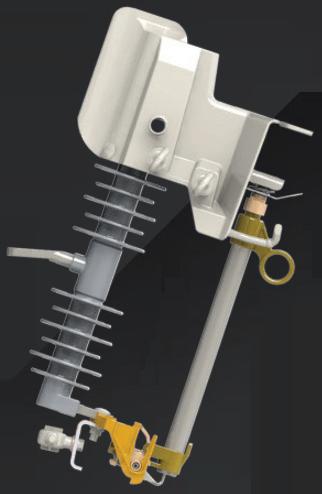


The 2024 IEEE PES Transmission and Distribution Conference and Expo is just around the corner. The March issue of T&D World included extensive coverage of what visitors can expect to see and learn during their week in Anaheim, California, U.S. This issue offers additional details on the super sessions and information on other features, as well as more products and services that will be on display on the show floor.
The IEEE PES T&D conference is once again featuring super sessions with presentations that cover policy and regulation, transmission buildout, and climate change impacts.
Super Session 1: Mind the Gap – Policy and Regulation for Accelerating the Grid of Tomorrow: The first super session of 2024 will feature Shay Bahramirad, senior vice president of Engineering and Asset Management at LUMA Energy and IEEE PES president. She will be moderating this panel session that will bring together experts and policymakers to dissect the intricacies of current state and federal policies, identifying the chasms inhibiting the fulfillment of greenhouse gas (GHG) reduction goals. Focusing on the electric sector and the imperative of efficient electrification in transportation and buildings, the discussion will scrutinize policy gaps hindering progress in these pivotal areas.
Super Session 2: Transmission Buildout – The Solutions We Have and the Breakthroughs We Need: The next 10 to 20 years will witness an unprecedented buildout of the transmission
infrastructure, a necessity to support new resource development. This panel session will delve into the challenges and solutions associated with achieving a transmission system apt for a clean energy future. It will highlight the need for a more proactive and strategic approach in planning, designing, building, and operating existing infrastructure upgrades. The discussion will also encompass new transmission projects and the role of gridenhancing technologies. These elements combined can lead to effective and less costly implementation, paving the way for breakthroughs in the field.
Super Session 3: Meeting the Energy Needs of Tomorrow – Integrated Planning for the Customers, Distributed Energy Resources, and the Grid: As the energy landscape undergoes a transformative shift toward sustainability and resilience, the imperative to holistically address the interplay between customers, distributed energy resources (DERs), and the grid has never been more crucial. This panel convenes visionaries, experts, and stakeholders at the forefront of energy innovation to explore the intricacies of integrated planning for tomorrow’s energy ecosystem. Focused on aligning customer needs with the evolving grid infrastructure and the proliferation of DERs, discussions will spotlight the challenges and opportunities in harmonizing these diverse elements. From fostering customer-centric approaches to optimizing DER integration and fortifying grid resilience, panelists will delve into strategies that bridge the gap between decentralized
energy sources and traditional grid frameworks.
Super Session 5: Spark of Innovation: Exploring Decarbonization from Electrification: In the ambitious pursuit of a decarbonized economy by 2045, electrification emerges as the linchpin for transformative change. This panel convenes trailblazers and experts at the forefront of innovation to unravel the blueprint for enabling widespread electrification and grid expansion. Focused on harnessing proven zero-emission technologies across passenger and commercial vehicles, as well as building electrification, discussions will center on actionable steps pivotal to achieving carbon neutrality. Exploring the symbiotic relationship between electrification, grid scalability, and technology integration, panelists will outline strategies to catalyze this monumental shift. By navigating the challenges and seizing opportunities inherent in this evolution, the session aims to chart a course that harmonizes policy, infrastructure, investment, and innovation, propeling us closer to a decarbonized future. Join us for an illuminating exchange that sparks innovation, driving us toward a sustainable, electrified economy by 2045.
Super Session 6: Climate Change Impacts on the Grid of Tomorrow: As climate change reshapes our energy landscape, the imperative to fortify the grid against its impacts has never been more pressing. This panel convenes experts and visionaries to delve into the critical nexus between climate change and grid resilience. Discussions will underscore the urgency of investing in climate adaptation, highlighting the stark contrast between present costs and the exorbitant toll of inaction. Emphasizing the need for modernized grid planning to empower communities amidst an uncertain future, panelists will advocate for adaptive strategies and innovative solutions. Moreover, the session will spotlight the imperative of enhanced collaboration among industries, governments, and communities to steer a transition toward a clean energy future that prioritizes equity. By fostering dialogue and actionable insights, this session aims to chart a course for a resilient, adaptive grid capable of navigating climate impacts while fostering an inclusive, sustainable energy paradigm for all.
Professional Development Hours (PDH) and Continuing Education Units (CEU): Opportunities are available for attendees needing to meet ongoing certification requirements, as well as individuals wanting to utilize these sessions to attain and meet their own personal and company developmental objectives.
• PDH certificates can be earned by attending Panel Sessions.
• CEU certificates can be earned by attending Tutorials and IEEE Plain Talk courses.
Panel Sessions: Featuring some of the industry’s best minds, panel sessions provide comprehensive discussions on a diverse range of important trends, issues, and real-world applications and solutions. Key trends explored include DERMS, wildfire mitigation, FERC Order 881, impacts of EV charging and HVDC transmission. Start building out your onsite agenda at https:// ieeet-d.org/ by favoriting the sessions you’d like to attend.
Technical Tours: A diverse and exciting lineup of offsite technical tours gives participants the opportunity to tour and learn
Sunday, May 5
12:00 p.m. – 5:00 p.m.
T&D Registration Opens
Monday, May 6
7:00 a.m. – 5:00 p.m. Registration Open 8:00 a.m. – 5:00 p.m. Tutorials, Plain Talk 9:00 a.m. – 2:30 p.m. Technical Tours
p.m. – 9:00 p.m. Conference Opening Reception
Tuesday, May 7
7:00 a.m. – 5:00 p.m.
Registration Open
8:00 a.m. – 5:00 p.m. IEEE PES Plain Talk
8:00 a.m. – 9:00 a.m.
Opening Session
9:00 a.m. – 9:45 a.m. Super Session 01: Mind the Gap - Policy and Regulation for Accelerating the Grid of Tomorrow
10:00 a.m. – 5:00 p.m. Exhibits Open / Innovation Stage, Renewable Energy Stage, and Grid Edge Stage 12:00 a.m. – 1:00 p.m. Conference Luncheon in the exhibit hall
p.m. – 5:00 p.m. Technical Panel Sessions
Wednesday, May 8
8:00 a.m. – 5:00 p.m. IEEE PES Plain Talk
8:00 a.m. – 9:00 a.m Super Session 02: Transmission Buildout –The Solutions We Have and the Breakthroughs We Need
for
more about industry-related sites and products. Separate registration and additional fees are required and will be available when conference registration opens. Spots are limited so we encourage you to sign up early!
• Anaheim GIS Indoor Substation (Underground Substation) – 2 Time Slots
• Port of Long Beach
• Irwindale – Energy Education Center and Emergency Operations Center
• Reliability Utility Owned Energy System – Hinson Substation
• Center Peaker to see one of the “World’s First Low-Emission Hybrid Battery Storage, Gas Turbine Peaker System”
IEEE PES Plain Talk: The Plain Talk courses for power industry professionals will provide a greater understanding of the technical aspects of the electric power industry, even if you do not have an engineering background.
Separate registration and additional fees are required and will be available when conference registration opens.
Tutorials : Tutorials feature in-depth examinations and pre-sentations covering topics important to power and energy professionals and will take place on Monday, April 25, only.
Separate registration and additional fees are required and will be available when conference registration opens.
Collegiate Program, Poster Session and Student Poster

Anaheim, California. aijohn784/iStock/Getty Images Plus
Contest: Offering an exciting and comprehensive schedule of student and young professional sessions and activities, the Collegiate Program is designed to help new talent launch successful careers in the power and energy industry. The Poster Session and Reception provides a relaxed environment for registered conference attendees to enjoy hors d’oeuvres and beverages while viewing hundreds of accepted papers in poster format.
For more updates and information on the technical program and IEEE PES Expo exhibitor list, visit https://ieeet-d.org T&D World editors will also attend this year and will provide previews and updates at www.tdworld.com/ieee-pes-show-update.


Since 1948, Tech Products, Inc. has been making Everlast substation signs in the United States by a Veteran-owned business since 1948. This product line is patented to work in any weather condition or environmental hazard. It has been field tested for 38 years and UL tested for 43 years. The company has an art department trained in the latest NESC, ANSI, OSHA and MUTCD standards to make sure signage is up to the current codes. They also have a customer service department who can help guide customers through the best practices for substation signage.
Tech Products, Inc. | www.techproducts.com
Booth #3028

HS Springsteen Enterprise, a supplier of pole line hardware used in power utility and telecommunications, provides contractors with product design innovation, testing and certification of quality and logistics services. Two years ago, the company developed a new lashing wire. It evenly precision wounds by PLC system to make sure each wire and each layer is in order, which reduces wire jams by 99.9%. The upgraded version is 40% longer, which allows less coil replacement and the coil end waste. This can help contractors save 30% time on a project, according to the company, and is available for all kinds of lasher.
HS Springsteen Enterprise | www.hsspringsteen.com
Booth #5282
circuit breaker, EvoPacT, built with embedded connectivity and type-tested to IEEE standards.
Schneider Electric | Se.com
Booth #4876

The TerraLam CLT mat is an engineered solution that brings many advantages over conventional timber or bolted mats, such as cost and time savings, according to the company. Manufactured in Illinois and Texas from sustainable American grown SYP trees, the mat helps protect the environment by distributing weight better across the ground to reduce compacting and pumping, eliminating rutting and other damage caused by heavy equipment and cutting carbon emissions by up to 50%, by halving the number of trucks needed to deliver mats. This reduction also helps improve the bottom line with up to 50% lower freight costs and keeps projects on schedule with faster deployment of a temporary road. Benefits are achieved through manufacturing to produce an engineered highly consistent, durable and relatively lightweight mat that covers twice the linear footage of a traditional timber mat while offering the same toughness. Additional enhancements for certain applications include edge reinforcements for increased durability and advanced mold and fungal inhibitors for humid locations. The mats are available in a few thicknesses for different ground conditions, including for use in the company’s TerraCross temporary bridge solutions.
Sterling | Sterlingsolutions.com
Booth #4755

SureSeT, a new generation of medium-voltage switchgear, embeds more sensing capability and includes built-in connectivity facilitating higher level applications for advanced control, data aggregation and analytics. It features digital monitoring and control from outside the arc flash zone, reducing risk. The switchgear, which is reduced in size by 25%, is tested three times operational standard and up to five times longer maintenance cycle. The product is powered by its natively digital medium-voltage
The Transformer Cooling Fan is designed for performance and durability based on 80-plus years of the company’s research, development and testing. The fans are manufactured in house with components built to the company’s proprietary specifications. Every fan is over-engineered to withstand the unique demands of the transformer industry and is backed by customer service.
Krenz & Company | krenzvent.com
Booth #4771
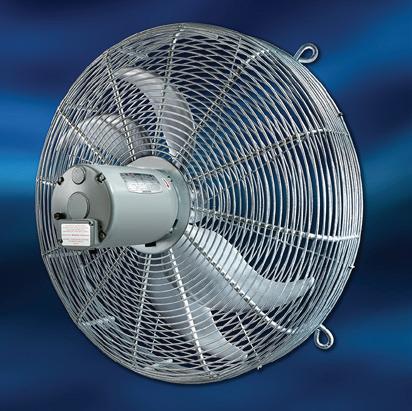
Barberi Electro, a branch of the Italian family-owned company Barberi Rubinetterie Industriali, is marking its 70th anniversary in 2024 with its first attendance at the IEEE PES Expo. The company is showcasing its wide range of products that have been exported to more than 50 countries and characterized

by a strong commitment to excellence in the electromechanical sector. Its products range from conductor accessories to connectors/splicers/terminators to bushings, insulators, switchgear and transformers and transformer components. These products offer customization options, which are tailored to meet the needs of customers. The company has total control over its production process, which takes place in Italy.
Barberi Electro | https://barberielectro.com/ Booth #3484
Legion Energy, which started in 2008 as an Indian company based in Bangalore, specialized in manufacturing of products related to casting, galvanizing and forging industry. It is currently catering to the power and telecom segment worldwide. Products include
Transmission Line Insulator
Hardware, Conductor and Earth Wire Accessories up to 765 kV, Substation
Hardware and Connectors from 11 kV to 765 kV, OFC (ADSS)/OPGW Cable
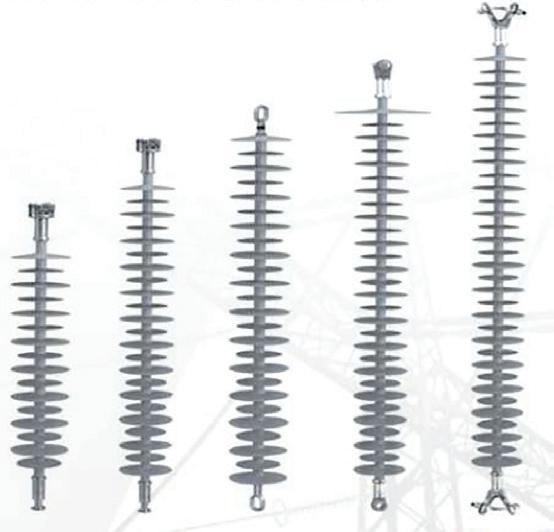
Accessories, including Joint Box and FODP. They also include Medium Voltage Covered Conductor Accessories for 11kV and 33 kV, Polymer Insulators up to 400 kV, steel forgings and galvanizing, railway overhead fittings and cantilever fittings. The company is supplying to more than 250 customers in more than 50 countries. The government of India has given NABL certification to the laboratory, which along with ISO 9001:2015 certification, wellequipped manufacturing and testing infrastructure, ensures that the products are manufactured under stringent quality control.
Legion Energy | www.legionenergy.in Booth #3188
AP Sensing Americas offers Distributed Fiber Optic Sensing solutions (DTS-Distributed Temperature, DAS-Distributed Acoustic & DSS–Distributed Strain). The company delivers technologically advanced hardware and software solutions for a wide range of applications including conductor temperature monitoring, hotspot detection and

monitoring and HSE and risk mitigation. The enterprise class systems improve operational efficiency, enhance public safety and enable timely situational response for critical infrastructure applications including transportation, high-security government sites, power generation (nuclear, coal, gas and electric), refineries (oil, gas and chemical), manufacturing, pipelines, power cabling - land and sub-sea based, water supply and infrastructure, and other sites for corporate and national security.
AP Sensing Americas | www.apsensing.com Booth #6544
GAZ is the manufacturer of Ni-Cd batteries from Zwickau, Germany. For 140 years on the market, the company makes Ni-Cd energy storage, which exceeds IEEE requirements and is manufactured under strict control with technology. The batteries have 20+ years of battery lifetime and minimum maintenance requirements. They are robust, featuring abuse-proof single-cell design, tightly fixed electrode stack, strong internal connections and improved construction of critical parts. The GAZ batteries have complete protection to sustain tough handling conditions. GAZ Ni-Cd batteries are reliable in wide temperature ranges and can last a long time at high temperatures. Features also include no electrolyte freezing below 32°F, the widest operational temperature range of –40 °F to +125 °F and 20+ years in constant operation. GAZ is designed for applications requiring expected reliability with the minimum of routine maintenance. When not in use, GAZ offers a longest shelf life.
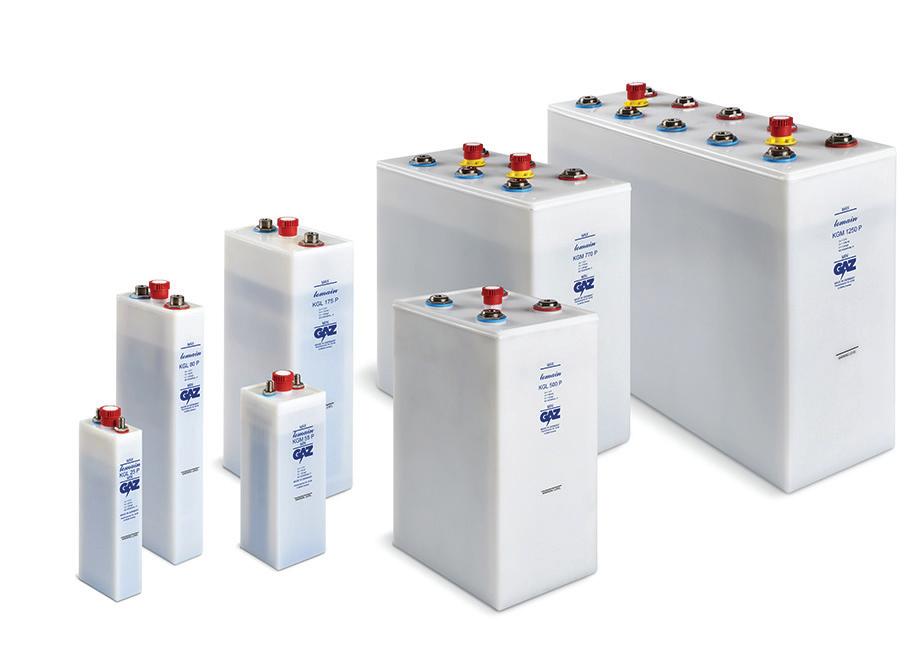
GAZ Energy LLC | https://www.gaz-gmbh.com/en/ Booth #7049
Michels Power, Inc. supports America’s electrical backbone by delivering comprehensive overhead and underground construction services for 69 kV to 765 kV electric utility systems. As one of the largest private power utility electrical contractors in the United States, the company has a team of skilled project management and construction management leaders, experienced field construction resources and an equipment fleet strong enough to build transmission and distribution power lines and electrical substations from coast to coast. The company supports renewable energy initiatives, installing overhead and underground collection systems, overhead and underground transmission lines, substations, switchyards, interconnects and battery energy storage systems (BESS) for renewables such as wind and solar. The comprehensive project oversight ranges from logistics and scheduling to quality assurance and construction. The company provides Engineering, Procurement and Construction (EPC)


delivery models on complex projects involving transmission lines, substations, communication systems, structure foundations, heavy civil and horizontal directional drilling.
Michels Power, Inc. | https://www.michels.us/
Booth #4455
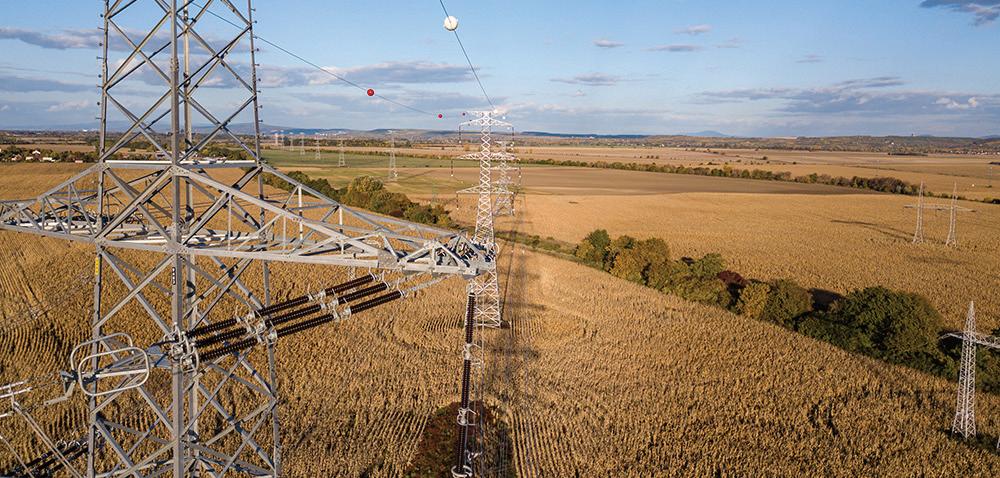
PPC porcelain longrod insulators are used in transmission and distribution lines. The strength of the porcelain and modern design make them a safe and reliable solution for demanding environments. Compared to other types of insulators, they are suitable for a safe and stable power supply without power failure with low operating costs. Under polluted conditions, insulators can be subjected to extreme electrical field stress causing tracking and erosion. Porcelain insulators will only show minor surface marks but maintain 100% mechanical strength. Porcelain Long Rod insulators are not affected by UV, wind, rain, ice and temperature changes. They will provide reliable service for the life of the conductors and towers. Porcelain longrod insulators have high dielectric strength. Aluminum oxide ensures the low porosity of porcelain. This ensures the porcelain is impervious to moisture and will not lose its mechanical properties due to freezing. All components of porcelain insulators are fully recyclable in the manufacturing process and throughout their life cycle. Compared to other insulation materials, they leave a significantly lower carbon footprint. Once properly installed, the porcelain longrod insulators retain reliability for decades.
PPC | www.ppcinsulators.com
Booth #6313
With the rise in renewables usage and grid congestion, extreme weather and the push for optimization and digitization, keeping the electric transmission grid in check has never been more vital. PrismaPower, the company’s suite of power grid monitoring solutions, enables utilities and TSOs to accurately monitor overhead and underground power lines for thousands of miles, in real-time and without installing extra sensors on power lines or towers. Instead, it’s an easy deployment, using the existing optical fiber network on top of the transmission grid (OPGW). PrismaPower applications can measure wind metrics on every span for Direct Line Rating (DLR) and support Ambient Adjusted Rating (AAR) regulatory demands such as FERC order 881. Not only does it enhance capacity, but with the capability to detect extreme weather events, from icing to lightning strikes and wildfires, it boosts grid resilience. Enhanced monitoring features that alert for electrical issues, from short circuits to flashovers, and the option to pinpoint physical vandalism and vegetation hits ensure grid reliability and asset integrity.
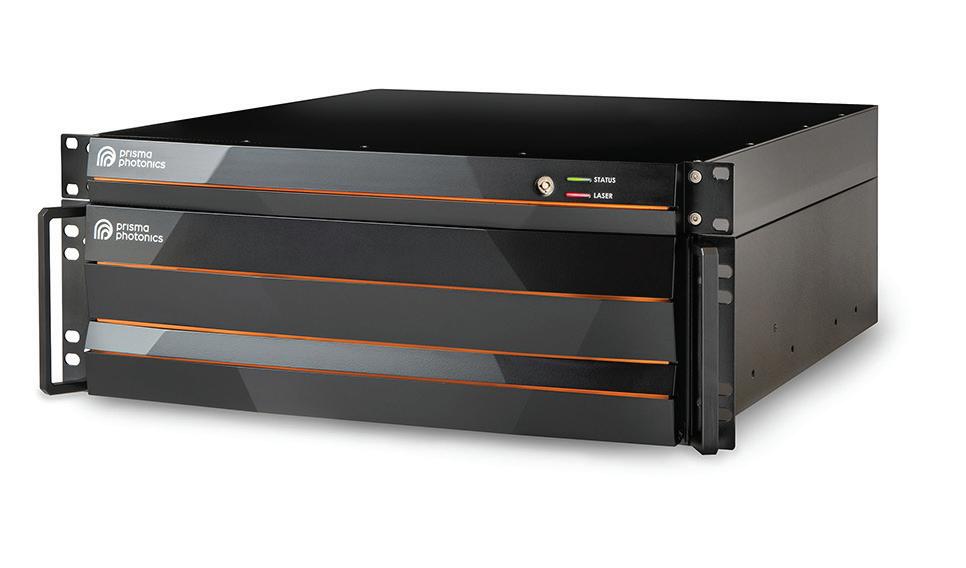
PrismaPower | www.prismaphotonics.com
Booth #4469

Checon, a provider of advanced electrical contact products, will showcase its latest innovations in electrical contact products tailored for power distribution, electric grid infrastructure, EV battery systems and solar applications. The company’s offerings highlight advanced materials, multilayer metal systems and fabrications for both highvoltage and high amperage applications. Its exhibit will feature its high-performance contact materials, such as tungsten and copper tungsten, ensuring durability and arc resistance. These materials are formed for subassembly fabrication using manufacturing techniques such as precision machining and brazing to produce heavy-duty components that significantly enhance an electrical systems’ performance and reliability.
Checon | https://www.checon.com
Booth #5356
Taihan Fiberoptics, a company specializing in Korean Communication since 1974, now focuses on the overhead line business. At, IEEE PES T&D 2024, the company will mainly showcase OPGW, ACSS and ACSR solutions. Its OPGW cables

protect overhead transmission lines from lighting, prevent faults and offer reliable communication pathway via optical fibers. With varieties like stranded SSLT, central non-metal, central SSLT, central aluminum clad SSLT, it tailors designs for diverse needs globally. Since 2001, the company has supplied and operated in more than 61 countries, ensuring the stability and reliability by producing the fiber used in OPGW in-house, starting from the drawing of ingots through the VAD process. Furthermore, the ACSR is widely employed in electrical power transmission and distribution, offering performance in overhead applications with long spans, high wind or ice loads. Similarly, the ACSS is preferred for overhead distribution and transmission lines due to its ability to minimize thermal sag, making it suitable for regions with significant temperature variants. Its commitment to stability extends to the production of aluminum, where it handles the entire process in-house, starting from the drawing of ingots using the Properzi process.
Taihan Fiberoptics | https://taihanfiber.com/eng/main/main.html
Booth #2895
Presspaper and pressboard are approved and established cellulose-based insulation materials. They are produced in a wide variety of types and qualities in the form of pressboard, presspaper, kraft paper, corrugated board, presspaper with partial

resin coating, strips, ladder ducts and ladder grids. Depending on the type of cellulose, fiber preparation and machine settings, the company offers various types of presspaper and pressboard with very special qualities. These cellulose products are manufactured on special paper machines. It has one of the world’s largest production facilities for continuously manufacturing presspaper as well as presses for the production of pressboard. The composition and properties of presspaper and pressboard for electrical insulation are standardized according to IEC 60641. The company also manufactures customized special types.
KREMPEL GmbH | https://krempel.com/de
Booth #2976
PLP and FulcrumAir have partnered to develop and release a robotic system for installing conductor spacers on overhead power lines. The CSR-18 robot is an unmanned system that automatically and precisely installs PLP’s CUSHION-GRIP Twin Spacers on bundled conductors, helping to significantly reduce safety concerns for lineworkers while also increasing overall efficiency. The CSR-18 accurately installs PLP’s CUSHION-GRIP spacers at any pre-set distance to within a 5 cm tolerance. The spacers are positioned at precise right angles to the conductor to ensure optimal performance, and the bolt is torqued to the utility

Get more value out of your inbox.
Get more of what you need to stay in the know with valuable insights and timely product news. Sign up today for one of our newsletters.
Delivers timely news and information from the power-delivery industry.
Follows the utility industry’s progression to an automated and efficient power grid.
Insights into the culture and work life of electric line workers: field operations tools and techniques, r odeo news and photo galleries.
Shares how utilities and their partners are building out T&D infrastructure.
Sign up today at: tdworld.com/newsletters/signup


or PLP’s exact specification. This sequence happens automatically while also logging important quality control data, such as torque values and spacer locations, enabling the utility to easily reference it for future inspection and maintenance needs. For utilities who wish to increase productivity even more, multiple robots can be placed on the phase conductors simultaneously to rapidly install the required spacers on two adjacent spans from one initial set-up location. Once complete, the bucket truck or crane can move two structures down the line to repeat the sequence, eliminating the need for spacer carts.
PLP | Plp.com
Booth #3220
Cable reliability is top of mind for electric utilities, which is why Southwire now provides a 360° Capital Rehabilitation program; a turnkey service to improve transmission and distribution system reliability.
The company’s method includes cost-effective and capital-efficient solutions
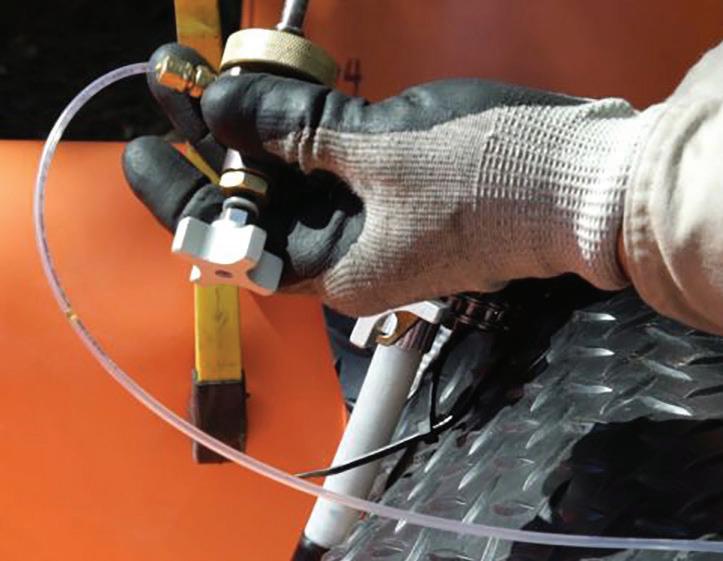
including Digital Grid Resiliency Programs to assess overhead cable systems, Cable System Field Assessments to test underground cable systems, Cable Rejuvenation to restore underground cable to a like-new condition and Cable Replacement and Installation.
Southwire | www.southwire.com
Booth #5515
The new modular factorypackaged SENS PowerCab2 can be custom-built based on customer specifications. Features include indoor/outdoor NEMA 1 and 3R, integration of multiple DC breaker panel distributions and multiple battery options including eco-friendly sodium and configurable based on customer loads.
It also has VRLA battery and thermal runaway monitoring, the ability to add external AC breaker panel bypass switches and an option for best battery selector (BBS) and for using breakers instead of disconnect switches.
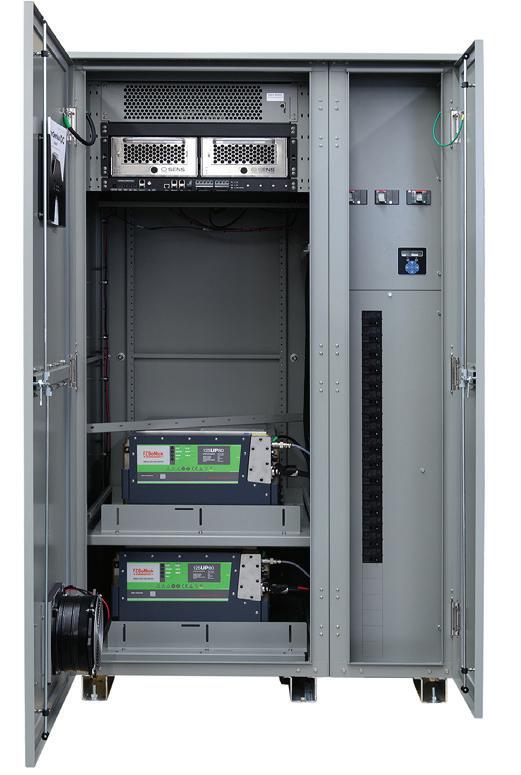
SENS, Stored Energy Systems | https://www.sens-usa.com
Booth #7015






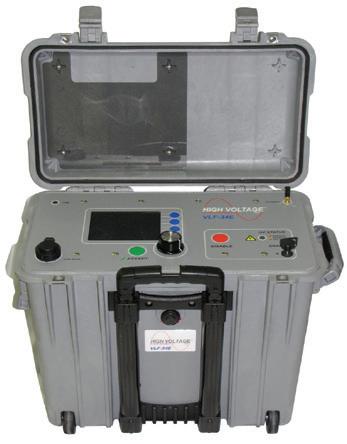


Nick Cummins, a son of a lineworker, has spent the last two decades in the line trade.
• Born in Beckley, West Virginia, and has a sister, Melody.
• Married to Rachell for 17 years and they have four children: Ryan (13); Jaxson (8); Logan (5); and Emmalyn (3).
• Enjoys weight training, being outdoors, hunting, fishing, and spending time with his family.
• Inspired by his father and the contributions he has made to the line trade. While he and his dad traveled to chase highline work, his mom and wife were both very supportive, packing bags, making lunches and greeting them when they returned home.
• Has a passion for travel and enjoys sharing his experiences, work methods and techniques for stringing wire, working with a helicopter, or doing barehand and energized work with his crews.
My dad, who went by the nickname, “Check Check,” inspired me to pursue a career in line work. He just retired after working in the field for 42 years. I remember having an interest in the trade from a young age. I wanted to follow in my father’s footsteps, and he told me he would get me into the trade under one condition — I had to serve as a groundman for a year. He explained that there’s important work on the ground, and this work would make me a better lineworker. After fulfilling his expectations, I was able to join him on the line.
As a superintendent for I.B. Abel, Inc., I travel across the country to do transmission line work. Each day varies as a superintendent. I could have my plan set for the day, and then an emergency pops up, and it completely changes it. To mitigate my stress level and focus on my health and wellness, I get up at 3 a.m. and go weight train for two hours. I then commute into work and start my day with the crew at 7 a.m. No matter where I am in the country, I stick to this regimen. I then conduct a morning safety meeting, and we perform our flex and stretch. From that moment on, I contact my customer to see if they have any direct needs for the day and reach out to the other general foremen on other projects.
My most memorable storm happened when I was an apprentice and about to top out. We got dispatched to New Hampshire for an ice storm and got hammered with a blizzard. I remember driving down a road, and a lady came out of her front door, ran down the sidewalk and stopped my bucket truck. She had one question: Would I have the lights on for Christmas dinner tonight? I explained that we were doing

everything that we could, and we went back to work. When we were driving back to the main road, I looked over, and we saw her lights on, and everyone was seated around the table.
In Hartford Connecticut, I worked on a barehand crew to replace hotspot sleeves, dead end bodies and jumper paddles with implosive connectors on the energized 345 KV line. It was a record-breaking project because the implosive sleeves had never been test fitted or used for this size wire before and under these energized conditions. That alone had its challenges and obstacles, but we were very successful. When you’re doing barehanding or any kind of live line work, you must prepare yourself mentally and physically for that exposure and be very experienced. It’s a privilege to be able to barehand.
Safety, in my opinion, is paramount. There’s nothing else in this industry that holds a higher value. You need to start and end each day with safety and focus on it throughout the day. If you’ve been in the industry long enough, you’re going to see or hear something bad that has happened. If we let our guard down, we are vulnerable, but everyone is responsible for his or her own safety and of those around us. To change the culture of safety, I earned my Certified Utility Safety Professional (CUSP) and Electric Safety for Utilities (ESU) credentials.
I don’t see myself doing anything different from a career’s perspective. In the future, I’d like to continue my career, my growth, and my development. I do want to become better educated to improve my team and grow on the transmission side and be able to help other departments like distribution, substation, and communications.
VP, Endeavor Energy Group
T&D World & Utility Analytics Institute
Mark Johnson
Phone: 720-371-1799
Email: mjohnson@endeavorb2b.com
Director, Business Development
Stephen M. Lach
Phone: 708-542-5648
Email: slach@endeavorb2b.com
Account Manager
Brent Eklund
Phone: 303-888-8492
Email: beklund@endeavorb2b.com
Account Manager
Steve Rooney
Phone: 781-686-2024
Email: srooney@endeavorb2b.com
Account Director
Bailey Rice
Phone: 630-310-2598
Email: brice@endeavorb2b.com
Account Manager
John Blackwell
Phone: 518-339-4511
Email: jblackwell@endeavorb2b.com
Sales Director, Energy
Jeff Moriarty
Phone: 518-339-4511
Email: jmoriarty@endeavorb2b.com
Sales Support Manager
Debbie Brady
Email: dabrady@endeavorb2b.com
International Linemen’s Rodeo, T&D World Buyers Guide
Sam Posa
Phone: 913-515-6604
Email: sposa@endeavorb2b.com
Utility Analytics Institute Memberships
James Wingate
Membership Development Manager
Phone: 404-226-3756
Email: jwingate@endeavorb2b.com
Utility Analytics Institute, Smart Utility Summit and Smart Water Summit
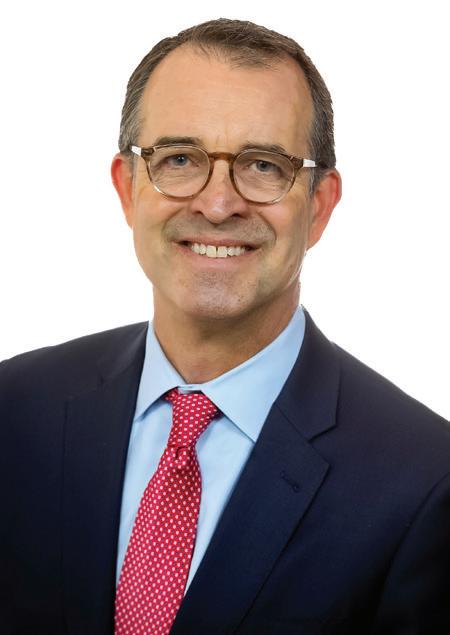
It is a national priority to expand transmission capacity. Last fall, the US Department of Energy National Transmission Needs Study found that the U.S. needs to double intra-regional transmission capacity by 2035 and quadruple interregional capacity. Other studies from Princeton and MIT find that transmission capacity must double or triple by 2050, to maintain overall grid reliability and connect a changing resource mix to increasing load growth due to electrification and the onshoring of industry from federal legislation.
Large-scale transmission also provides numerous benefits. It improves grid reliability and resilience, making the country less vulnerable to power outages or other security threats. Studies have demonstrated the value of transmission to consumers, especially during extreme weather events, by providing an insurance policy against large-scale loss of power plants due to equipment failures, or interruptions to natural gas supplies by delivering power from other less affected regions. Transmission also allows for the interconnection and delivery of clean, lower-cost power to consumers, reducing electric bills.
Building large-scale transmission is notoriously difficult. Construction of new high-voltage transmission lines has significantly slowed in the United States over the last decade, and there are high-profile examples of major transmission projects taking almost 20-years to complete.
However, there are also numerous instances of successful transmission expansion that prove such development is possible. In our recent report, Fostering Collaboration Would Help Build Needed Transmission (https://wiresgroup.com/fostering-collaboration-would-help-build-needed-transmission/), we reviewed dozens of successful major transmission expansion efforts to draw lessons from what has succeeded in the past. We found that collaboration has been a key element of U.S. transmission system expansion. The most important aspect of collaboration is the sharing of information, including expertise held by experienced system planners. All of the examples we reviewed included elements of information sharing that led to a successful outcome. Other common features of successful transmission expansion planning included voluntary interactions by willing participants, equitably shared cost allocation and recovery, and upfront certainty and agreement on project ownership.
We found collaboration provides multiple benefits such as improving the quality and quantity of information used in transmission planning, enabling a more holistic view of system needs, allowing better use of existing assets and rights-of-way, driving more efficient technology choices, facilitating faster development, allowing for improved coordination of outages during and after construction, and facilitating stakeholder and policymaker consensus on need and cost recovery.
Collaboration for transmission planning and development is not surprising, given that there are 330 owners of transmission
assets spread across the nation’s three integrated networks and that every major transmission asset affects neighboring systems and the regional network. The transmission system is a shared network that cannot be expanded without extensive coordination among its various owners, operators, and planners.
The finding is also not surprising given the natural monopoly characteristics of transmission. In contrast to structurally competitive sectors such as generation, the standard elements of a natural monopoly persist in transmission. It remains more efficient to have one owner of the system in a given area, with economic regulation of that owner, and to avoid duplication of network assets and other utility functions.
Transmission planning collaboration has been a national priority for most of the electric industry’s history. Our review of legislative and regulatory actions going back 100 years suggests that there have been longstanding and continuous efforts to encourage collaboration among transmission entities. In some cases, we found the delay caused by limiting collaboration could amount to a few billion dollars in a single region.
Policymakers should be interested in fostering collaboration because policy choices significantly impact the amount of information sharing and other forms of collaboration that will occur, ultimately impacting the value of transmission expansion for consumers. The electric supply industry is now partially regulated and partially competitive, due to policies that introduced competition into the generation sector. In general, in a regulated natural monopoly sector information sharing is allowed and, ideally, encouraged.
Collaboration is entirely compatible with, and supportive of, competition in upstream and downstream sectors that are structurally competitive. In particular, we find that transmission policies that prioritize collaboration and information sharing are in fact, pro-competitive by enabling more competition within the generation sector.
Effective collaboration among transmission owners, operators, and planners has been a critical element of building needed regional and interregional transmission over multiple decades and across the country. Unfortunately, a number of barriers remain that prevent collaboration. Information sharing is sometimes discouraged by incentives (intentional or otherwise) created through regulatory efforts to depart from models that have a proven track record of fostering collaboration. Regulations directing collaboration may not be able to overcome such incentives, so regulatory policy should address both incentives and rules. Policymakers should therefore ensure that regulatory rules foster, rather than hinder, information sharing and other forms of beneficial collaboration.
Given the challenges of developing electric transmission and the need for infrastructure expansion in the coming decades, it is especially critical to learn from hard-earned experience in terms of what drives success. ROB GRAMLICH is president

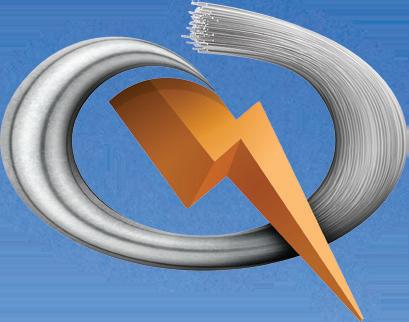


Quanta is a family of companies with the largest skilled labor force in North America – delivering comprehensive infrastructure solutions for the utility, communications, and energy industries.